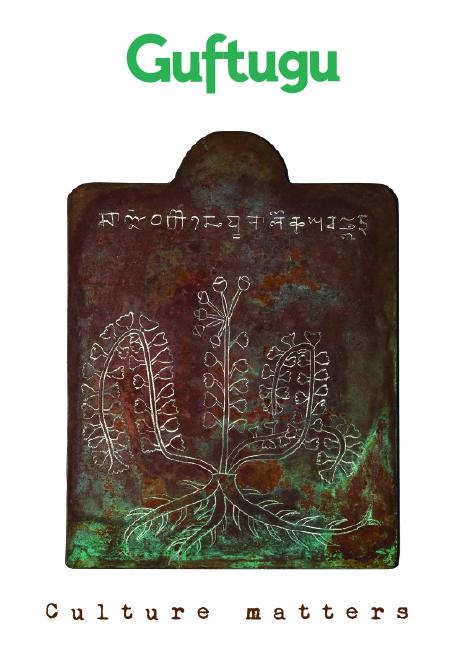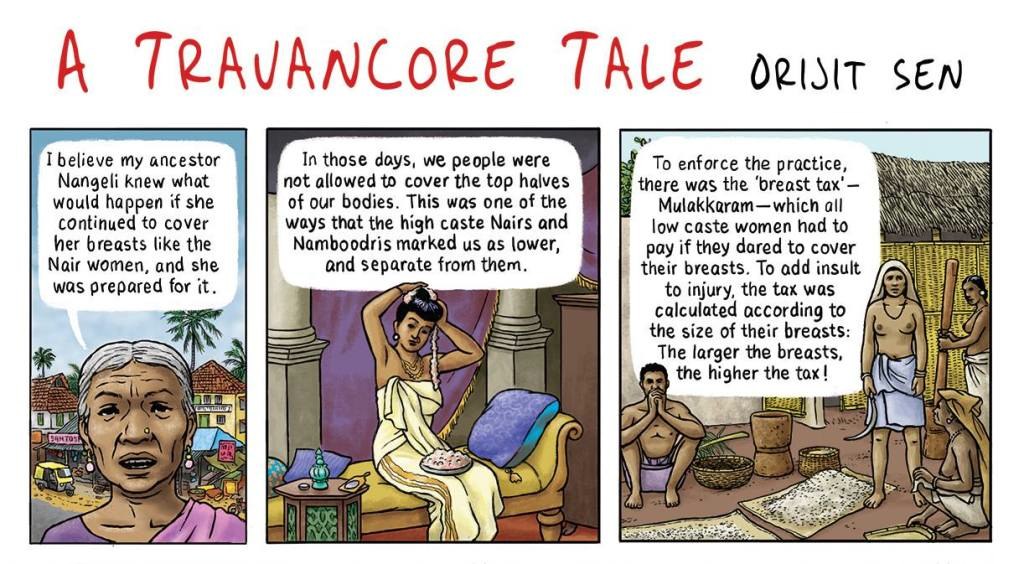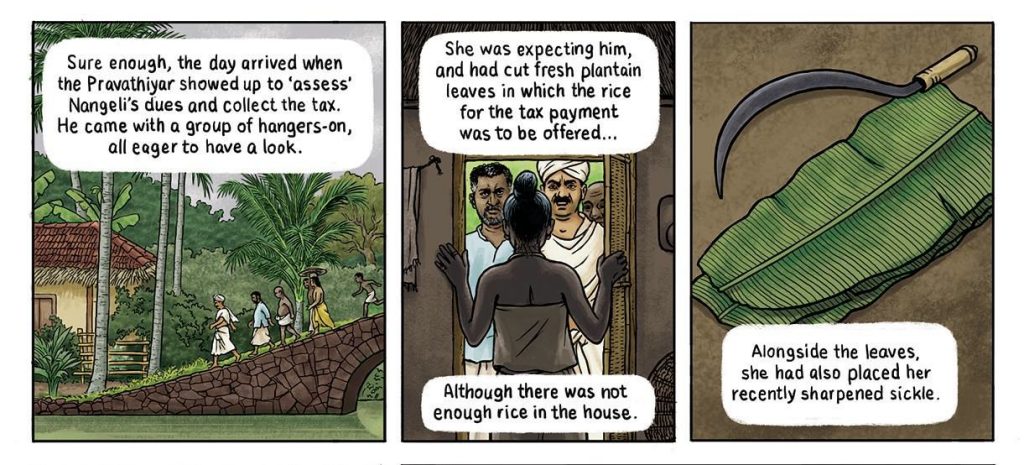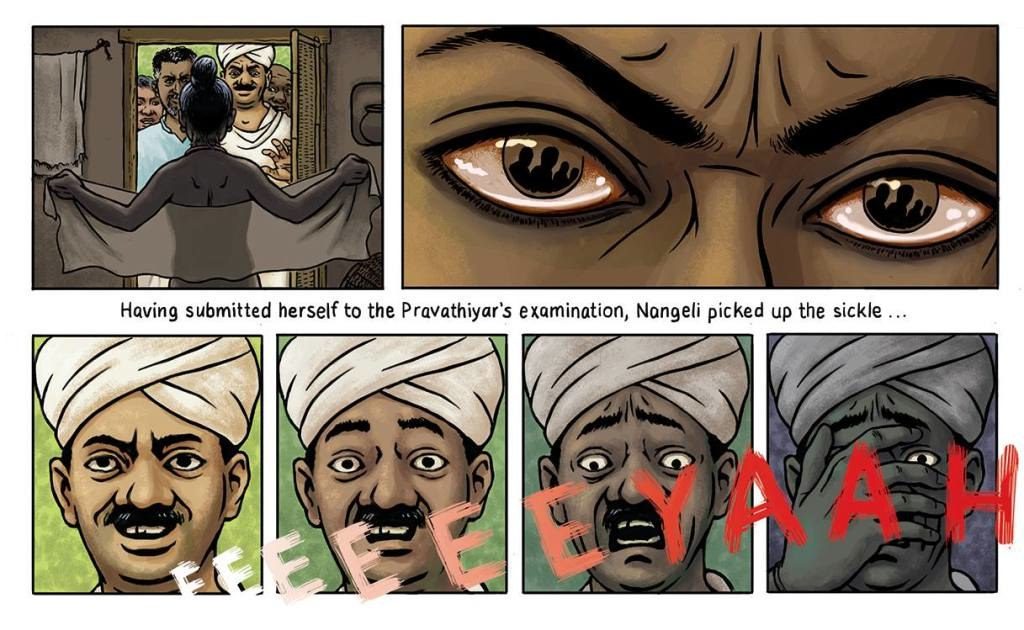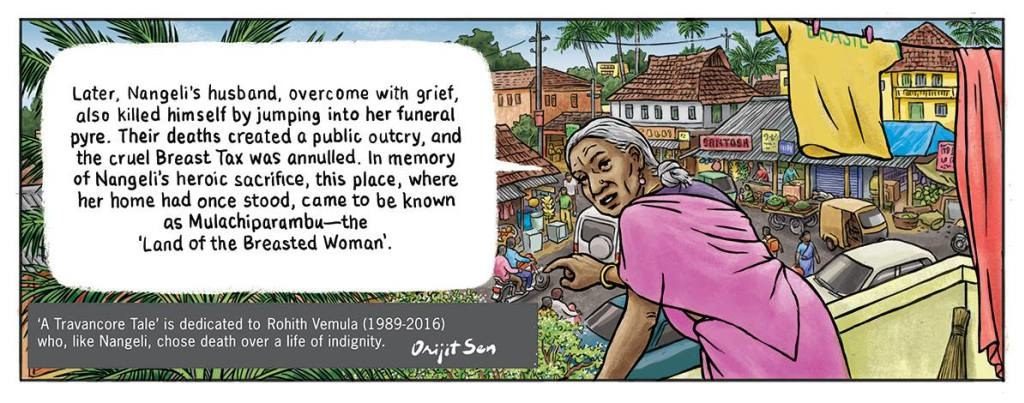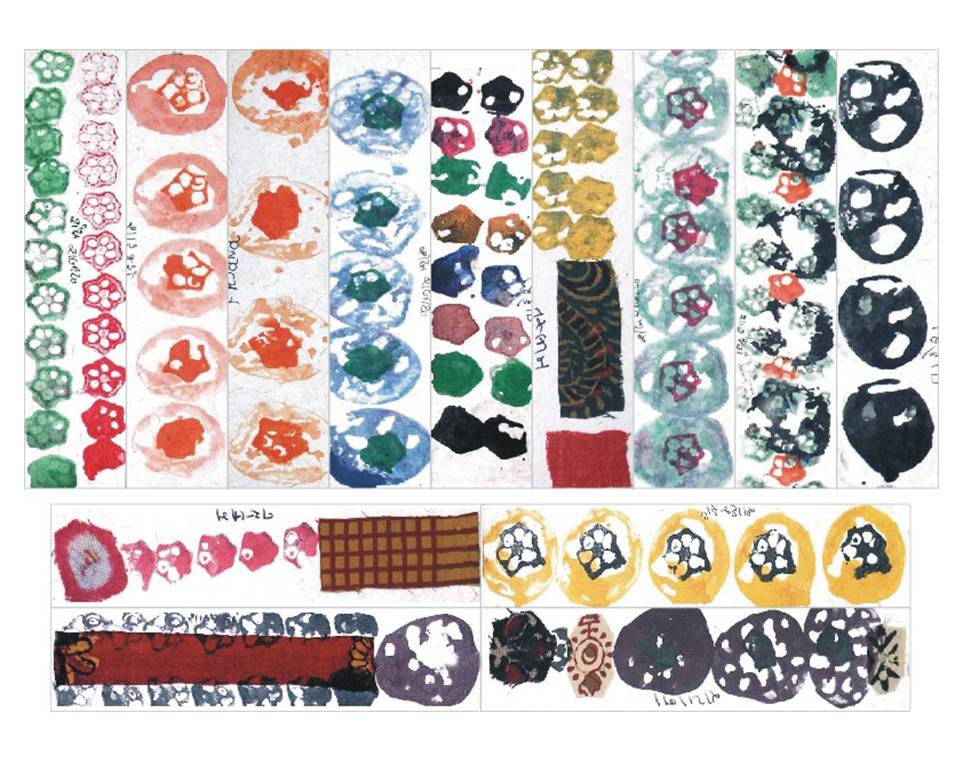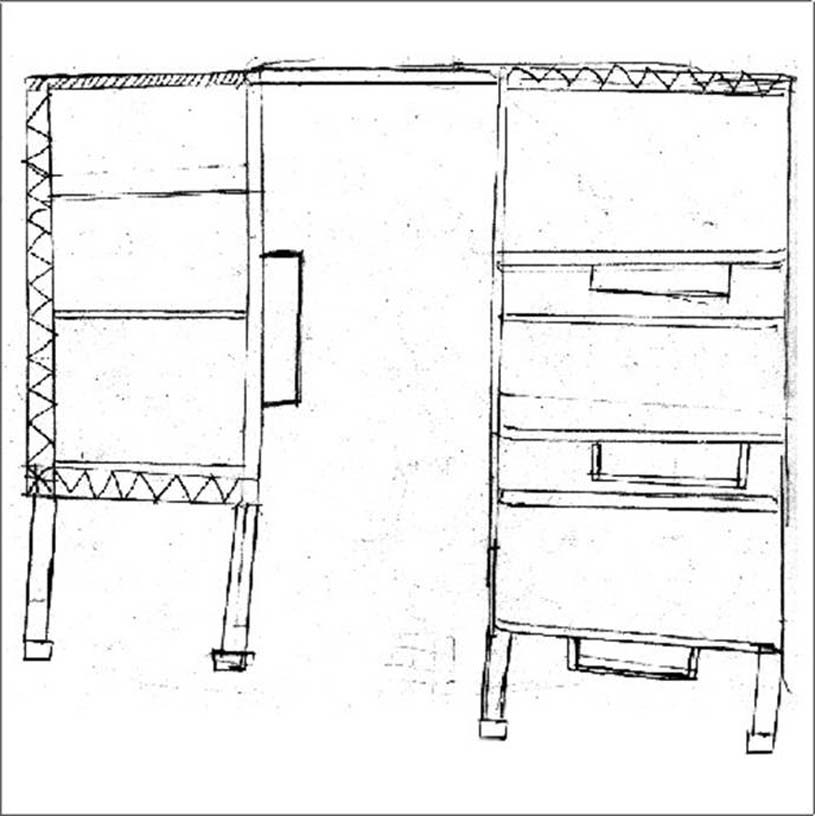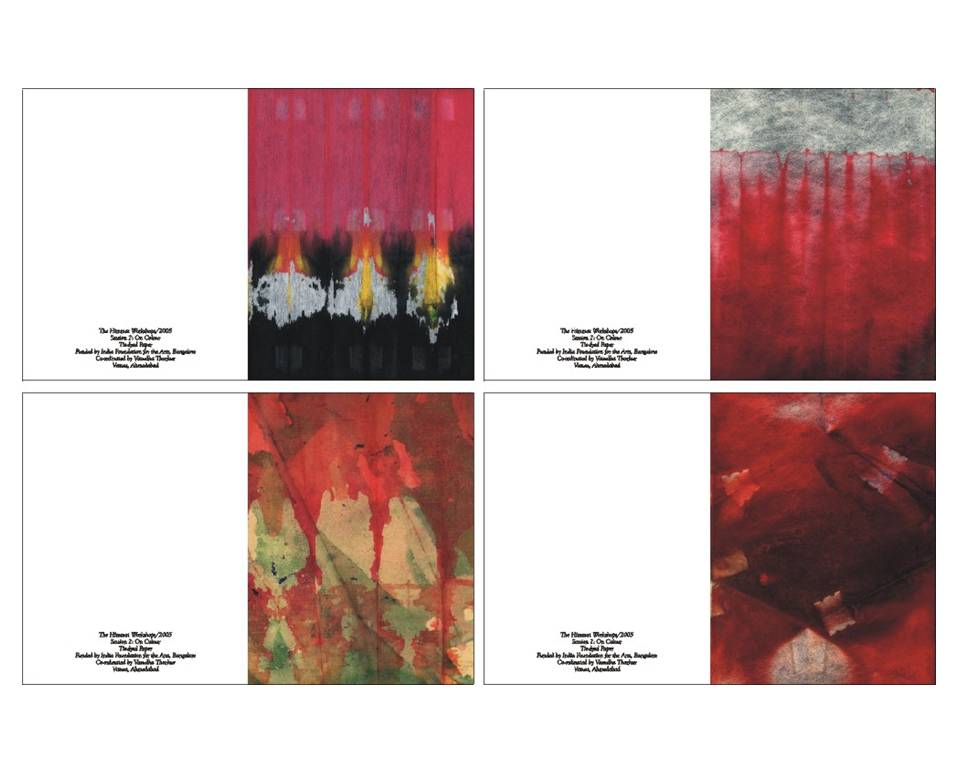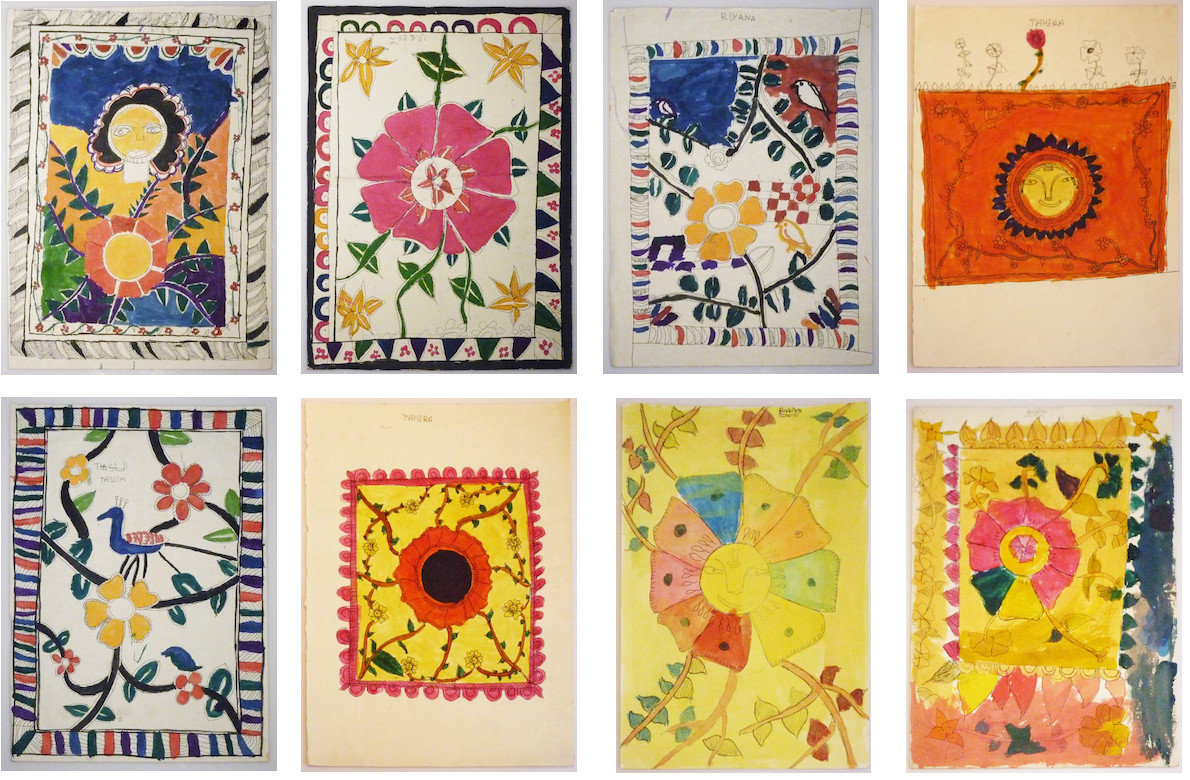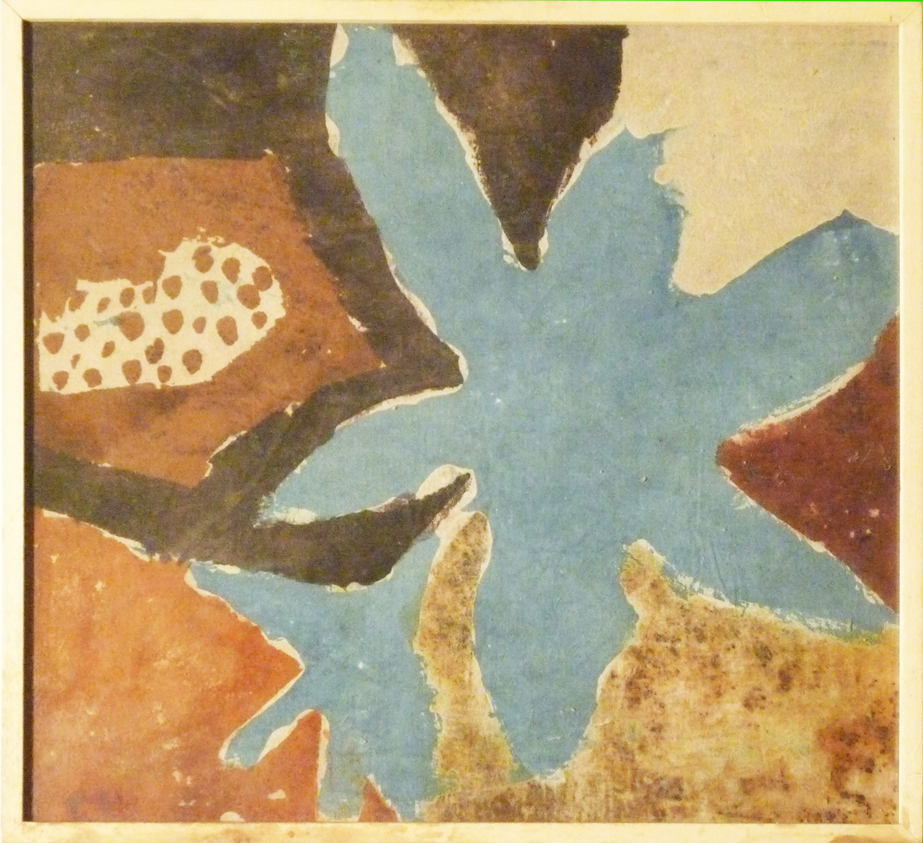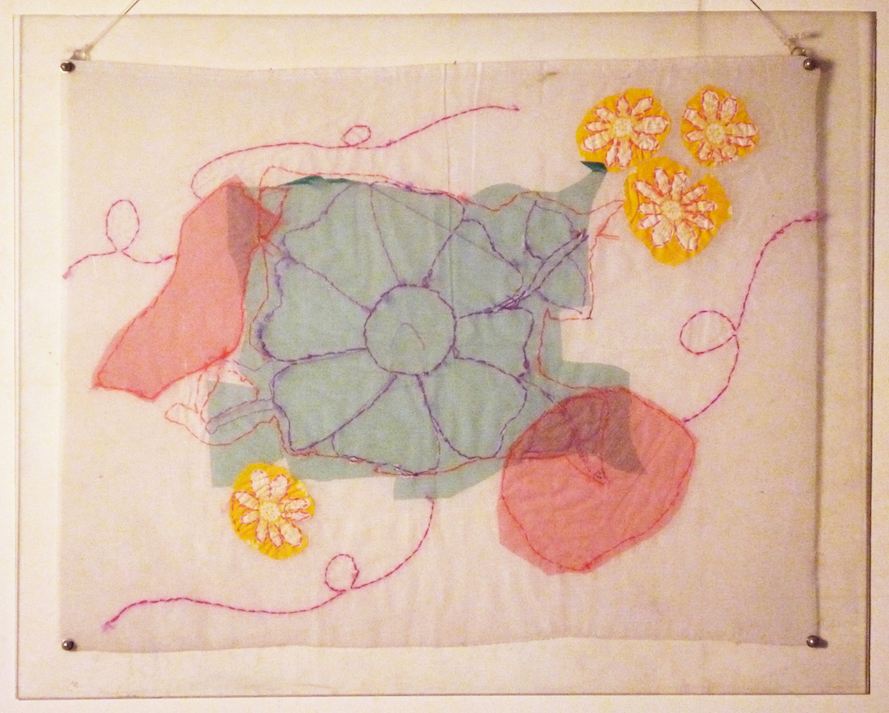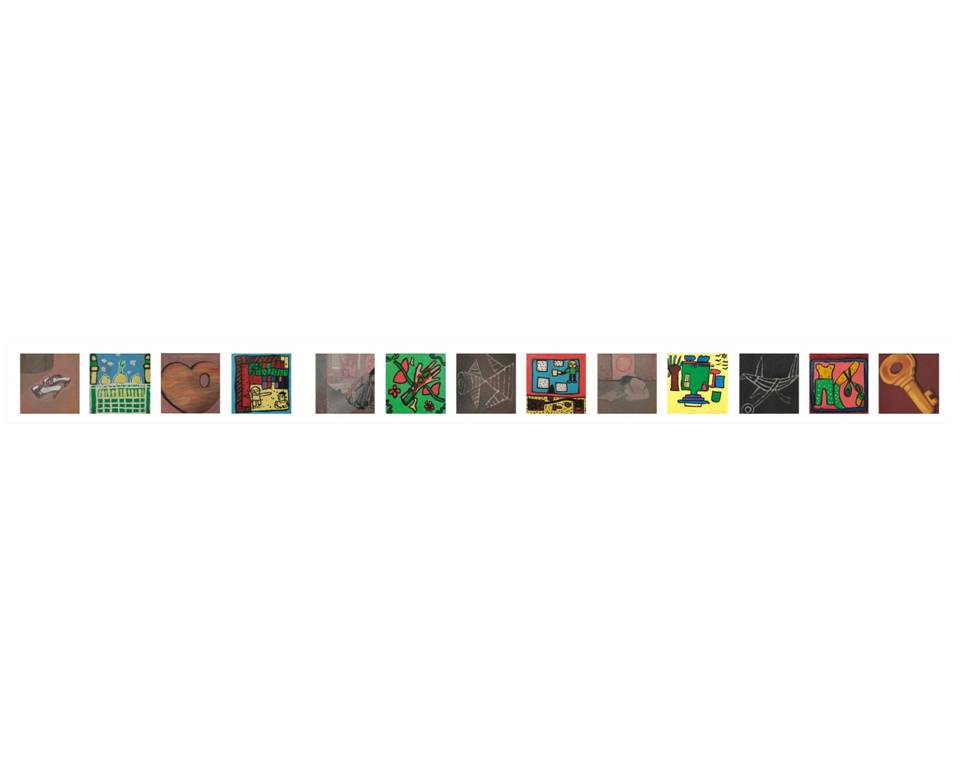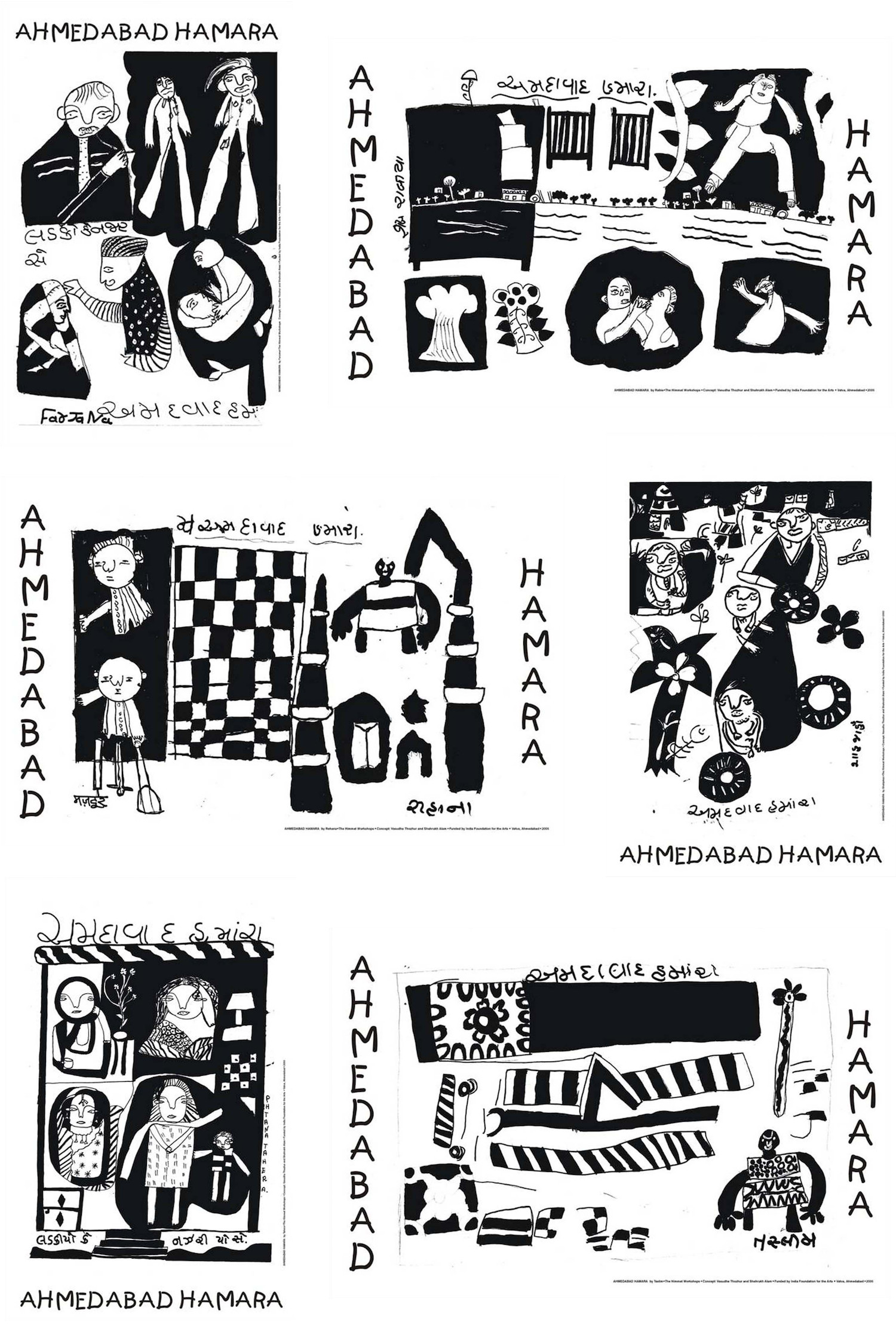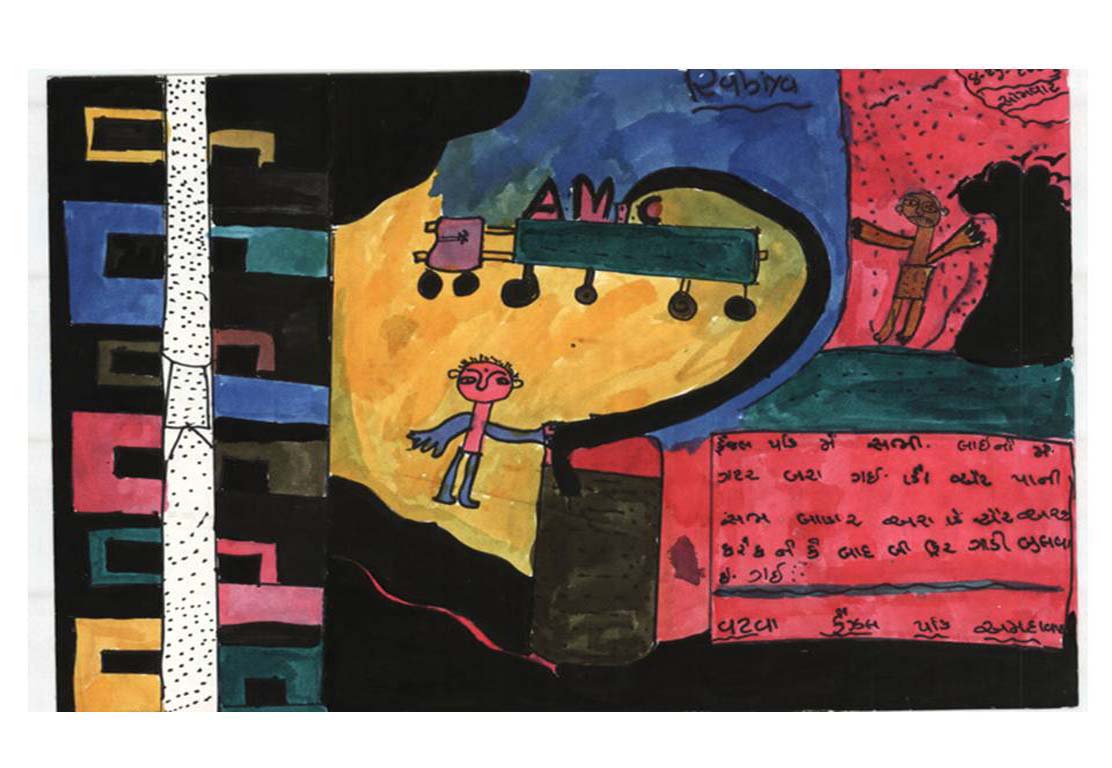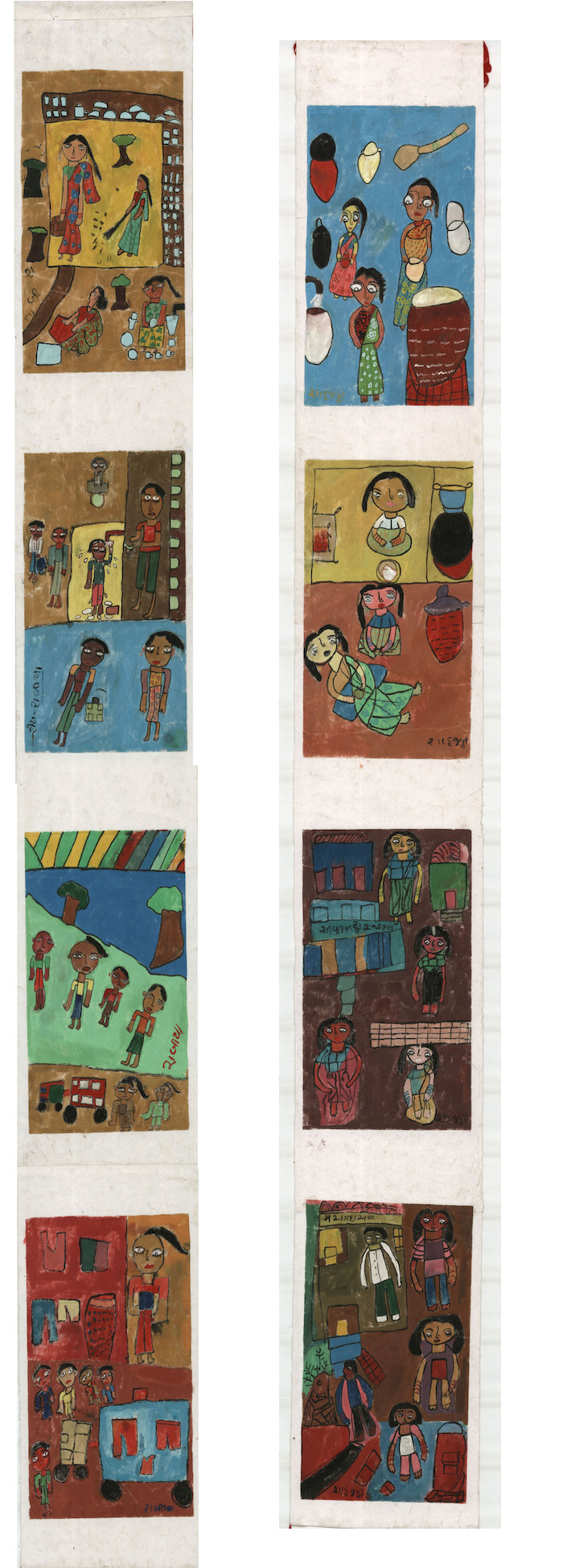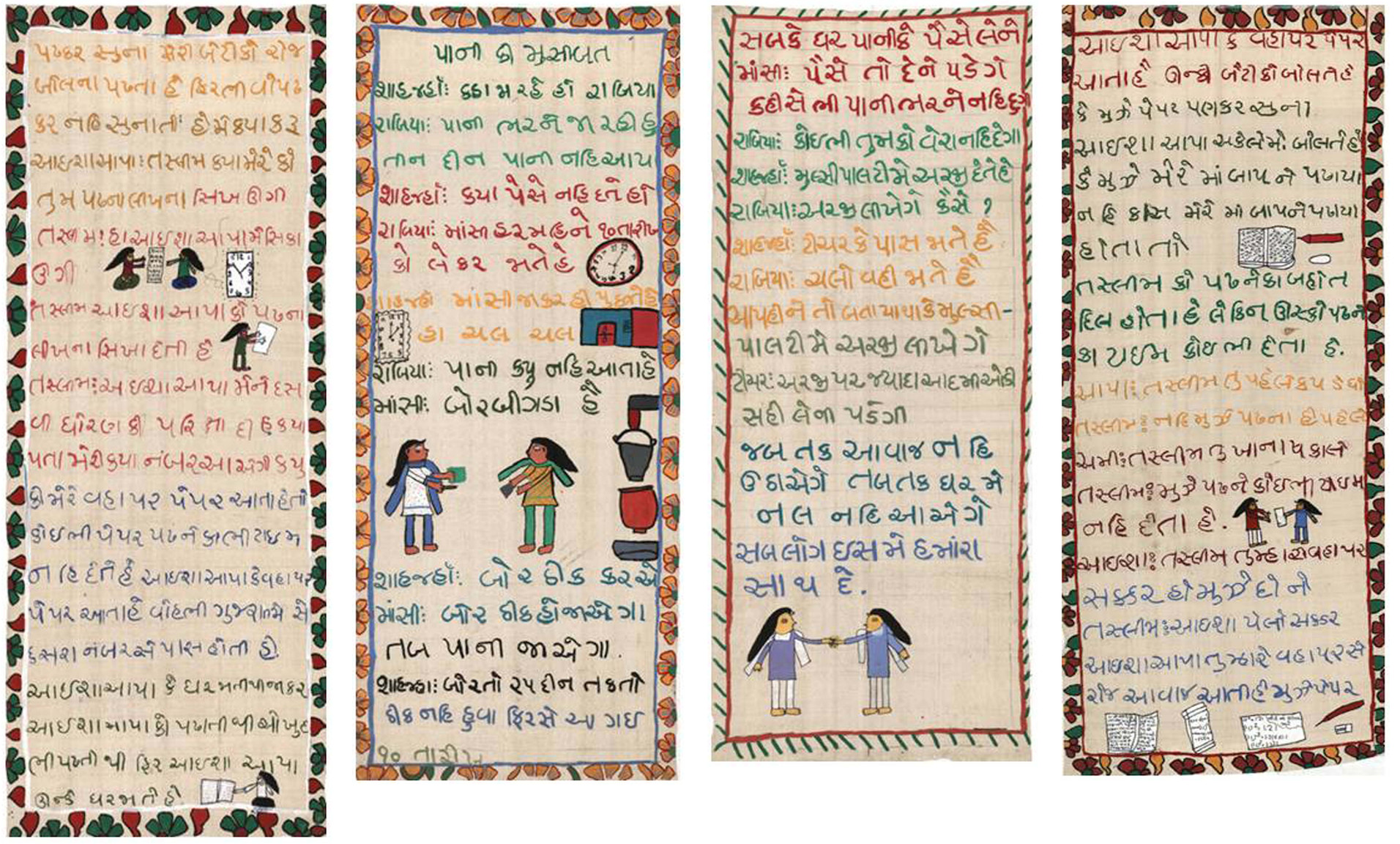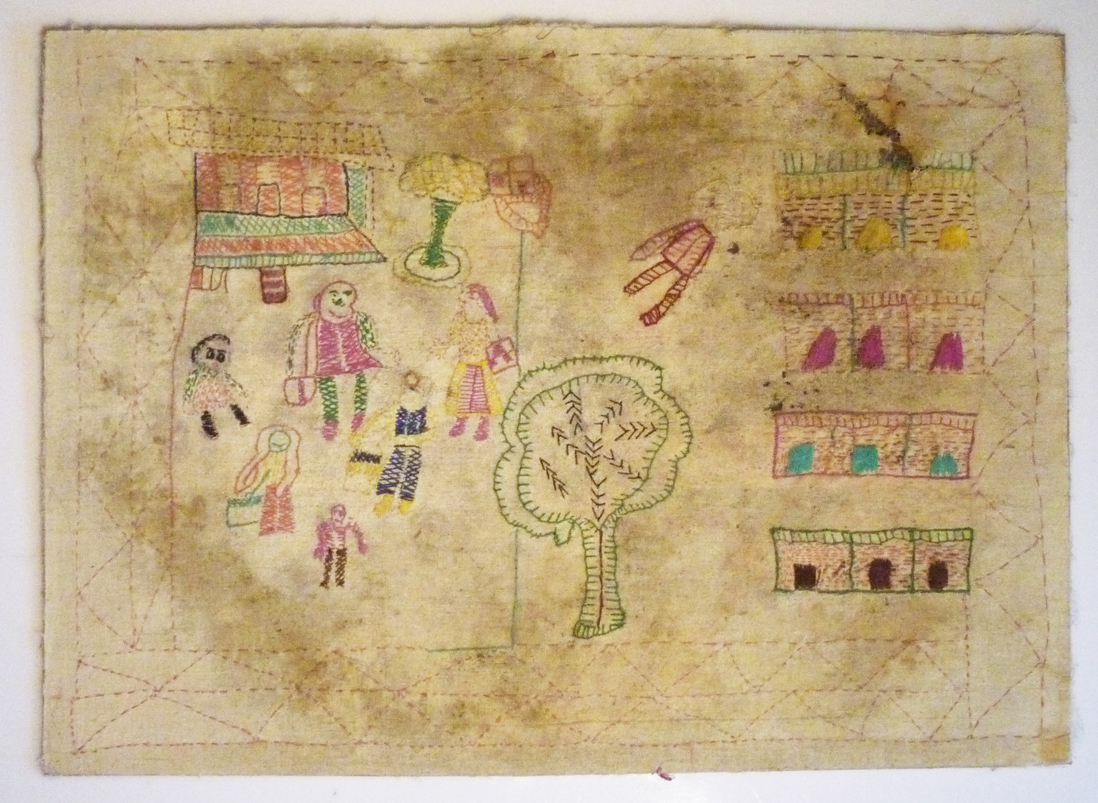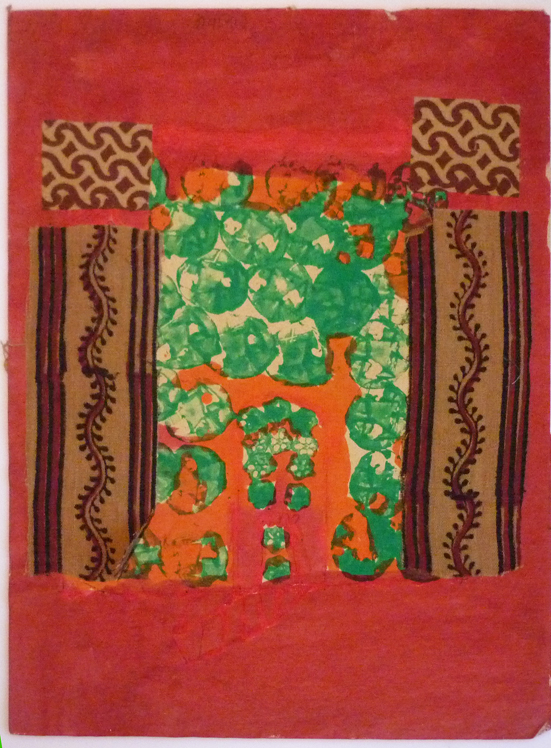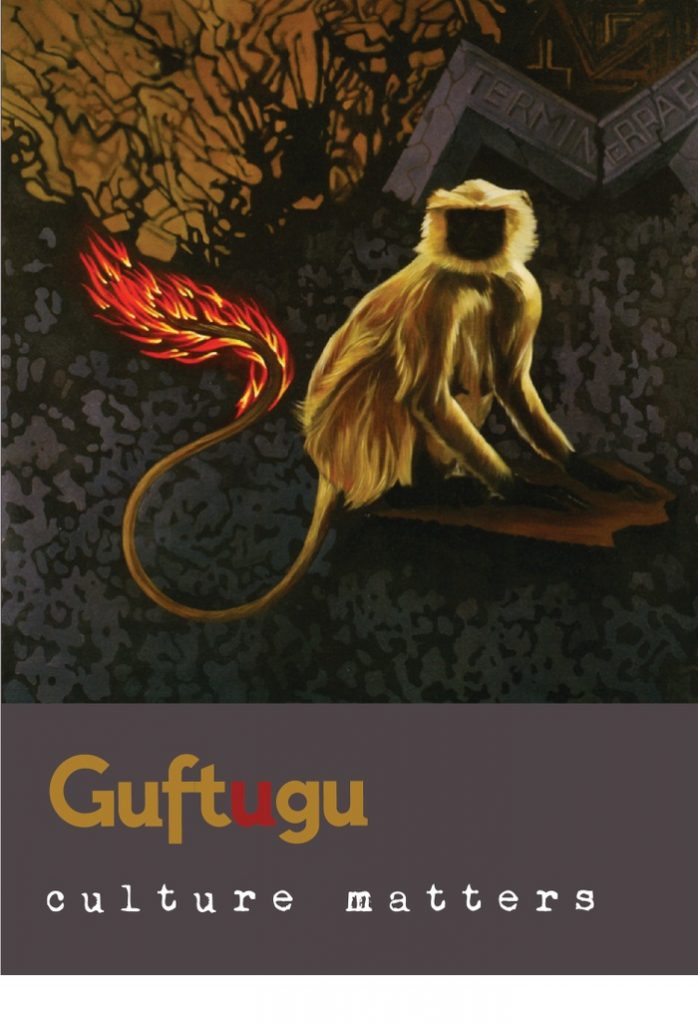From the Editors
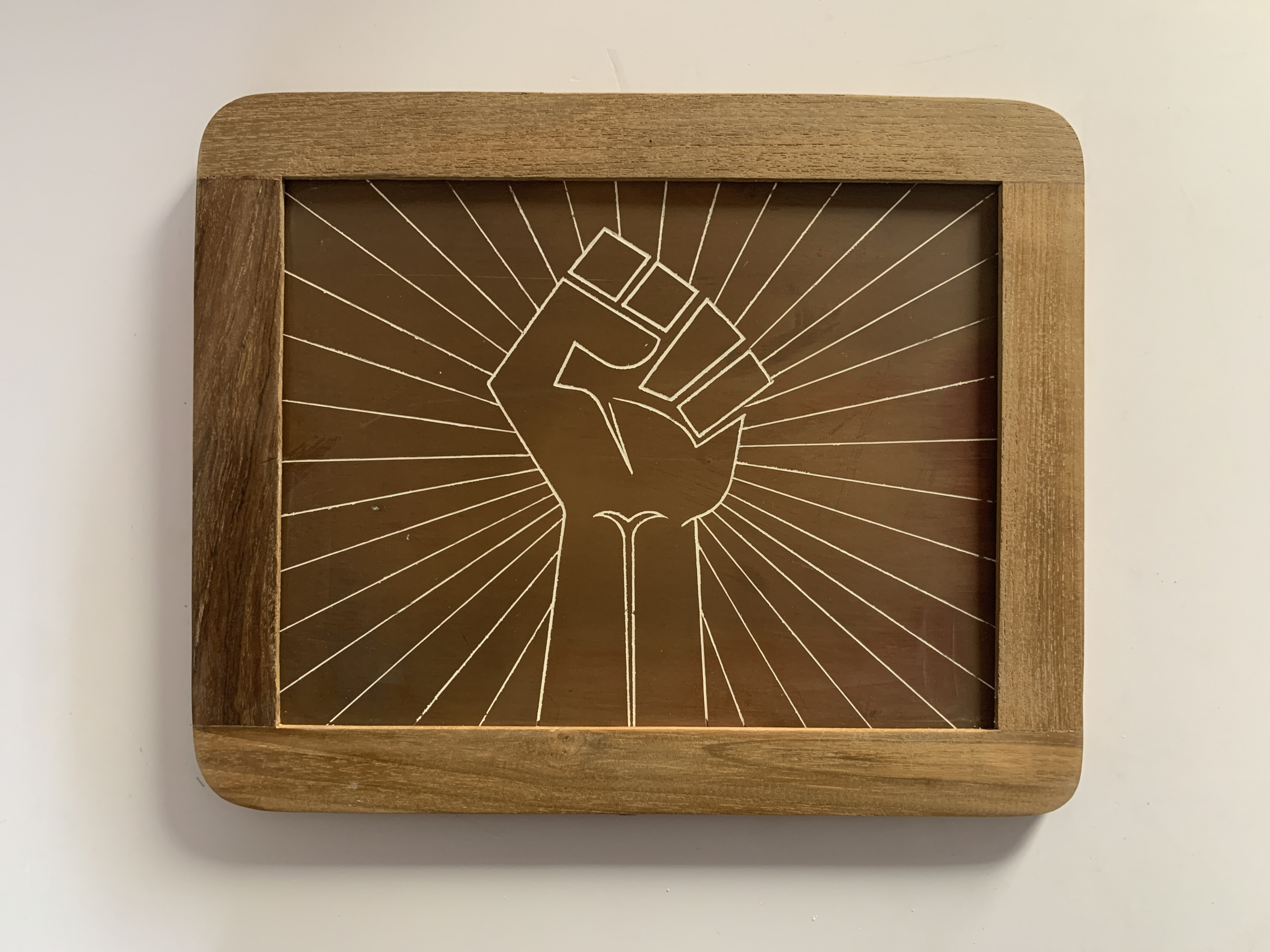
In October 2015, in the first issue of Guftugu, we described what we were up against:
If singing and dancing, poetry and prose, film and painting have all been possible even in the most brutal times history has witnessed, we can believe our situation today too cannot subdue what we can do with artistic practice of all sorts, as well as education. Every day we see new evidence of authoritarianism in India – the sort of tyranny that impinges on our cultural work, and on those who wish to partake of what we imagine for them. Even the day-to-day cultural practices by the wide range of people who make up India are vulnerable to the aggression of the “cultural police” in different guises. These policemen want to tell us all what to eat, wear, read, speak, pray, think. They want to tell us how to live.

We made a promise to fight this:
Guftugu aims to reflect and critique present-day aggression against culture; to articulate creative resistance against the degeneration of democratic values and institutions; and to achieve this by freely doing what we do best: writing, painting, imagining, speculating and debating.
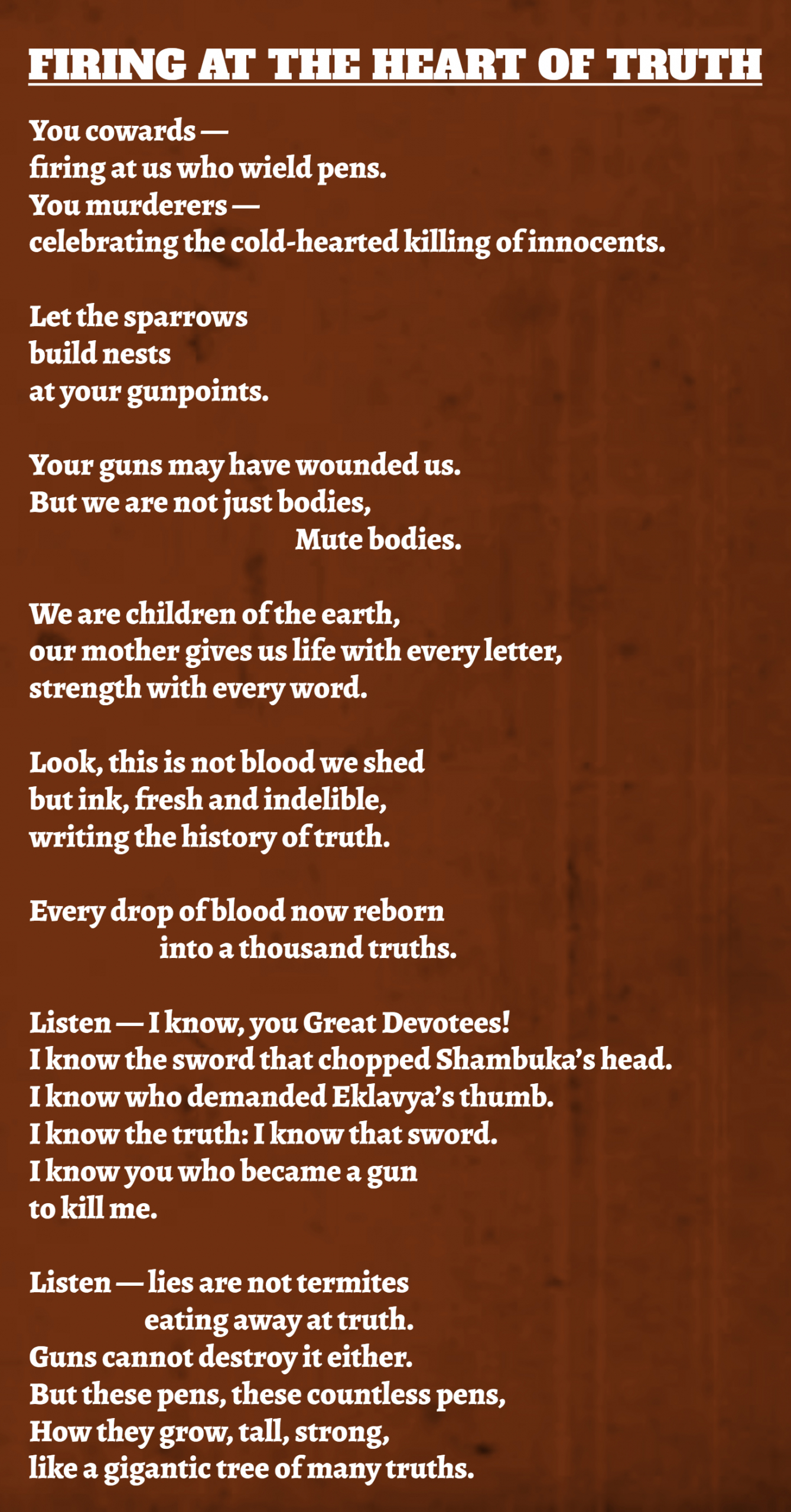
The challenge has grown since then.
The question confronting us every day, in the classroom, the courts, on the streets, and even in our neighbourhoods and homes, is this: How do we grow our resistance everyday? How do we learn to hear, understand, and amplify, in solidarity, in word, image and gesture, the voices of all the people, young and old, in every nook and corner of the country, who are subject to discrimination, fear, hatred, poverty?
In other words: What kind of India do we want?
This is the kind of India our cultural community have asked for through Guftugu:
- A country bent on annihilating caste.
- A country where diverse communities mingle and thrive.
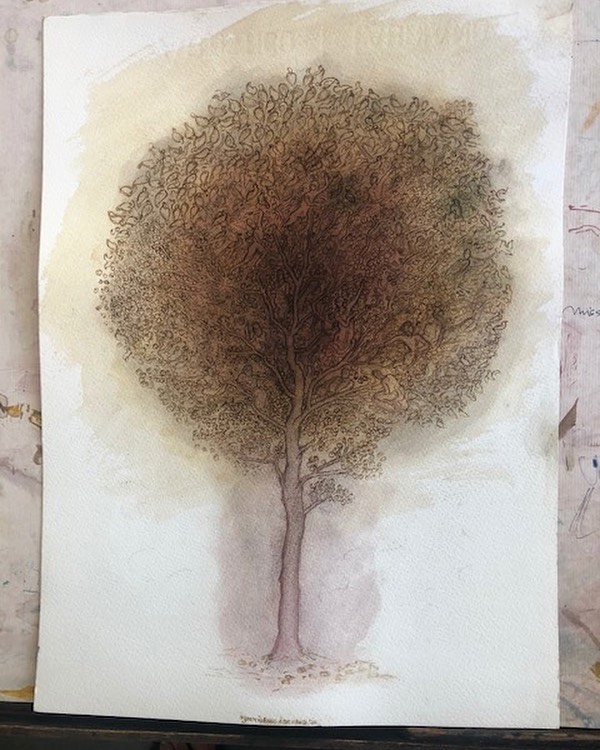 Image courtesy Gulammohammed Sheikh, Guftugu Issue 19
Image courtesy Gulammohammed Sheikh, Guftugu Issue 19
- A country where every person, whether Adivasi, woman, LGBTQ, organised or unorganised worker, can demand her rights to equality, dignity and a chance for a better life.

- A rational, secular country in which people are free to think; to doubt; to speculate and imagine; and always, to ask sharp questions.
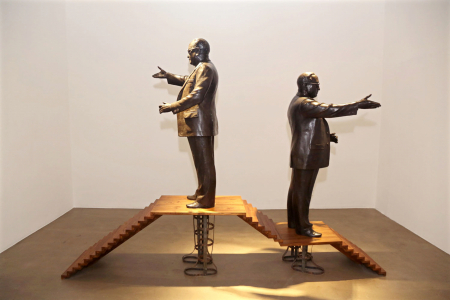
The dream of remaking India remains alive in our hearts. So does the hope that fuels the dream, and promises us that it can be done. It gives us the courage, whether in the pages of Guftugu or elsewhere, to speak up in any way we can. The only constant is resistance.
Githa Hariharan
K Satchidanandan
May 2022
How do we grow our resistance everyday?
From the Editors
This editorial is short because it has been standing in long queues along with crores of honest Indian citizens before famished banks and empty automatic teller machines getting tired of pretending that it is battling black money and terrorism, while actually it was only helping fill the country’s coffers with enough money to be loaned out on low interest to the fat corporates surviving on human flesh and blood
This editorial is short because it is malnourished like the tribal children in the forests even from where they are being driven out so that the miners can deplete the hidden wealth of the country and amass unaccounted wealth
This editorial is short because it could not grow without water that is becoming scarcer day by day as it is the first casualty of all development schemes that fell trees and dry up the ground water and kill the rivers by sand mining
This editorial is short because it refuses to suck blood from the dalit in the village denied land and roof, food and water, education and freedom, ostracised, jailed and killed at the smallest of pretexts
This editorial is short as it fears that any time, with one more word, the noose may fall around its neck, or it will be shot dead like those who had upheld justice and reason, or lynched like those who had dared to eat the food that some consider treason
This editorial is short because it is a starving Muslim woman who lives in eternal fear of words as she can be divorced any time with a single word uttered thrice by the man who she had so far thought was hers
This editorial is short because, when language is used only to tell lies and sell the dictator’s image through advertisements that appear even in the guise of news, the less language one uses the less number of lies one tells
This editorial is short because it does not want to go on until it is forced to shout “Bharat Mata ki Jai” or to sing the national anthem which alone are considered the genuine acts of patriotism by people who have betrayed and divided the country and murdered the man who had united the people against her coloniser
This editorial is short because it is short of breath as the air around it has turned literally and metaphorically poisonous
This editorial is short…
This editorial…
This…
Githa Hariharan
K. Satchidanandan
February 2017
This editorial is short…
In Memory of Rohith Vemula (1989-2016)
“Savi, as he is popularly known… [has] struggled to evolve a space for dalit art and imagery in the realm of art gallery exhibiting space… He is the first dalit artist in the country who has dared to aestheticise dalit themes in mainstream contemporary art practice. Savi challenged the boundaries of main-stream aesthetics in terms of weaving pictorial signifiers that… defies hegemony. His works are located in the realm of countering the Brahmanical hegemonic practices by articulating voice for the voiceless…”
Y. S. Alone, School of Arts and Aesthetics, Jawaharlal Nehru University, savisawarkar.blogspot.in
On the occasion of Rohith Vemula’s birthday on January 30th, Guftugu expresses solidarity with his life of struggle, and that of all the Rohiths in India today.
Artist Savi Sawarkar recounts dalit identity through a counter-aesthetic. Poet Meena Alexander reminds us of the texture of Rohith Vemula’s caste-defined life and death, with his last letter as the centre-point. Artist Orjit Sen dedicates to Rohith Vemula a graphic retelling of another story of resistance, that of Nangeli.
Meena Alexander
Death of a Young Dalit
In Memory of Rohith Vemula (1989–2016)
Trees are hoisted by their own shadows
BLANKAir pours in from the north, cold air, stacks of it
The room is struck into a green fever
BLANKStained bed, book, scratched window pane.
A twenty-six-year-old man, plump boy face
aaaaaSets pen to paper – My birth
Is my fatal accident. I can never recover
BLANKFrom my childhood loneliness.
Dark body once cupped in a mother’s arms
BLANKNow in a house of dust. Not cipher, not scheme
For others to throttle and parse
BLANK(Those hucksters and swindlers,
Purveyors of hot hate, casting him out).
BLANKSeeing stardust, throat first, he leapt
Then hung spread eagled in air:
BLANKThe trees of January bore witness.
Did he hear the chirp
BLANKFrom a billion light years away,
Perpetual disturbance at the core?
BLANKThere is a door each soul must go through,
A swinging door –
BLANKI have to get seven months of my fellowship,
One lakh and seventy thousand rupees.
BLANKPlease see to it that my family is paid that.
She comes to him, girl in a cotton sari,
BLANKHolding out both her hands.
Once she loosened her blouse for him
BLANKIn a garden of milk and sweat,
Where all who are born go down into dark,
BLANKWhere the arnica, star flower no one planted
Thrives, so too the wild rose and heliotrope.
BLANKHer scrap of blue puckers and soars into a flag
As he rappels down the rock face
BLANKInto our lives,
We who dare to call him by his name –
BLANKGiddy spirit, become
Fire that consumes things both dry and moist,
BLANKRuined wall, grass, river stone,
Thrusts free the winter trees
BLANKFrom their own crookedness, strikes
Us from the fierce compact of silence,
BLANKIgniting red roots, riotous tongues.
 Courtesy i.ytimg.com
Courtesy i.ytimg.com
Writing this Elegy
When I was twenty-four I lived in Hyderabad. There was a neem tree in the garden of The Golden Threshold, once the home of the poet Sarojini Naidu. It is now the site of the new Central University. When time permitted, I would sit in the shade of that tree, shut my eyes and dream. Then, as now, images came to me, and I tried to craft a few lines of poetry.
I returned to the city several times. In early January 2016 I attended the literary festival. I met Nayantara Sahgal after a gap of many years. As I listened to her give the keynote address at the festival, I was inspired by her courage. I was learning afresh what it means to live in a time of difficulty, what it means to bear witness. Later that month, news came that a Dalit student at the university had killed himself – a tragic act of protest that resonated throughout the country. He left a haunting letter for us to read. I have included lines from his letter, and set them in italics in my poem.
Night after night as I worked on this elegy, the wind and winter chill commingled with the memory of rocks and stones and trees in a city I loved. I was consumed by the tumultuous hope and the very real despair of a young man I had never met.
Meena Alexander

Today, as in 2016, young people like Rohith Vemula still hear the message of a caste-ridden India: You cannot see your dreams soar. The message they hear bears the history of centuries of inequity; a thousand stories of barbaric humiliation. But equally important is the narrative of struggle – today, on the streets, in fields, villages, classrooms, courts, toilets.
This struggle also has a history in every part of India. In Kerala in the early nineteenth century, there is the story of Nangeli, who protested against one of the ugliest of oppressive taxes: the lower caste was only allowed to cover their breasts if they paid a tax, Mula Karam, to the government. Nangeli protested by giving the tax collector her breasts, cut off with a sickle. She died to bring an end to the breast tax system.
Orijit Sen
Remembering Nangeli on Rohith Vemula’s Shahadat day
Read related posts here and here.
Read more poems by Meena Alexander here and here.
See more work by Orijit Sen here, here and here.
Savi Sawarkar
Meena Alexander
Orijit Sen
from File Room
Dayanita Singh’s ‘File Room’ is an elegy to paper in the age of the digitisation of information and knowledge. The analogue photographer and bookmaker has a relationship with paper that is integral not only to the work of making images, texts and memory, but also to a larger confrontation with chaos, mortality and disorder in the labyrinths of working bureaucratic archives in a country of more than a billion people. Including an interview with Hans Ulrich Obrist that relates this book with Singh’s other books and bodies of work, and texts by Aveek Sen that explore the different ways in which the world of files and paperwork continue to touch ordinary lives, ‘File Room’ is itself an archive of archives. It documents and reflects on the nature of paper as material and symbol in the work of making photographs and books.
Sea of Files from ‘File Room’, 2013
Even before we could put the furniture back in place where my husband’s body had lain, the call from the lawyer came. The high court had given a final date for a case my husband had been fighting against the government. Mahinder was a farmer who had developed a strain of wheat that created a world record in yields. But the National Seeds Corporation was disputing his way of distributing the seeds. So, even before the four days of official mourning were over, the space that was cleared for his body in the heart of our home in Delhi got swept up by the deluge of files that tumbled out of each room. And, in a moment, I turned into a 42-year-old widow with four young daughters and more cases than I could count on my fingers. Gone in an instant were my days of painting and poetry, of being happy simply running the house, photographing the girls, and making numerous albums.
People told me I should be wearing white. But who had the time to think about such mundane things? There was no time even for mourning. I had to file my reply to the court in four days. I had lived with files everywhere in the house ever since I married Mahinder, but I was clueless about their contents. We lived in a huge old house that seemed to grow in an organic way, according to a mad logic that had little to do with plans. It was an expanding maze of rooms leading to rooms, where stores of wheat-seed, trunks full of who knows what, cupboards full of rusty fire-arms and property deeds, two stuffed tiger-cubs in vitrines and a two-headed snake in formaldehyde coexisted with four girls and a woman who found no time to look for her widow’s weeds. And in the midst of all this were the thousands of files.
Revenue files, court files, income-tax files. They filled up not only the office-room, but also our bedroom, guestrooms and shuttered store-rooms behind the house. Most of that domestic chaos of paper had to do with land, lost, recovered and about to be lost again – the hundreds of acres lost during Partition, a fraction of those hundreds wrested from the State as compensation, and the constant threat of their decimation by inheritance laws favouring sons over daughters. Loss, division, and the inequality of the sexes threatened to swallow up even this house we had now. Then, all of a sudden, it fell upon me to keep it all together.
When Mahinder was alive, he would often get ready in the morning and call me, Locate this file of mine! Locate that file of mine! And I would be looking around in the office and in the bedroom, bending on my knees or on all fours to go under the large writing table that was covered with a mountain of papers. I would go under it and around it and with great difficulty locate a file for the high court, or was it some lower court? It was a game of hide-and-seek that I played with the files, always keeping my fingers nervously crossed. But, in less than a week in the summer of 1982, that youthful game turned decidedly grim. I inherited three high court cases and around eight cases in three lower courts in two cities. They involved 98 lawyers over a period of thirty years. Each day, we lived in dread of the doorbell ringing and our getting another notice or summons.
So, I brought all the mountains of files that were lying in Mahinder’s office, out of our bedroom and the store rooms, into the drawing room where he had lain at the end. I started to place the files all over the room. The piles grew and grew until they turned into a sea of files, at the centre of which I would sit. I had low blood pressure, so getting up early in the morning was like a punishment for me. To this was added something like a fear of waking up. If I opened my eyes a little at six in the morning, in a second all the worries would crowd back into my head. I sat with my tea in the middle of those files and started working. I had my breakfast there, and lunch, made notes until evening, and carried on until dinnertime. My daughters stood and watched me, but there was no time to explain. I wanted to protect them as much as I could. I often fell asleep on the files and most of my daughters would wake me with startled faces. Most of the files were dusty and old and had thin paper in them that crumbled quickly. Rats would gnaw at them too. Nobody was allowed to touch them.
I remember how my father’s files remained his strange, but known, bedfellows, after he had retired from the army and the police. They lay closer to him than even his beautiful, calm and faithful wife. They lay like bombshells, in piles and mountains, around his bed, which I had designed according to his specifications. No one dared dust them, or even touch them, lest the method in their madness was lost.
I had to work out a way of organising my files, keeping the plaints, applications, originals, copies and court orders separate, because once a piece of paper got lost in that vortex in the middle of the house it was impossible to find it again. In that kingdom of files, the battle was not between good and evil, but between order and chaos. An army of different files tried to keep the unruliness of paper under control. Box files, files with or without flaps, files which were just pieces of cardboard with pyjama strings fixed to them, ripple files, cobra files, lever files, index files, triple-extra-thick office files. They had names like Solo, Diplomat, Moot Point, Blue Sky and Moonlight.
Sometimes I had to make different combinations of papers for different lawyers and I would tag each combination with slips of paper and use page-marks of different colours, so that I could quickly get to what I needed in the rush of a courtroom. There were two long, deadly-looking needles of steel and iron, called a baksua, for punching holes in the papers, a job that demanded all my strength. Another punching machine looked like a large toad on the floor, and I put paper in its jaws and had to stand on it with the full weight of my body to make it punch holes. There were different kinds of paper too, each with its own smell and speed of decay: thin typing paper that crackled when you moved it and became crumbly in no time, court paper that was strong and watermarked, and cheap yellow-brown paper of which most of the court files were made, which quickly became brittle and grimy. At home, I started making my own bundles of files and papers, first with old sarees and then with markeen, the cheap cloth of unbleached cotton that sofa-makers nail to the underside of sofas. 1½ yards to make a bundle of files sit tight, 2½ to tie a body for the pyre, and worn by the eldest son as he lights the pyre and begins his mourning.
I soon started attending all the court hearings myself. This meant regular visits to the Tis Hazari and Patiala House courts, the high court of Delhi, and those terrible offices of the tehsildars and patwaris, dusty and dirty, with the huge stacks of files, old, half-torn and half-eaten, lying around everywhere. Who would ever manage to find a file in this mess? Yet, there would be an old man who knew exactly where, under which pile, to look for a file. Sometimes, I would peep into an empty courtroom and find a young woman typing away, sitting alone among helter-skelter chairs, the walls around her lined with steel cupboards and compactors full of files. After the courts closed for the day, there would often be long waits in lawyers’ offices. I kept one of Mahinder’s last-tied turbans in the car, and when I had to drive back home alone at night, I would put it on so that people might take me for a man at the wheel.
However much I hated files, at least mine were cleaner. I didn’t like the piles of dirty files lying about in heaps in the courts, so that I had to pick my way through them on the landings of the narrow backstairs. Imagine climbing three flights of stairs in Tis Hazari (there were no lifts then), clutching maybe ten files in my arms, which were more used to holding babies that were not quite as heavy. I would be standing in front of the office of some unsavoury old officer. There were no fans, so I was hot and sweating , and this man would be sitting inside nicely, not calling me in even after I had sent in a slip of paper with my name on it. People would walk in and out of the office, but I would stand at the door as if I were invisible. The files that I had to bring to court weighed ten or fifteen kilos, and I carried them in large canvas bags.
After some months, I got frozen elbows, especially on my left arm. My orthopaedic asked me if I was left-handed or had started playing tennis. Then, the real cause occurred to me. It took a great deal of stamina to run behind the lawyers in court. They were always in a hurry and ran ahead of me, their black coats flapping and flaring, and I would run behind them with a bag of files in each hand, trying to catch up. I did not mind when they said among themselves in the courts that I was not a woman, but a man.
Delay and waiting became the stuff of my life, keeping everything else on hold. Sometimes, my number came up too late in court, just before lunch-time. Would I be called again after lunch? No, sorry, at four o’clock the courts wind up, and I would have to wait for the next date, when I would come again carrying those files, and the hearing would again be adjourned to a later date, on which the lawyer for the other side wouldn’t turn up. Sometimes, there would be a bomb scare or a blast somewhere on the premises, and the courts would shut down suddenly.
During the anti-Sikh riots of 1984, as the mob approached our house with burning tyres late in the night of 30th November, I quickly destroyed the give-away nameplates with Mahinder’s name on them (Why must Sikh men have such long names? I wondered in my panic). I took the cheque-books and the jewellery from the cupboards, as I had seen my parents do during Partition, and made my daughters cross the road, one at a time, to the house of our courageous Hindu neighbour, who had offered to give us shelter. But I knew I had to go back and fetch the files. I waited until the mob was distracted by a passing bus, ran across the road and rushed back clutching my files. The bus was in flames. I suppose it had Sikh people inside.
If you walk about in the courts, you will realise in no time that everything in them is designed for waiting without hope. But you find yourself waiting with a stubbornness that begins to look like addiction to those who are out of all this. There are toilets everywhere, limbo-like waiting areas with rows and rows of chairs, stalls for books, magazines and food, even a dispensary. And the floors are identical to one another. If you climb a flight of stairs to the next floor, you would think you’re back in the same place again. Thank god, my cases are mostly in the high court, I thought. At least it is air-conditioned, and there are sofas I can sit on. I would go off to sleep on a sofa if I had worked until late on the files the night before, to be woken by a lawyer calling me to attend or, if that did not happen, to tell me to go home.
Every time people asked me, How are your cases? I would say, In the courts there is no justice, all you get are dates, dates and nothing but dates. Of the twelve or so cases I was fighting, I had won just one in these thirty years.
I used to think that I owed this fight to the ancestors who had left this land and property to us. They had left us their legacy, and it was my duty to pass it down to the next generation. But, sitting amidst the ocean of files late in the afternoon one day in that house of five women, with the now-quite-usual sickness rising up in my guts, I realized that this battle would never end. If I did not call it quits now, the only inheritance I would be handing down to my daughters would be this nightmare without end and my wilderness of files. People ask me why I gave up. To give up, I tell them, is the only way out of this country of perpetual stay orders, this land of status quo.
Aveek Sen
Dayanita Singh
Thinking and Counter-Thinking: On “Classical India”
I
It’s a great honour to be here in Heggodu.* I am very grateful to K.V. Akshara and K.V. Shishira for inviting me. I have been hearing about this place for almost twenty years. My teachers D.R. Nagaraj, U.R. Ananthamurthy, my senior colleague Ashis Nandy, Shiv Visvanathan, and many other friends have told me of this place. I’m thrilled and grateful to speak to all of you, to see this campus and get a glimpse of your activities here in this beautiful setting.
I am supposed to speak today on “Classical India”, and our overall theme is “Thinking and Counter-Thinking”. I am going to dwell very briefly on “Classical India” as a period of Indian history, after which I will complicate the notion of the “Classical”. What do we mean when we say “classical”? What do we understand by the word in our present time?
Anybody who has grown up in independent India has read about a time referred to as the “Classical Period” in our history textbooks. It dates roughly from the dawn of the first millennium, about 100-200 CE, to about 1100-1200 CE. It is effectively a time when Buddhism becomes salient and systematised. There is the flowering of a plurality of knowledge systems and literary canons in Sanskrit, Prakrit, Tamil and Pali, a period of argumentative vigour, continuing up to the emergence of major Islamic empires in the Indian subcontinent, when significant cultural shifts occur. This is what generations of Indians have been taught in our schools and colleges since Independence. So when I say “Classical India”, I’m sure, no matter what the regional language in which you received your secondary education, you will be reminded immediately of a few things.
You think of the Gupta Empire; the Cholas, Cheras and Pandyas in the South; the Chalukyas, Pallavas and Rashtrakutas in the Deccan. You think of Harshavardhan of Kannauj in central India; of Lalitaditya and Avantivarman, Kashmiri imperialists. You think of great poets like Kalidasa and Bhartrihari. You think of the Sanskrit epics, Mahabharata and Ramayana and in Tamil, Silappadikaram and Manimekalai. You think of cities like Ujjain, Vaishali, Amravati, Avanti. You think of poets, playwrights and prose-writers, like Bana, Sudraka and Bhavabhuti. You think of mighty philosophers like Nagarjuna, Ashvaghosha, Kumarila Bhatta, Shankara and Anandavardhana.
The stunning art, architecture and archaeological remains of Ajanta and Ellora, Kanchi, Badami, Aihole and Pattadakal; monumental treatises like the Bhagavadgita, Mimamsasutra, Brahmasutra, Yogasutra, Manusmriti, Kamasutra, Arthashastra, and Natyashastra; important schools of philosophy — Sankhya-Yoga, Nyaya-Vaisheshikha, Lokayata-Charavaka, Bauddha-Jaina, Mimamsa-Vedanta; the Shaiva, Vaishnava and Shakta sectarian streams; the massive classification of hundreds and thousands of learned texts by genre – smriti and shruti, itihasa and purana, shastra and kavya, agama and tantra, sahitya and darshana; the foundational discoveries of mathematicians and astronomers like Aryabhatta and Varahamihira; the rich and sometimes fantastic accounts of Chinese and Arab travellers like Fa Hien, Huen Tsang, Al Biruni; the great trans-Himalayan journeys of monks and scholars who carried the texts and teachings of the Buddha and the different schools of Buddhism northwards out of India; the expanding sphere of Indic influence in south-east Asia and the island cultures of the Indian Ocean. These are the myriad things — the vast civilisational detritus of a Golden Age — which come to your mind as the empirically verifiable referents of “Classical India”.
II
Now, let us begin to move beyond the immediate repertoire of references. When you use the word “classical” in the English language, it evokes a range of meanings in your mind. You are not always thinking historically about India (or some other part of the world, say Graeco-Roman civilisation), a thousand or 1500 years ago. When you go, for instance, to a classical music concert or classical dance recital, or to a classical theatre performance, chances are you would expect a certain kind of aesthetic experience if the artiste is good. The word “classical” qualifies your aesthetic experience, one that imparts both a sensation of pleasure and a knowledge of something that is true.
You might feel an overflow of emotions, rasa-anubhava, a sense of wonder, adbhuta, or even beyond, of miracle, chamatkara. You also gain knowledge through the experience, in listening to the music, or in watching the performance. If it is truly classical, there will be something in the rendering that changes your understanding of yourself and the world. It may come in a moment. You may not be able to express it in language. But you come away from that aesthetic experience changed to some degree. This is a meaning of “classical” that I’m sure all of you, as connoisseurs of the performing arts, as rasika and sahridaya audiences, are familiar with.
You also have certain expectations of the classical art-form itself. That it will be highly structured, rule-bound and difficult, impossible for an unskilled performer to practise, and not really accessible to an untutored audience. The barriers to entry are high on all sides, and involve years of training, rigorous discipline, continuous self-improvement — sadhana — riyaz — taiyyari. In Hindi we say “shastriya sangeet” for “classical music”, where the term shastra/ shastriya captures all of these aspects of the art, which take it out of the realm of the spontaneous. Many of you would have been to at least one performance of Bharatanatyam or Odissi dance, or Hindustani or Carnatic music. For most of us, one of these is what we mean when we say “the classical performing arts of India”.
A classical form that is not quite as popular, so to speak, is Kudiyattam, a recondite form of Sanskrit theatre performed in Kerala, which relies on embedded narrative, bodily movements, hand gestures, facial expressions, costumes, make-up, and continual percussion, but which has close to no linguistic register whatsoever (very few words are spoken or sung), and the minimum of instrumental music. It is extremely hard to practise or to watch, but utterly absorbing and uplifting once you get into it. Kudiyattam appears to be quite an ancient form, and is restricted to specific communities of performers, dancers as well as percussionists. Its root texts are episodes drawn from the Sanskrit Ramayana and the Mahabharata, but the accompanying commentarial texts — the screenplay versions as it were — as well as texts specifying and teaching hand, body and face gestures to actors and musicians, are in Malayalam. One act may be stretched out over two or three weeks of performance, with nightly sessions lasting two to six hours, sometimes even longer. To my mind, Kudiyattam is a sort of apotheosis of what we normally call “the classical”.
III
Now let us consider the “counter-thinking” on the classical, particularly in Carnatic music. The author of this counter-thinking is T.M. Krishna, one of the great living exponents of the form, often described as a prodigy, a genius and a maestro, someone who has been a speaker and performer right here in Heggodu. Krishna has attempted to deconstruct the label “classical” when applied to Carnatic music. He insists it be called “art music”, pointing out that while the characterisation “classical” suggests the form is very old, it is in fact modern, having taken no more, perhaps, than 100-300 years to arrive at its present juncture. He links the term “classical” to socioeconomic class and the caste system; for him, it is more accurately a sociological descriptor than an aesthetic one. He painstakingly prises open all the subtexts: the antiquarianism, Brahminism, patriarchy, sexism, elitism, nationalism, revivalism, and Hindu religious ideology lying buried in the seemingly value-free appellation “classical”, when it is attached to Carnatic music.
Contemporary Carnatic music, performed in the kutcheri concert space and format, is in Krishna’s account the outcome of a process of the gradual classicisation of a number of other styles, genres and ethics of performance that have in themselves almost disappeared from southern India, together with the marginalisation of the “holding communities” — principally Isai Vellalars and Devadasis — originally associated with them. Taken entire, Krishna’s critique of the classical is so powerful as to render the word’s typically positive connotation thoroughly suspect; in fact, he discredits the term quite comprehensively.
While he has not succeeded in replacing “classical music” with his preferred “art music” in how practitioners, critics, scholars and audiences refer to the form, Krishna has nevertheless unsettled the conservative world of Carnatic music to an unprecedented extent. His struggle with what he calls the “social re-engineering” of Carnatic music has led him to give up performing at the Chennai December concert season (called “Margazhi”) from 2015. Instead, he helps organise an alternative festival of the performing arts in the small fishing village of Urur Olcott Kuppam, which sits cheek by jowl with the bourgeois Brahmin neighborhood of Besant Nagar and Elliot’s Beach. This annual festival (“Vizha”) had its third iteration this month. Together with his friends, family, students and citizen volunteers, Krishna has launched a number of non-profit educational, pedagogic and outreach initiatives to bring this music to women and children, non-Brahmin castes, non-Hindu communities and socioeconomically deprived groups.
Krishna’s counter-thinking on the classical tends to shift our understanding of the locus of Carnatic music, from the stately immovable pinnacles of cultural power to a site of incessant social conflict (an external, historically-driven process) as well as continuous aesthetic negotiation (internal to the artiste’s relationship with the form). He has examined the musical careers of other Carnatic icons like M.S. Subbulakshmi, and Balamuralikrishna, who passed away recently. He takes a particular interest in how they departed from the conservative Carnatic received narrative, and the effects those departures had on their music. That Krishna himself comes from a Brahmin family, and remains constantly aware of the enabling role played by his own caste status in the spectacular success he has enjoyed from a young age, makes his public-spirited chastisements all the more agonistic.
Similar deconstructions of classical/ folk or classical/ popular binaries in a long tradition of socially responsible cultural criticism, from M.N. Srinivas and A.K. Ramanujan to U.R. Ananthamurthy, D.R. Nagaraj and K. Satchidanandan, backed up to varying degrees by the supposedly “harder” evidence of social science, cannot quite equal the moral anguish conveyed by a practitioner-theorist-historian-pedagogue like T.M. Krishna. His sheer artisitic virtuosity seems to grow in direct proportion to his evisceration of the social and political grounds of this music. It’s no joke to try to democratise the classical, particularly in India.
If it’s difficult to get people to see the classical as inseparably a product of its social context, and hence of the extreme inequalities inherent in that context, it is even harder to declassicise Carnatic music as a form. Krishna asserts that this music is intended as “art”, and not as “religion”; that its essence is shringara (beauty) and not bhakti (devotion); that even, say, the names and descriptions of deities and divinities in much of lyric canon of Carnatic music are meant to be primarily melodic and abstract, not lexical or religious. He does not deny the transcendent capacity of this music, but is adamant about dissociating this transcendence from God, or any specific god or goddess.
Lately, Krishna has been setting to music some “Virutham” poems penned by the contemporary Tamil writer Perumal Murugan, and singing them in his concerts. He also recently rendered a Muslim devotional song in Tamil, “Allahvai Naam Thozhudhaal” by E.M. “Nagoor” Hanifa. These are extraordinarily beautiful compositions, musically as accomplished and moving as anything Krishna sings. But their political intent is devastating, and doubly effective for being woven into an otherwise largely familiar and conventional Carnatic repertoire. A heart-rending complaint to Shiva by a fiction writer facing censorship, excommunication and intimidation, using the idioms of outcaste Tamil Shaivite poets from remote antiquity; or a prayer to Allah beseeching Him for compassion in a time of overwhelming Islamophobia — both go to the heart of what music is supposed to do: dissolve adversarial identities, enable mergers across ideological differences, break down our deepest ego barriers, and melt our most adamantine prejudices. Such songs, too, are extremely complex, subtle, and in the end far more subversive arguments, perhaps, than Krishna’s more obviously radical statements and positions on the caste, gender, and class vectors of Carnatic music. He takes aim at the classical simultaneously from the side of social structures, and that of aesthetic interventions. The classical in any conventional sense of the term cannot withstand this double-attack, and must disintegrate entirely.
IV
Sheldon Pollock, again someone familiar to you all here in Heggodu, has developed another way to understand the classical. This is through the idea of a crisis. He has been researching (in) many of the languages of pre-modernity in the Indian subcontinent, vernacular or classical, primarily Sanskrit and old Kannada. He says that there is a crisis in the classics. What is the classical? The classical is the site of a crisis. What is the nature of the crisis?
We have literally hundreds of thousands of texts in India, embodying different narratives, different genres of thought, different knowledge systems, and different kinds of expressions of consciousness and human experiences available to us. But a lot of them are in the pre-modern languages: Tamil, Sanskrit, Prakrit, or Persian; but also old Maithili, old Bengali, old Gujarati, old Marathi, old Kashmiri, Awadhi, Braj, or any of the South Indian languages, in their medieval or later forms.
We are inexorably losing the capacity to read these languages. We don’t have enough scholarship, or people who have been trained, in ways modern or traditional, to actually be able to decipher these texts, to retrieve the vision of the world available in them, and to make sense of the linguistic and epistemological diversity of our pre-modern cultures. And this is the case across the board, across religious sects and philosophical traditions, across knowledge systems, and across the classical languages of India.
Pollock, now 68, came to India as a young man in the early 1970s. He could still go to his guru, Pattabhirama Sastri in Varanasi, or other scholars in Chennai, Mysore and Pune, to read certain texts with them. But his teacher passed away and he himself has finished training two generations of students at the American universities where he has taught — Iowa, Chicago and Columbia. There may come a time when nobody is left of the traditional readers or interpreters, or the community of scholars who deal with texts in old languages. Sanskrit departments at our universities, Sanskrit colleges, our research institutes, archives and libraries, are all in a state of dysfunction and disrepair. Neither the government nor private philanthropy is investing enough to save these resources. Some study, teaching and discussion continue in religious institutions such as temples, sectarian gurukulas, mathas and monasteries, but secular scholarship of the philological kind is fast disappearing.
Between the time that my teacher, Sheldon Pollock, was a graduate student, and I myself was one, some 30 or 35 years later, Sanskrit pedagogy and scholarship in India have declined precipitously, even in old centres like Varanasi, Pune, Mysore and Chennai. There will come a time in the near future when we will lose our connection to the classical past, and we will simply not be able to decipher or read it. This is what Pollock describes as the “crisis in the classics”. Thus the classical becomes a site of worry, of loss, when you think about those hundreds of thousands of texts — lying in people’s homes, or in temples in villages and small towns, or even in the big national repositories to which we simply do not have, or shortly will not have access.
V
Currently the notable way to understand the classical — I think this is extremely important today, under the Bharatiya Janata Party (BJP) government at the centre — is that the classical is what essentially embodies India. In the pseudo-history of the Hindu Right, the classical period began once Buddhism had been assimilated into the Hindu fold, and ended as Islam, entering from the outside, came to dominate the subcontinent politically and culturally. In our public discourse, which we get from the print and electronic media, from popular history and pulp literature, and from specialist organisations like the Indian Council of Historical Research, the Indian Council for Cultural Relations, the Indira Gandhi National Centre for the Arts, etc., the classical is the treasure-house of civilisational value.
The classical is what we have to guard, defend, preserve and restore. It has been under siege, attacked continually by outsiders, non-Indians, “others”, “our” enemies, whether they were Muslims, European colonisers, or this modern globalised world, which doesn’t understand the peculiarities and special nature of Indian culture, Indian values or the “Hindu way of life”. We feel victimised that our classical achievements were overshadowed by invaders, and we need to reach back in the past and retrieve that long-lost glory.
Historical time moves away from the classical, and the work of Hindutva is to return us to the classical. In a sense, this ideology militates against the arrow of time. It is always in a state of defensive readiness. Here, the classical becomes the ground for the assertion of a religio-cultural identity. It becomes the source of a discourse of victimhood, resentment, and fear of civilisational and cultural “otherness” that is always in our midst.
Krishna’s deconstruction of Carnatic music from the perspective of its severe caste-class limitations, and Pollock’s anxieties about the dramatic erosion of the philological and epistemological capacities of India’s knowledge cultures, are both perfectly understandable and valid. They look objectively at the state of classical music and classical scholarship in the contemporary moment. But these critiques acquire a heightened urgency against the backdrop of the new culture wars being waged by the ruling Hindu Right dispensation.
Throughout the 20th century, fascist regimes across the world fetishised tradition, classics, the canon, the past. Paradoxically, their fixation on the classical is invariably combined with a populist contempt for intellectuals, scholars, and the actual skills needed for any informed engagement with history. Hindutva modelled itself on the nationalism of Garibaldi and Mazzini; its founding fathers openly admired Hitler and Mussolini, while its votaries continue to do so covertly even today. The BJP and the Sangh Parivar are thus no exception to what Umberto Eco identified as the pattern of “Ur-Fascism” (“Ur” in the sense of “original”, “primordial”, located at the very fount of Fascist ideology). Fascist classicism in the hands of Hindutva ideologues becomes another stick with which to attack religious minorities, homogenise the diverse cultures of our nation into a majoritarian Hindu Rashtra, and further marginalise the knowledge, arts and life-practices of the countless “little” traditions of India.
The culture warriors and internet trolls of the Hindu Right do not see Sheldon Pollock as the world’s foremost Sanskritist and historian of pre-modern Indic literary cultures. Instead, they see him as a person whose identity is American, white, Jewish, and Western. Should such a person be general editor of the Murty Classical Library of India? The library is endowed by Rohan Narayana Murty and published by Harvard University Press in a range of classical languages besides Sanskrit.
They do not like that T.M. Krishna, along with Bezwada Wilson — a leading campaigner for the eradication of manual scavenging by Dalits — won the 2016 Ramon Magsaysay Award. They try to counter Pollock’s argument for building the broad and reflexive discipline of “Critical Indology” with their agenda for constructing a narrow and nativist “Swadeshi Indology”. They are incensed by Krishna’s questioning of the religious and devotional intent of the great vaggeyakaras (composers of poetry and music) of the Carnatic tradition — Thyagaraja, Mutthuswami Diksitar and Shyama Shastri — and of his refusal to grant primacy to bhakti over sangeet, to linguistic meaning over musical significance.
In these circumstances, fresh thinking and counter-thinking about the classical, and activist interventions by practitioners like Krishna and Pollock, become an important part of the larger political project of dissent and resistance to which we are all, I hope, committed. Krishna has said that classical artists consider themselves to be above everyone else. They believe they exist on a higher plane, or float above the mundane concerns of work, livelihoods, markets, politics, caste, or any of the other practicalities of making art in the real world for all kinds of people. This is a false perception of the place of art and its role in society. We have to fall down, fall on the ground, he has said. Only then can we stand up again and rebuild the arts, and the socio-political cultures in which they are embedded, as open, egalitarian, democratic and meaningful.
It’s worth noting that when Krishna sings Carnatic music, or Pollock engages in Sanskrit philological scholarship, at no point can it be said that either is operating from any position but that of the greatest rigour, erudition, and accomplishment. The “classicism” of their respective disciplines is a given — the ancient lineages of texts and art forms; their sheer difficulty; their self-conscious and self-critical character; their strong sense of past history and future possibilities; their concern not just with beauty but perfection, nor elevation but transcendence; the years of unbroken engagement and the commitment to pedagogy required of the best practitioners; the innovative braiding of newly minted traditions and old civilisational memories — all these features of the “classical” are undeniable in both Sanskrit knowledge systems, and in arts like Carnatic, Bharatanatyam and Kudiyattam.
What is being argued, however, is that there is still a need to question and challenge the hidden violence, othering, and exclusion inherent in the cultural politics of the classical. There is every incentive — in fact, every reason — to continually revise, refresh, revivify and reinvent the canons of the classical arts and of classical scholarship. The greatest masters of what has been achieved are also the vanguard of what is yet to come. Radicalisation cannot be formal without also being contextual, aesthetic without being historical, epistemological without being political; it cannot be creative without also being responsible.
If some unimaginable catastrophe were to wipe out the Chennai Margazhi, the Murty Classical Library of India and the Nepathya Centre for Excellence in Kudiyattam of Margi Madhu Chakyar from the face of the earth, would India and the world be irreparably impoverished? Yes, of course. But that does not mean we accept that the doors of higher meaning will forever remain closed to the majority of people. Krishna has said that he began to be critical by asking, of himself and of his music, “What is beauty?” The most beautiful thing that human beings are capable of making is an equal society. If the classical can advance our collective journey towards the achievement of equality, then and only then is it worthy of our continued efforts towards its preservation and proliferation.
*This piece is an edited extract from, and an expansion of a lecture delivered on October 10, 2015 at the Ninasam Annual Culture Camp in Heggodu, Karnataka.
Ananya Vajpeyi
from The Logic of Disappearance – A Marx Archive, and Penal Colony

The first three drawings are selections from ‘The Logic of Disappearance – A Marx Archive’ (charcoal, 25 x 16″ each, 2014–).
The subsequent drawings are from ‘Penal Colony’ (charcoal, 20 x 29″ each, 2015–).
Images courtesy the Kiran Nadar Museum of Art, New Delhi.
K.M. Madhusudhanan
Judge Sa’b
If the Hindi isn’t displaying correctly you can download the pdf here. Jason Grunebaum’s translation appears below the original.
जज सा’ब
नौ साल हो गये, उत्तरी दिल्ली के रोहिणी इलाके में तेरह साल तक रहने के बाद, अपना घर छोड़ कर, वैशाली के इस जज कालोनी में आये हुए. यह वैशाली का ‘पाश’ इलाका माना जाता है. उत्तर प्रदेश की सरकार ने न्यायाधीशों के लिए यहां प्लाट आवंटित किए थे. ऐसे ही एक प्लाट पर बने एक घर में मैं रहता हूं.
जिस सड़क पर यह अपार्ट्मेंट बना है, उसका नाम है – ‘न्याय मार्ग’. हांलाकि इस सड़क में जगह-जगह गड्ढे हैं, हर तीन कदम पर यह सड़क उखड़ी-पुखड़ी है और कई जगह से ‘वन वे’ हो गयी है, क्योंकि बिल्डर्स ने कई जगह सड़क के ऊपर ही रेत, ईंटें, रोड़ी-गिट्टी, सरिया-पाइप के ढेर लगा रखे हैं. नतीज़ा यह कि हर रोज़ यहां ‘वन वे’ की वजह से एक्सीडेंट होते रहते हैं और कोई कार्र्वाई इसलिए नहीं होती कि बिल्डर्स और ठेकेदारों के पास बहुत रुपया और ऊपर तक पहुंच है.
इसी कालोनी में रहने वाले एक रिटायर्ड न्यायाधीश का पोता इसी ‘वन-वे’ पर एक डंपर के नीचे आ गया था और तीन महीने तक अस्पताल में रहने के बाद उसकी मौत हो गयी थी.
लेकिन वे बिल्डिंगें अभी भी बन रही हैं. डंपर और ट्रक अभी भी चल रहे हैं. वैशाली का ‘न्याय मार्ग’ अभी भी गड्ढों-हादसों से भरा हुआ ‘वन वे’ है.
वी.आई.पी. जज कालोनी बहुत तेज़ी से ‘डवलप’ होती कालोनी है. नौ साल पहले जब मैं यहां आया था, तब दो किलोमीटर की दूरी तक सिर्फ़ दो शापिंग माल थे. अब इक्कीस बड़े-बड़े बहुमंज़िला माल, दो इंटरनेशनल फ़ाइव स्टार होटल और शेवरले से लेकर ह्युंडई और सुज़ुकी कार कंपनियों के जगमगाते शो रूम हैं.
नौ साल पहले जब मैं यहां आया था, तब यहां जंगल और खेत हुआ करते थे. सरसों और गेहूं-बासमती के खेत. मोहल्लों में रहने वाले रुई धुनकने वाले धुनकिये, गोबर के उपले पारतीं औरतें, लोहे की कड़ाहियां, चिमटे, खुरपी बनाने वाले लोहार और उनकी कोयले की आग से सुलगतीं धौंकनियां, सबेरे-सबेरे सुअर का शिकार करने वाले लोगों के जत्थे, खुले में दिशा-फ़राक़त करती हुईं निर्लज्ज गरीब औरतें चारों ओर थीं.
पास में ही, नहर के किनारे-किनारे उगी झाड़ियों से सुनसान जगहें यहां ‘एनकाउंटर ग्राउंड’ हुआ करती थी, जहां ‘अपराधियों’ को पकड़ कर रात में पुलिस गोली मारती थी और अगली सुबह अखबार में डाकुओं या आतंकवादियों के साथ हुए पुलिस की साहसिक मुठ्भेड़ की खबरें छपा करती थीं.
लेकिन अब तो इन बीते नौ वर्षों में सब कुछ बदल गया है. जैसे किसी लंबी फ़िल्म का कोई बिल्कुल दूसरा शाट परदे पर अचानक आ गया हो.
इस कालोनी में बहुत से न्यायाधीश रहते हैं. कुछ रिटायर्ड और कुछ अभी भी अलग-अलग अदालतों में न्याय देने की नौकरी करते हुए.
बगल में ही एक पार्क है. सुंदर-सा. सुबह-सुबह जब कभी वहां घूमने जाता हूं, तो हर सुबह कई जजों से मुलाकात होती है. जो बूढ़े हो चुके हैं, वे अधिक चल नहीं पाते या फिर धीरे-धीरे छड़ी के सहारे चलते हैं. एक-दो के साथ उनका कोई सहायक भी होता है, उन्हें गिरने से बचाने के लिए. या अचानक दिल का दौरा पड़ने पर तुरंत उन्हें अस्पताल पहुंचाने के लिए. ये जज अब अपनी कोठियों में अकेले रहते हैं. कुछ अपनी पत्नियों के साथ और कुछ बिल्कुल अकेले. उनके बच्चे बड़े होकर दूसरे शहरों या देशों में चले गये हैं, जो साल-दो साल में कभी-कभार कुछ दिनों की छुट्टियों में यहां आगरा, शिमला, नैनीताल, दार्जीलिंग वगैरह घूमने आते हैं. एक अकेले रह गये बूढ़े जज का कहना है कि पता नहीं उनकी अमेरिकी बहू और उनके बेटे को इंडियन चिड़ियों का इतना क्रेज़ क्यों है कि जब भी दो-चार साल में वे आते हैं तो दो-चार दिन उनके साथ रह कर भरतपुर और राजस्थान की बर्ड्स सैंक्चुअरी देखने निकल जाते हैं. वे धीरे से कहते हैं, ‘पता नहीं क्या ऐसा है इन चिड़ियों में कि मैं अपनी ज़िंदगी, नौकरी, न्याय और अदालत से ऊब गया, लेकिन वे लोग चिड़ियों से नहीं ऊबे.’ इसके बाद एक लंबी उदास सांस भर कर वे कहते हैं, ‘मुझे अच्छी तरह से पता है कि मेरे बेटे और उसकी फेमिली मुझे नहीं, इंडिया में चिड़ियां और पुरानी इमारतें देखने आती है.’
इन बूढ़े जजों का इस तरह चलना देख कर लगता है, जैसे उनका पूरा शरीर अतीत की असंख्य स्मृतियों के वज़न से लदा हुआ है और यह उनका बुढ़ापा नहीं, स्मृतियों का भार ही है, जिसे वे संभाल नहीं पा रहे हैं और किसी कदर ढो रहे हैं. मैंने देखा है, अक्सर वे बहुत जल्दी थक कर पार्क में बनी किसी बेंच पर बैठ जाते हैं. वहां भी उनका माथा किसी बोझ से नीचे की ओर गिरता हुआ दिखता है.
बहुत भार होगा ज़रूर उसके ऊपर. ‘हार्डडिस्क’ भर चुकी होगी.
क्या वे अपने पिछले दिनों में किये गये किसी फ़ैसले के बारे में दुबारा सोच रहे होते हैं ? पछतावे से भरे हुए.
कई बार उनकी मिचमिचाती बूढ़ी हो चुकी आंखों से आंसू की कुछ बूंदें लकीर बनाती हुईं उनका चेहरा भिगा देती हैं. वे ज़ेब में रखा हुआ कोई बहुत पुराना, मटमैला हो चुका रूमाल निकाल कर झुर्रियों से भरा अपना चेहरा और चश्मा धीरे-धीरे पोंछते हैं.
लेकिन जो न्यायाधीश अभी भी उतने जर्जर और बूढ़े नहीं हुए हैं, वे पार्क में अपने जागिंग सूट और स्पोर्ट्स शू के साथ तेज़ कदमों से टहलते हैं. वे किसी न किसी जल्दबाज़ी में हैं. उन्हें शायद कोई फ़ैसला सुनाना है. कोई न कोई मामला उनकी अदालत में विचाराधीन है और वे उसकी गुत्थियां अपने टहलने की बेचैन रफ़्तार में सुलझा रहे होते हैं.
इन सभी जजों के पास बहुत से किस्से हैं. सैकड़ों-हज़ारों. अनंत. सच और झूठ के उलझे हुए ऐसे मामले, जिनके बारे में अपने दिये गये फ़ैसलों को लेकर उन्हें अभी भी असमंजस है. अगर मैं आपको उन सारे किस्सों को अलग-अलग सुनाना शुरू करूं तो एक कोई ऐसा उपन्यास बन जायेगा, जिसे पढ़्ने के बाद आपका विश्वास सच, झूठ, न्याय, अन्याय सबसे उठ जायेगा.
मेरा तो उठ चुका है इसीलिए दरगाहों, जंगलों, बच्चों और मंदिरों में ज़्यादा समय बिताता हूं. न्यायाधीश मुझे असहाय और न्यायालय कोई रोज़गार और वेतन देने वाले किसी बहुत पुराने माल या स्मारक की तरह लगते हैं.
ओह! लेकिन मैं किस्सा तो जज सा’ब का सुनाने जा रहा था, जिनका हमारे जज कालोनी में तो अपार्ट्मेंट नहीं था, वे कहीं दूसरी जगह, किसी दूसरे सेक्टर में रहते थे, लेकिन नौ साल पहले जब मैं यहां आया था, तब से उनसे मुलाक़ात होती रहती थी. उनका असली, औपचारिक नाम जो भी रहा हो, सब लोग उन्हें ‘जज सा’ब’ ही कहते हैं.
*
हर सुबह ठीक नौ बजे, जज सा’ब सुनील की पान की दूकान पर मिलते थे. हमेशा ताज़गी से भरे और मुस्कुराते हुए. पचास के कुछ पार रही होगी उनकी उम्र, लेकिन चश्मा नहीं लगाते थे.
‘नमस्कार ! कैसे हैं सर जी ?’ यह उनका पहला वाक्य होता था. ‘मैं ठीक हूं, जज सा’ब. आप कैसे हैं ?’ यह हमेशा मेरा पहला जवाब होता था. ‘मैं वैसा ही हूं, राइटर जी, जैसा कल था.’ यह भी उनका हर बार का उत्तर था.
‘हम सब भी वैसे ही हैं, जैसे कल थे !’ मेरे यह कहने पर जज सा’ब ही नहीं, सुनील की पान की दूकान पर खड़े सारे लोग हंसने लगते थे. यह भी हर बार का मेरा उत्तर था और सब का हंसना भी हर बार का हंसना था.
यह, सच था. चारों ओर सब कुछ तेज़ी से बदल रहा था, लेकिन हम सब, कल या परसों या और उसके पहले के दिनों जैसे ही थे. लगभग ज्यों के त्यों.
सुनील पानवाले की दूकान में हम सब के हर रोज़ इकट्ठा होने की वजह भी यही थी कि सुनील भी हर रोज़ पिछले रोज़ की तरह ही होता था. उसकी पत्नी को क्रोनिक दमा था और एलोपैथी, आयुर्वेद से लेकर जादू-टोना और जड़ी-बूटियों तक का सहारा वह ले रहा था. पांच बच्चे थे, जिनमें से तीन स्कूल जाते थे. दो लड़कियां, तीन लड़के. हर रोज़ वह स्कूल को गालियां देता था, जो किताब-कापियों के अलावा, जूते, मोज़े, बस्ता-बर्दी किसी खास तरह की, किसी खास ब्रांड और क्वालिटी की मांग करता था और अगर वह अपने बच्चों को यह सब जल्दी, किसी एक खास नियत तारीख तक खरीद कर नहीं दे पाता था, तो बच्चे स्कूल नहीं जाते थे. इस डर से क्योंकि वहां की मैडम उन्हें क्लास से भगा देती थी. वह उस बस को भी गालियां देता था, जो उसके बच्चों को स्कूल ले जाती थी और हर दूसरे-तीसरे महीने उसका किराया बढ़ जाता था. वह सरकार और पेट्रोल कंपनियों को गालियां देता था, जिनकी वजह से हर महीने पेट्रोल के दाम बढ़ जाते थे, जिससे उसकी पुरानी मोटर साइकिल का खर्च बढ़ जाता था. वह अपने बच्चों और पत्नी को गालियां देता था, जिनकी वजह से वह दिन-रात खटता रहता था और कभी अपने पहनने के लिए ठीक कपड़ा और पीने के लिए दारू का पउआ खरीद पाता था. वह पुलिस और म्युनिसपैलिटी को गालियां देता था, जो उसके पान के खोखे को हफ़्ता-बसूली के बाद भी, महीने-दो महीने में हटा देते थे फिर उसे अदालत में जाकर, जुर्माना भरना पड़ता था.
लेकिन उसने अपने साठ साल के पिता की बीमारी में सत्तर हज़ार खर्च कर के उनकी स्पाइनल के रोग को ठीक करा डाला था और वे फिर से चलने फिरने लगे थे. लेकिन अब वह अपने पिता जी को भी मां-बहन की गालियां देता था, क्योंकि उन्होंने गांव में जो ज़मीन बेची थी, उसमें उसको एक पैसा नहीं दिया था और सारी जायदाद उसके निकम्मे, गंजेड़ी भाई के नाम कर दी थी, जो बड़ी चालू चीज़ था.
सुनील यादव पानवाले की भाषा में इतनी अधिक गालियां थीं कि मैं अचंभे में आ जाता था. लेकिन अफ़सोस यह होता था कि ऐसी भाषा में राजभाषा ‘हिंदी’ का कोई साहित्य नहीं रचा जा सकता था. ‘हिंदी’ के शब्दकोषों और शब्द-सागरों में सुनील पनवाड़ी की भाषा के शब्द नहीं थे.
उसकी गालियां सुन कर हम सब हंसते थे क्योंकि हम सब अपनी-अपनी गालियों को अपनी-अपनी हंसी में हुनर के साथ छुपाते थे.
जज सा’ब तो सबसे ज्यादा हंसते थे. ठहाका लगा कर. कई बार, जब उनका मुंह पान से भरा रहता था और सुनील गालियां देने लगता था, जिसे सुन कर सब हंसते थे और जज सा’ब ठहाका मारते थे, तो पान की पीक उनके कपड़ों पर गिर जाती थी और तब वे भी बहुत गाली देते थे और फिर सुनील से चूना मांग कर पान की पीक के ऊपर रगड़ते थे क्योंकि इससे दाग छूट जाता था.
ऐसा ही कोई दिन था, जब वे अपनी सफ़ेद शर्ट के ऊपर पड़ी पान की पीक के दाग के ऊपर चूना रगड़ रहे थे, और तब पहली बार मैंने अचानक पाया कि पिछले दस महीने से हर रोज़, हर सुबह वे हमेशा वही एक सूट पहन कर वहां आते थे. शायद उनके पास कोई दूसरा सूट या कोट पैंट नहीं था.
सुबह वे इस तरह तैय्यार हो कर आते थे जैसे किसी कोर्ट में जाने वाले हों और अभी कुछ ही देर में कोई चार्टर्ड बस आयेगी और उसमें बैठ कर वे चले जायेंगे.
लेकिन जज सा’ब हमेशा पैदल ही लौट जाते थे. सुनील ने बताया कि वे अभी इंतज़ार कर रहे हैं. पिछली बार जब वे जज थे, उसकी मीयद बढ़ाई नहीं गयी है. जिस मंत्री की सिफ़ारिश पर वे किसी अदालत में जज बने थे, वह मंत्री किसी बलात्कार के केस में जेल जा चुका है और अभी तक वे कोई नया कांटेक्ट नहीं बना पाये हैं, जो उन्हें दुबारा जज बना दे.
उस दिन के बाद से मुझे उनसे सहानुभूति होने लगी थी और कई बार मैं उन्हें पास के ही पंडिज्जी के ढाबे में चाय पिलाने लगा था.
एक दिन वे सुबह नहीं, शाम तीन बजे सुनील की दूकान पर बहुत परेशानी की हालत में मिले. उन्होंने बताया कि उनका बेटा घर से भाग गया है और कहीं मिल नहीं रहा है. दो दिन से वे उसे खोज़ रहे हैं. थाने में भी उन्होंने गुमशुदगी की रिपोर्ट लिखाई है लेकिन ऐसा लगता है कि पुलिस वाले उनके सात साल के बेटे को ज़िंदा खोज़ने की बजाय कहीं उसकी लाश की इत्तिला पाने के इंतज़ार में हैं. यही अक्सर होता था. गुमशुदा बच्चे मुश्किल से ही दुबारा कभी मिलते थे. अक्सर उनकी लाश ही मिला करती थी.
गनीमत थी कि उस समय तक गैस आ चुकी थी और मेरी कार सीएनजी से चलने लगी थी. मैं भी चिंतित हुआ और जज सा’ब के बेटे को खोज़ने के लिए, उनके साथ वैशाली के सारे इलाकों में, उसकी जानी-अनजानी सड़कों, गलियों, मोहल्लों-बस्तियों में निकल पड़ा.
जज सा’ब कृतज्ञ थे और बार-बार उनकी आंखों में आंसू छलक आते थे. वे भावुकता में कभी मेरा हाथ थाम लेते थे, कभी कंधों पर झूल जाते थे. उन्होंने बताया कि पार्थिव को उन्होंने डांटा था क्योंकि वह पढ़ने की बजाय क्रिकेट का ट्वंटी-ट्वंटी मैच देख रहा था, जब कि सुबह उसका इम्तहान था. उन्होंने टीवी बंद कर दिया था, ठीक उस समय, जब डेलही डेयर डेविल्स को राजस्थान रायल्स से जीतने के लिए आखिरी चार ओवरों में पैंतीस रन बनाने थे और सुरेश रैना चौके छक्के लगा रहा था.
सुबह पार्थिव स्कूल के लिए निकला था और तब से लौट कर नहीं आया था. स्कूल से पता चला कि वह इम्तहान में भी नहीं बैठा था.
तो वह कहां गया ?
हम तीन घंटे से उसे हर जगह खोज़ रहे थे. कोई कोना नहीं छोड़ रहे थे. पांच से ऊपर बज चुके थे और डर था कि अगर अंधेरा हो गया तो आज का एक दिन और व्यर्थ चला जायेगा. दूसरी बात यह थी कि जज सा’ब अपने घर में अपने बेटे के साथ अकेले ही इन दिनों रह रहे थे क्योंकि उनकी पत्नी उनके घर, झांसी जा चुकी थी. वे दो वजहों से यहां रुके हुए थे. एक तो बेटे पार्थिव की पढ़ाई और परीक्षा और दूसरे, उन्हें पिछले दस महीने से हर रोज़, हर सुबह, यह उम्मीद लगी रहती थी कि शायद आज उनका काम कहीं बन जाय और वे दुबारा किसी जगह, लेबर कोर्ट ही सही, जज बन जांय. हर सुबह वे अखबार में राशिफल देख कर निकलते थे. मंत्रों का जाप करते थे. शनिदेव के मंदिर में तेल और सिक्के चढ़ाते थे. लेकिन हर रोज़ हर रोज़ जैसा ही होता था.
अब तक कार और पैदल हमने सारी समझ में आ सकने वाली जगहें खोज़ डाली थीं. हर जगह निराशा. वैशाली के चप्पे-चप्पे से खाली सूनी हारी हुई चार आंखें. अनगिनत लोगों से पार्थिव का हुलिया, उम्र, नाक-नक्श बता कर पूछे गये सवालों के जवाबों से हताशा.
…और तब, जब लगने लगा कि अंधेरा अब बढ़ जायेगा और रात उतर आयेगी, तब मुझे एक डरावना खयाल आया. नहर के किनारे-किनारे उगी झाड़ियों में पार्थिव की खोज़. जीवित न सही, जीवन के बाद का शरीर.
लेकिन समस्या यह थी कि मैं यह जज सा’ब से कहता कैसे ? इसलिए, बिना उन्हें बताये मैं कार नहर की ओर ले गया. यह हमारी आज की आखिरी कोशिश थी.
और वहां, जहां सरकारी ज़मीनों पर तमाम देवी देवताओं के मंदिर अनधिकृत ढंग से बने हुए. जिस जगह पर वैशाली की हरित पट्टी घोषित थी और जो अब ‘मंदिर मार्ग’ में बदल चुकी थी और जहां पहले पुलिस का ‘एनकाउंटर ग्राउंड’ हुआ करता था, वहीं नहर के किनारे के एक छोटी-सी खाली जगह में कुछ बच्चे क्रिकेट खेल रहे थे.
जज सा’ब अचानक चीख पड़े ; ‘राइटर जी, वो रहा पार्थिव !’
मैंने कार में ब्रेक लगाया. उसे सड़क के किनारे खड़ा किया और तेज़ी से भागते हुए जज सा’ब के साथ दौड़ पड़ा.
जज सा’ब अपने सात साल के बेटे पार्थिव के सामने खड़े थे, उसे अपनी ओर खींच रहे थे, उनकी आंखों से आंसू बह रहे थे लेकिन पार्थिव उनकी पकड़ से छूटने के लिए छटपटा रहा था.
उसके साथ खेलने वाले सारे बच्चे सहमे हुए चुपचाप जज सा’ब और पार्थिव की पकड़ा-धकड़ी देख रहे थे. मैं पांच कदम दूर खड़ा देख रहा था. तभी अचानक सारे बच्चों ने चिल्लाना शुरू कर दिया.
बच्चे डर गये थे. उन्हें लगा था कि पार्थिव का अपहरण हो रहा है. वे चीख रहे थे और कुछ ने जज सा’ब को ढेले मारने शुरू कर दिये थे. एक लगभग नौ साल का बच्चा दौड़ता हुआ आया और उसने क्रिकेट के बैट से जज सा’ब को मारा. निशाना सिर का था, उधर जिधर दिमाग हुआ करता है लेकिन ठीक उसी पल जज सा’ब झुके और बैट उनकी पीठ पर लगा.
शोर सुन कर आसपास लोग इकट्ठा होने लगे थे. मंदिर के कुछ पुजारी और साधू-भिखारी भी आ गये थे.
‘पार्थिव चिल्ला रहा था –‘मुझे इस आदमी से बचाओ ! प्लीज़… प्लीज़… हेल्प मी !’
शायद किसी ने फोन किया होगा क्योंकि हमेशा देर से पहुंचने के लिए बदनाम पुलिस की पी.सी.आर. वैन सायरन बजाती हुई वहां उस रोज़ ठीक इसी वक्त पर पहुंच गयी.
पार्थिव बार-बार कह रहा था – ‘मैं इन अंकल को नहीं जानता’ और जज सा’ब रोते हुए, उसे अपनी ओर खींचते हुए बार-बार लोगों की भीड़ और पुलिस को समझाते हुए कह रहे थे –‘ये पार्थिव है. मेरा बेटा.’
पुलिस के साथ, मैं और जज सा’ब थाने गये और फिर वहां से पार्थिव को घर ले जाया गया.
मैं भीतर से हिल गया था.
इसके बाद, अगली सुबह से जज सा’ब मुझे सुनील पानवाले की दूकान पर नहीं दिखे. आज तक वे नहीं दिख रहे हैं.
अब वे कभी नहीं दिखेंगे.
सोचता हूं काश यह इस किस्से का अंत होता. इसी असमंजस जगह पर आकर कहानी खत्म हो गयी होती.
लेकिन ऐसा नहीं हुआ. जज सा’ब की कहानी अभी बाकी है, जिसके बारे में पहले ही यह डिस्क्लेमर लगा हुआ है कि इसका किसी ज़िंदा या मृत व्यक्ति से कोई संबंध नहीं है. यह पूरी तरह काल्पनिक जगहों और पात्रों पर आधारित कथा है. और इसे पढ़ने से कोई कर्क रोग नहीं हो सकता.
*
यह संयोग ही था कि तीन दिन बाद मुझे विदेश जाना पड़ गया. पूरे तीन महीने के लिए और जब मैं वहां से लौट कर आया तो सुनील की दूकान उस जगह पर नहीं थी. उसके खोखे को वहां से म्युनिस्पैलिटी वालों ने हटा दिया था और उस जगह एल.पी.जी. का पाइप डालने के लिए गड्ढे खोद दिये गये थे और बाहर कंटीले तारों की फेंसिंग तान दी गयी थी. सड़क के पार जो एक लंबा-चौड़ा प्लाट खाली पड़ा था, और जहां कोलोनी का कूड़ा-कचरा फेंका जाता था, जहां लावारिस गायें, सड़क के कुत्ते, सुअर और कौओं की भीड़ जुटी रहती थी, वहां ‘शुभ-स्वागतम बैंक्वेट हाल’ का बड़ा-सा बैनर लग गया था.
जज सा’ब के बारे में मेरी स्मृति कुछ धुंधली होने लगी थी. इतने दिनों तक दूसरे देश के दूसरे शहरों की यात्राएं और बिल्कुल दूसरी तरह की ज़िंदगी. फिर यह भी एक संयोग ही था कि मुश्किल से पांच दिनों के बाद मुझे अपने गांव जाना पड़ गया.
तीन महीने बाद मैं वापस लौटा और लौटने के एक हफ़्ते बाद फिर से मुझे सुनील पानवाले की याद आई. याद आने की दो वजहें थीं, एक तो मेरे भीतर यह जानने की उत्सुकता थी कि उसकी पत्नी की तबियत कैसी है और बच्चों की पढ़ाई कैसी चल रही है. दूसरी वजह ज़्यादा महत्वपूर्ण और निर्णायक थी. वह यह कि मुझे किसी दूसरे पनवाड़ी के हाथ का लगाया पान खाने में वह स्वाद ही नहीं मिल रहा था, जो सुनील यादव के पान के हाथ का था.
पान खिलाने के पहले सुनील दूकान के नीचे रखी बोतल से पहले पानी पिलाता था –‘ल्यौ, पहले कुल्ला करके बिरादरी का पानी पियो फिर पान खाओ’ और फिर शुरू होती थीं उसकी धुआंधार गालियां.
वह भाषा मुझे सम्मोहित करती थी और मैं हमेशा सोचता रहता था कि कैसे इन गालियों को राष्ट्र-राज नव-संस्कृत भाषा ‘हिंदी’ के शब्दकोष और उसके साहित्य में सम्मिलित करूं. यह एक विकट-गजब की बेचैनी थी, जिससे मैं पिछले तीन दशकों से गुज़र रहा था. जब भी कभी मैं ऐसी कोई कोशिश करता और अपनी किसी कहानी या कविता में, सतह के ऊपर के वाक्यों में या उनके भीतर के तहखानों में छुपे अर्थों में किसी गाली का प्रयोग करता, मुझ पर हमले शुरू हो जाते. हाथ आये काम छीन लिए जाते. अफ़वाहें फैला दी जातीं और मैं फिर सही समय का इंतज़ार करने लगता.
उस समय और उस मौके का इंतज़ार, जब मैं खुल कर इन गालियों को अपनी रचनाओं में, एंड़ी से चोटी तक बेतहाशा इस्तेमाल कर सकूं.
यही वह कारण था कि मैंने फिर से सुनील का नया ठिकाना खोज़ निकाला और उसके पास जा पहुंचा. वह अब सेक्टर तेरह में जा चुका था और म्युनिसपैलिटी तथा पुलिस वालों को कुछ घूस-घास देकर पटरी पर इस नयी जगह का जुगाड़ कर लिया था.
मुझे इतने समय के बाद देख कर वह बहुत खुश हुआ. मैंने उसकी बोतल का पानी पीकर कुल्ला किया. उसके हाथ का लगाया हुआ पान खाया. हमारा मज़मा फिर जुड़ा. सब पहले की तरह ही थे. कुछ भी नहीं बदला था. सुनील की पत्नी को अब भी दमा था. उसे ठीक करने के लिए सुनील अब भी एलोपैथी, आयुर्वेद, जड़ी-बूटी, झाड़-फूंक, जादू-टोना, तंत्र-मंत्र का सहारा ले रहा था. उसके बच्चे अब भी स्कूल जा रहे थे. वह अब भी उसी तरह स्कूल, बस, पेट्रोल कंपनियों, सरकार, पुलिस सबको गालियां दे रहा था. इसी बीच कोई चुनाव हुआ था, जिसमें उसने अपनी जात के एक उम्मीदवार को वोट दिया था लेकिन अब उसे भी गालियां दे रहा था कि दूकान के लिए जब पटरी के ‘लाइसेंस’ की सिफ़ारिश के लिए वह गया तो उस नेता के पी.ए. ने उससे बीस हज़ार का घूस मांगा. वह गालियां देते हुए कसम खा रहा था कि अब आइंदा वह अपने किसी जात-बिरादरी के नेता को वोट नहीं देगा. सब साले चुनाव जीत कर चोट्टे हो जाते हैं.
उसकी गालियों पर हम सब अपने-अपने भीतर की गालियां, अपने-अपने हुनर से छुपा कर हंसते थे.
और तभी एक सुबह, जब सब हंस रहे थे मुझे जज सा’ब की अचानक याद आयी. उनकी याद आने की वजह थी सुनील की गालियां सुन कर उनके ठहाके के साथ उनकी शर्ट पर पड़ने वाली पीक के लाल धब्बे और उस पर उनका चूना रगड़ना.
फिर मुझे उस रोज़ उनके गुमशुदा बेटे पार्थिव और उसे खोज़ निकालने की घटना की याद आयी. और तब मैंने सुनील से जज सा’ब के बारे में पूछा.
सुनील ने जो बताया, वही इस किस्से का आखिरी हिस्सा है.
मेरे विदेश चले जाने के बाद, यानी पार्थिव की बरामदगी के लगभग छह-सात दिनों के बाद, एक सुबह जज सा’ब सुनील के पास अपना वही पुराना सूट पहन कर आये थे और उन्होंने उससे कहा था कि अब उनकी जज वाली नौकरी फिर बहाल होने वाली है, जिसके लिए उन्हें कुछ रुपयों का इंतज़ाम करने झांसी जाना है. वे बहुत खुश थे और उन्होंने कहा था कि दस-पंद्रह दिनों में वे झांसी से रुपयों का इंतज़ाम करके लौट आएंगे.
उन्होंने सुनील पानवाले से छह हज़ार रुपये उधार मांगे थे.
सुनील के पास रुपये नहीं थे तो उसने कहीं किसी कमेटी से उठा कर, महीने भर के ब्याज की शर्त पर रुपये लेकर उन्हें छह हज़ार रुपये दिये थे.
जज सा’ब पंद्रह दिन तो क्या ढाई महीने तक नहीं लौटे थे. कमेटी वाला हर रोज़ ब्याज बढ़ाता जा रहा था और अब सुनील की गालियां जज सा’ब के लिए निकलने लगी थीं. जज सा’ब उसे अपना मोबाइल नंबर और झांसी के घर का पता लिख कर दे गये थे. लेकिन सुनील जब-जब उस मोबाइल नंबर पर फोन करता, उसका ‘स्विच आफ़’ मिलता.
जज सा’ब भी चोट्टा था, साला. पनवाड़ी को ही चूना लगा गया. वह कहता, तो सारे लोग उसी तरह हंसते. अपने-अपने हुनर के भीतर अपनी-अपनी गालियों को छुपाते हुए.
फिर ब्याज पर ब्याज की राशि जब ज़्यादा बढ़ गयी और कमेटी वाले ने थाने में शिकायत कर दी और पुलिस वाले आकर उसका खोखा उठा कर थाने ले गये तो जज सा’ब की खोज़ में सुनील झांसी गया.
झांसी में जज सा’ब का घर खोजने में सुनील को आठ घंटे लग गये. बीच-बीच में उसे लोगों ने भी बताया कि यह पता शायद नकली है, जिसे सुन कर सुनील एकाध बार झांसी जैसे अनजान शहर में, जहां वह पहली बार ही गया था, रोया भी था और वहां भी उसने अकेले में भरपूर गालियां आंसुओं के साथ दी थीं.
झांसी में वैशाली का मज़मा नहीं था, जो हंसता.
आखिर कार शहर से सात किलोमीटर दूर वह मोहल्ला मिला और वह घर, जिसका नंबर जज सा’ब ने सुनील को अपने पुराने लेटर हेड पर लिख कर दिया था. वह लेटर हेड पुराना था. उस समय का, जब वे जज हुआ करते थे. उस पर तीन मुंह वाले शेर का छापा ऊपर लगा था.
लेकिन उस घर में ताला लटका हुआ था. सील बंद, सरकारी ताला.
सुनील के होश उड़ गये.
बहुत मुश्किल से एक पड़ोसी ने जो बताया, वह कुछ बहुत ही मामूली से वाक्यों के भीतर था. उसे बताते हुए पड़ोसी का चेहरा लकड़ी जैसा सपाट था.
जैसे वह किसी कठपुतले का चेहरा हो.
‘यहां रहने वाले ने फेमिली के साथ सुसाइड कर लिया. दो महीने पहले. पुलिस ताला लगा गयी है. अभी तक यहां उसका कोई रिश्तेदार नहीं आया.’
सुनील पहले तो स्तब्ध हुआ, फिर रोया और फिर उसने खूब गालियां बकीं, जिन्हें सुन कर उस सपाट चेहरे वाले कठपुतले को भी खूब हंसी आई, जिसे उसने अपने किसी हुनर के भीतर नहीं छुपाया.
सुनील ने अपने गांव जा कर अपने पिता जी, जिनके स्पाइनल के इलाज में उसने सत्तर हज़ार खर्च किये थे और आठ महीने की दिन रात सेवा, उनसे ड्योढ़े ब्याज की दर पर दस हज़ार का कर्ज, रोटरी के स्टैम्प वाले कागज़ पर हलफ़नामा लिख कर उठाया और उसमें से साढ़े सात हज़ार कमेटी वाले को और दो हज़ार पुलिस और म्युनिस्पैलिटी वाले को दे कर अपना खोखा फिर से पटरी पर लगाया.
यह बात बता कर सुनील ने फिर से अपनी गालियां शुरू कीं, जिन्हें सुन कर मैं हंसा और हमारे मज़मे के सारे लोग हंसे लेकिन इस बार पान की पीक मेरी शर्ट पर गिरी और मैंने सुनील से मांग कर वहां चूना रगड़ने लगा, जिससे वहां पीक के धब्बे न रहें.
अचानक मैंने देखा कि मेरी शर्ट भी, जिसे मैंने पहन रखा है, वह लगभग अट्ठाइस साल पुरानी है.
आपको याद होगा कि मैंने अपने और जज सा’ब की दो एडिक्शंस या लतों के बारे में बताया था, जिसकी वजह से हम एक-दूसरे से जुड़े हुए थे. एक पान और दूसरी खैनी. और तब मैंने कहा था कि अपनी और उनकी तीसरी लत के बारे में मैं कहानी के बिल्कुल अंत में बताऊंगा.
…तो वह तीसरी लत या एडिक्शन थी ज़िंदगी.
हर हाल में ज़िंदा रहे आने की लत.
सुनील, वहां इकट्ठे होते लोग, सारा मज़मा इसी ‘एडिक्शन’ का शिकार था, लेकिन जिस लत के कारण कोई कर्क रोग नहीं होता. यह खैनी-सिगरेट-गुटके की तरह जानलेवा नहीं है.
भले ही जज सा’ब की जान चली गई हो.
 Eugène Cicéri, Design for a stage set at the Opéra / Metropolitan Museum
Eugène Cicéri, Design for a stage set at the Opéra / Metropolitan Museum
Judge Sa’b
Nine years ago, after thirteen years of living in the Rohini neighbourhood of North Delhi, I moved, and came here, to Judge Colony in Vaishali, just outside the capital. Vaishali is considered a ‘posh’ neighbourhood, where the provincial government of Uttar Pradesh had set aside plots of land here reserved for judicial magistrates. And it’s in one of the houses built on one of those plots where I now live.
The street where my apartment was built is called ‘Justice Way’, though potholes are everywhere and every few feet the road is torn up and littered with pits. Builders have strewn piles of bricks, construction sand, asphalt, rebar, and PVC pipes all over the road, and it’s one-way for several stretches. Accidents happen daily because of its having become a one-way street. The street’s never fixed because the builders and contractors have plenty of cash, and connections that go all the way to the top.
The grandson of a retired magistrate, living right here in Judge Colony, was hit by a dump truck and spent three months in the hospital before he died.
But the buildings are still going up, and the dump trucks and lorries still come and go. ‘Justice Way’ in Vaishali is still full of potholes, rife with accidents, and still one-way.
Development in this Judge Colony for VIPs is happening incredibly fast. When I first moved here nine years ago, there were only two shopping malls within a two-kilometre radius. Now there are twenty-one gigantic, multi-storey shopping malls, two five-star international hotels, car showrooms, shiny and grand, selling every car from Chevrolet to Hyundai to Suzuki, a Haldiram sweet shop, McDonalds, Domino’s Pizza, KFC, Bikanerwala, and hundreds of other fast food and snack joints. There’s a restaurant or bar every two feet.
In my sixty years, I’ve never seen so many who are more well-drunk than well-fed.
There was only forest and farmland when I moved here nine years ago: mustard fields, fields of wheat, and basmati rice paddies. Sometimes the whole area would be filled with the fragrance of yellow mustard blossoms or the scent of basmati. Around the neighbourhood you’d see cotton combers hand-scutching cotton wool, women making cow-dung cakes, hammersmiths forging karhai pots and pans and tongs and sickles, the morning gang of pig hunters, and slum women everywhere answering the call of nature right out in the open. I wasn’t quick to go out on my balcony in the morning since the empty lot across the street was where man and woman, alongside swine, performed their daily excretions in full view of anyone looking. And just beyond is the scrubland along the bank of the canal that had become ‘encounter grounds’ where ‘criminals’ were taken under the cover of night and shot dead by police. Newspapers the next morning ran stories of the police’s lively and heroic encounter with terrorists or dacoits.
But as nine years have passed, everything’s changed. As if, while watching a very long film, a completely different, startling shot suddenly leaps on screen.
There are a great many magistrates living in this colony. Some are retired, others still cashing a paycheck for meting out justice in their various respective courts.
There’s a park right next door to me, and a lovely one at that. Whenever I’m out on a morning walk in the park, I inevitably run into several judges. Some are already quite old and aren’t able to walk very far or very fast, or they shuffle along with a cane. A few have a caregiver alongside to make sure they don’t fall, or to take them straightaway to the hospital in case of a heart attack or shortness of breath. These judges live alone in their quarters. Some with their wives, and others completely alone. Their kids are all grown up and have moved away to other cities in India, or somewhere abroad, and maybe come to visit India once every year or two for a handful of vacation days of sightseeing in Agra, Shimla, Nainital, Darjeeling or the like. One judge living all alone told me he can’t wrap his head around why his son and his American daughter-in-law are so crazy for Indian birds, so much so that during their biennial visit, after staying with him for a couple of days, they rush off to Bharatpur or other bird sanctuaries in Rajasthan.
‘I can’t figure out how it is that those two never tire of birds when I am fed up to here with my life, work, the law, and courts,’ he said, scratching his head with a sigh. ‘Believe me, I’m no fool, I know my son and his family come to India to see birds and monuments, not to spend time with me.’
Watching the gait of these old judges it seemed as if their whole bodies bore the load of the countless memories of the past. It wasn’t old age, but the burden of memories they couldn’t bear – but had to shoulder nonetheless. I noticed that they’d quickly tire and sit on one of the park benches where there, too, their heads bowed downward under the strain.
It must be an unfathomably heavy burden carried behind their ancient brows, rutted with deep lines and wrinkles. Their internal ‘hard drives’ must be filled to the max.
Might they now be thinking again about decisions they’d handed down in bygone days, possibly with pangs of regret?
A few teardrops ran down their faces from old, tired, blinking eyes, irrigating wrinkles and wetting their cheeks. And when it happened, they would find a soiled old handkerchief from inside their pockets, using it to wipe a rutted face and slowly clean dirty eyeglasses.
But the magistrates who weren’t yet so old and infirm donned their jogging suits and sporty trainers and walked at a brisk pace in the park. They were in some kind of hurry, possibly about to hand down their decisions. Some case or another was still underway and they were trying to sort out the boondoggle with their anxious gait.
Each and every one of these judges had a great many stories to tell – hundreds, thousands, an unending reserve. Cases where truth and falsehood were so knottily entangled that even today they’re unsure about the decisions they’d handed down. If I were to start telling you each of these various stories it’d soon become an epic tale that would quickly eviscerate your notions of truth and falsehood, justice and injustice.
My own faith is long gone – that’s why I spend more and more time in temples and dargahs, with trees and children. A magistrate strikes me as friendless, all alone in the world, and a court of law like a shopping mall or tourist monument: a place that exists to give them a wage.
Oh! But I was going to tell you the tale of Judge Sa’b, whose apartment isn’t even in our Judge Colony, but in another place, another sector. Still, when I came here nine years ago I used to see him all the time. Whatever his official, real name might have been, everyone called him ‘Judge Sahib’ – shortened in our slangy way to ‘Judge Sa’b’.
I always met him at Sunil Yadav’s paan stall. Paan and chewing tobacco: the bad habits that bound the two of us together.
There was one more addiction or habit that he had. (I’ll reveal it at the very end of the story. And, I think it’s important to give a ‘disclaimer’ right here and now that this story has no connection with persons, living or dead, and is purely a fictitious work based on imaginary characters and places. If it looks like it does, it’s no more than sheer happenstance, and if someone decides to file a lawsuit, it will be heard in the court where Judge Sa’b presides.)
So please come and listen to the real story. It’s not long at all, and has a whiff of the sensational about it.
Every morning right at 9 a.m., I met Judge Sa’b at Sunil’s paan stall. He was always smiling and sprightly. He had surely crossed into his fifties, but still didn’t wear glasses.
He always opened with the very same sentence. ‘Namaskar, sir ji! And how are you today?’ And my answer was invariably, ‘I am just fine, Judge Sa’b, and you?’ His response, unfailingly, was, ‘My dear writer, I am the same as I was the day before.’
‘And that’s the same with all of us, same as we were the day before!’ Judge Sa’b and everyone else standing around Sunil’s smiled at this. My answer and the group’s mirthy reaction were both always the same.
It’s the truth. No matter that everything all around was changing so quickly, each one of us – whether yesterday, or the day before, or the days before that – were exactly the same. Same as we ever were, more or less.
Another reason all of us collected ourselves and stood around Sunil the paan-man’s paan stall was that Sunil himself every day was exactly the same as he had been the day before. His wife had chronic asthma, and she was taking every cure from allopathy to ayurveda to spells and magic to herbs and balms and spices. He had five kids – two girls and three boys – with three in school. Every day, Sunil had choice words for the school that was forever demanding textbooks and notebooks and shoes and socks and uniforms that had to be a special kind and particular brand and up to a certain standard of quality and if he couldn’t come up with the goods by a fixed date then his kids wouldn’t be able to go to school – a real fear, since the headmistress would chase them right out of class. And he had even more choice words for the school bus that took his children to school and jacked up the fees every couple of months. He swore at the government and at the oil companies who were responsible for the rise in petrol prices each month and cost him more and more to run his motorbike. He cursed his wife and kids who were responsible for the fact that he had to work like a dog and couldn’t afford to buy decent clothes for himself, or treat himself to an occasional shot of the good stuff. He cursed the police and the municipality for evicting him and his kiosk every so often, even though he paid them off each week, and then he’d have to go to court and pay a fine.
He spent seventy thousand rupees on the treatment for his father’s illness, then sat at his father’s bedside, at his beck and call day and night, until his spinal-cord problems were at long last cured and he once again began to get around on his own. But now he hurls the same mother/ sisterf***er invectives at his father since he didn’t receive one red rupee from the sale of the family land in the village, since the father signed over the entire estate to his listless hash head brother, who was duplicitous, cunning and sly.
Sunil Yadav’s exceedingly bountiful swearing and cursing left me in a state of awe. But the shame is that language like this can’t be used to write literature in this national language people call ‘Hindi’. The words of paanwala Sunil Yadav exist in no dictionary or lexicon of this language known as ‘Hindi’.
We all delighted in listening to his bad words because all of us, with practised skill, hid our own profanities behind our laughter.
Judge Sa’b laughed the loudest, from the innermost gut of his belly, and it wasn’t uncommon for his mouth to be full of paan: Sunil began swearing up a blue streak, everyone loved it, Judge Sa’b couldn’t control himself, and dribbled red paan juice onto his clothing, cursing like hell and asking Sunil for a dab of slaked lime chuna to rub on the stains so they wouldn’t set.
It was a day just like this as he dabbed chuna over the red paan stains on his white shirt when it suddenly occurred to me that every morning for the past ten months he’d come to Sunil’s wearing the very same outfit. Maybe he didn’t have any other coat or jacket or pants? He dressed himself in the morning before leaving for Sunil’s as if he was setting off for court and in no time at all the charter bus was going to pull up, he’d hop on, and be on his way.
But Judge Sa’b always went home on foot. Sunil informed us that he was still waiting; that his final appointment as judge had been his last; that he has not received an extension. The minister who’d appointed him and made him a judge in the first place had been caught in a rape scandal and was now in jail, and Judge Sa’b still hadn’t been able to find a new connection who could appoint him as a judge once again.
From that day on, I began to feel affinity and pity for him and on more than one occasion spotted him a cup of chai at the nearby Pandijji Dhaba.
One day I saw him at Sunil’s stall not in the morning but at three in the afternoon, and in a terrible state. He said his son Parthiv had run away from home and he couldn’t find him anywhere and he’d been looking for him for two full days. He’d filed a missing persons report at the police station, but had the feeling that instead of searching for his 7-year-old boy, they were simply waiting for a body to turn up. That’s how it goes. Missing children are rarely found again, unless it’s their corpses.
Luckily, car engines were by then being fitted with compressed natural gas canisters. Mine now ran on this CNG, allowing for driving a longer range. I was also worried, and so I set off with Judge Sa’b to look for his son in every neighbourhood and locale of Vaishali, the streets we knew and the ones we didn’t, the bylanes, the outskirts, everywhere we could think of.
Judge Sa’b was grateful, and his eyes welled up with tears again and again. When he needed to, he took my hand, or leaned on my shoulder. He told me that he’d scolded Parthiv for watching the Twenty20 cricket match instead of doing his schoolwork when he had an exam the next morning. He turned off the TV just as the Rajasthan Royals had to make thirty-five runs in the last four overs for the win against the Delhi Daredevils and Suresh Raina was scoring sixes and fours.
Parthiv left for school the next morning and never came home. And as it turned out, he never took the exam.
So where did he go?
We looked everywhere for three hours straight, in each and every last corner of Vaishali. It was past five o’clock and we were worried that nightfall would mean one more day wasted. The other problem was that his wife had gone to her family home in Jhansi and Judge Sa’b was living alone with his son at the moment. They were stuck in Delhi for two reasons. One was Parthiv’s studies and exams, and the other was the hope he held steadily each day for the past ten months that somehow he’d be made a judge once again – even a lowly appointment in a labour court would do. Every day he read his horoscope before going out. He repeated mantras. He made offerings of oil and coins at the mandir of Shanidev. But every day was just like every other.
By then we had covered all the places we were able to think of, in car and by foot. Everywhere turned up nothing. Four empty, weary, vanquished eyes at the hands of the labyrinth of Vaishali, frustrated by the answers of countless people we had given details about Parthiv’s physical description and age.
When it seemed that the sun was about to set and darkness filled the sky, I had a thought: let’s look in the scrubland along the bank of the canal. Even if he’s not alive, there’d still be a body after life had departed.
But the question was, how could I suggest such a thing to Judge Sa’b? So what I did was simply drive towards the canal without saying anything. It was our last try for the day.
So that’s where we went, where countless mandirs to each and every god and goddess imaginable have been built without any permit on government land that was designated as Vaishali’s ‘green belt’, now transformed to ‘mandir boulevard’, and where the police ‘encounter ground’ had once been, and where we found a group of kids playing cricket on a tiny patch of vacant next to the canal.
Judge Sa’b screamed, ‘Writerji, it’s Parthiv!’
I hit the brakes and pulled over and ran fast alongside him.
He stood before his 7-year-old son, reached out to embrace him, tears flowing from his eyes, while Parthiv was writhing to escape his grip.
Nervous, his playmates silently watched the struggle between Judge Sa’b and Parthiv unfold. I stood a few steps back. Suddenly, all his playmates began to scream.
They were scared because they thought Parthiv was being kidnapped. As they screamed and yelled, a few of them threw mud at Judge Sa’b. One kid who looked about 9 came running and hit him with a cricket bat. He’d aimed for the base of the head to maximise brain impact, but at the last second Judge Sa’b had ducked by chance and the bat landed on his back.
Hearing the commotion, a crowd of people gathered. A few worshippers and sadhus and beggars emerged from the temples.
Parthiv screamed, ‘Help me! Get me away from this man! Please! Help!’
Someone must have made a phone call. The police have a bad rap and always arrive on the scene too late, but that day the wailing siren of a PCR van signalled its arrival just in time.
Parthiv insisted and insisted, ‘I don’t know who this man is!’ and Judge Sa’b, in tears, pulled him toward him and explained to the crowd and the police, ‘This is my son, Parthiv!’
Judge Sa’b and I went along with the police to the station, and from there Parthiv was taken home.
I was shaken to the core.
After that, the next morning Judge Sa’b didn’t turn up at paanwala Sunil’s stall. And he hasn’t turned up since.
I think it’s a shame that this couldn’t be the end of the story. We arrive here without resolution, and the story ends.
But that’s not how it went. The story of Judge Sa’b is still to be told, about which I’ve given the disclaimer that the story has no connection with persons, living or dead, and is purely a fictitious work based on imaginary characters and places. And reading it will not cause cancer.
By chance, three days later, I had to leave for a trip abroad, for three long months. And when I came back, Sunil’s wasn’t there anymore. The municipal authorities had evicted him and his kiosk. Earth had been excavated to lay LPG pipes where his stall had stood, and was surrounded by barbed wire. On the other side of the street, which had been a huge vacant lot and had served as the trash heap of the colony and place where the homeless gathered along with stray dogs, pigs, and crows, now had a banner hanging in front that proclaimed ‘Most Holy Welcome Banquet Hall’.
My memory of Judge Sa’b had begun to fade a bit, what with travelling from city to city, country to country, living a totally different way of life. Then, by chance, I also had to go back to my village in less than a week after I’d returned.
I returned three months later and one week after that again thought of paanwala Sunil. There were two reasons for thinking of him: the first was a curiosity about how his wife was faring and how his kids’ studies were coming along. The second was more important and more decisive, and it was this: I couldn’t find paan that tasted the same or as good as paan made by any paanwala other than Sunil.
Before he handed over the paan to eat, Sunil used to reach for a water bottle kept underneath his kiosk. ‘Clean out that mouth, take a nip of the water of brotherhood, and then have yer paan!’ Then again came the endless streak of cursing and swearing.
This kind of language enchants me. I’m always thinking, how can I include and incorporate this kind of foul language in the literature and dictionaries of ‘Hindi’ – this National/ Indian/ Neo-Sanskritised tongue? The question’s knotty and it vexes me and I’ve been scratching my head over it for the past thirty years. And whenever I’ve made some attempt in my stories or poems and have used some colourful invective, either fully above board in the words themselves, or in hidden meaning below the surface – the attacks begin. Freelance work is snatched away. The rumours spread and I have to wait once again for the right time.
Wait for the right time and the opportunity when I can openly use colourful, dirty, enchanting language in my work at will, and from top to bottom.
So that’s why I set out to find Sunil’s new setup, and find him I did. He was now in Sector 13 – having greased the palms of the police and the municipality, he’d thrown together a new place on the sidewalk.
He was very happy to see me after so long. I rinsed my mouth and then drank from his water bottle of brotherhood. I ate paan crafted by his hands. The gang was back together; everything is as it was; nothing had changed. Sunil’s wife still had asthma. He was trying everything from allopathy to ayurveda to spells and magic to herbs and balms and spices to help her recover. His kids were still going to school. And he still let loose foul word after foul word when it came to school, bussing, petrol companies, government, the police – no one escaped. In the meantime, there had been some election where he’d voted for a candidate from his own caste, but now Sunil cursed him, too, since when he went to apply for his sidewalk vendor’s licence the politician’s assistant squeezed him for twenty thousand. And as he cursed him, he vowed never to vote for a caste-brother again, since the bastards turn into fuckers after they’re sworn in.
We laughed at his cursing, hiding our own profanities behind laughter with practised skill.
And then one morning, everyone in stitches, Judge Sa’b suddenly came to mind: when he laughed uncontrollably with a mouthful of paan he’d dribble on his shirt and rubbed chuna on the red spot.
I thought of that day searching for his missing boy, Parthiv, and asked Sunil about Judge Sa’b.
What Sunil told me is the final part of this story.
After I’d gone abroad – in other words, about a week after Parthiv was found safe – Judge Sa’b went to Sunil’s one morning wearing the same old outfit and informed him that his judgeship was very close to being restored, but he needed to go to Jhansi to organise some money. He was walking on air and said that within a couple of weeks he’d come back from Jhansi with the cash he needed.
He asked paanwala Sunil for a loan of six thousand rupees.
Sunil didn’t have it so he somehow got the six thousand from some lenders and took a loan with a month’s interest and gave it all to the judge.
Forget about two weeks – Judge Sa’b wasn’t back even after two-and-a-half months. The lenders piled on interest every day and by then Sunil was piling on invective aimed toward Judge Sa’b. He’d given Sunil his mobile number and address in Jhansi, but every time he dialled the number he heard the ‘this mobile has been switched off’ message.
Judge Sa’b was an asshole, a bastard, and now the paanwala too had been nearly rubbed out like a stain with chuna. Sunil spoke, everyone laughed like before, hiding their own oaths inside their own artifice.
After interest compounded onto interest and it grew to be too much, the lenders filed a complaint with the police; the police came, they hauled away his kiosk to the station, and then Sunil went to Jhansi to look for the Judge.
Once in Jhansi, Sunil spent eight hours searching for Judge Sa’b’s house. As he wandered, he was told by various people on more than one occasion that the address might be phony; hearing this, Sunil, who had only been once or twice to unfamiliar cities like Jhansi where he was now for the first time, began to cry. Even there, all alone, and through his tears, he let fly the full complement of curses and oaths and bile.
But there wasn’t the same Vaishali gang in Jhansi to laugh along with him.
Finally, seven kilometres outside of town, he came to the neighbourhood and the house whose number Judge Sa’b had written down on his old letterhead, the old letterhead from when he’d once been a judge, with the government emblem of the three-headed lion on top.
But a padlock was hanging on the door of the house. A sealed, government lock.
The blood drained from Sunil’s face.
A neighbour, in no more than a few, quite ordinary sentences, recounted what had happened, his face as expressionless as a piece of wood, as if he had the face of a marionette.
‘The person living here committed suicide along with his family. Two months ago. The police have sealed the house. No family member has come here yet.’
Sunil was first in shock, and then he wept, and then came choice oaths that tickled the marionette-faced man’s funny bone, a laughter that was not hidden behind any artifice.
Sunil left for his home village, and his father – for whom he’d spent seventy thousand rupees on his back treatment and on whom he waited hand and foot for eight months – made him sign an affidavit on paper with the rotary seal in order to borrow ten thousand with an interest rate of 50 per cent. From that loan Sunil used seven thousand five hundred for the lenders and two thousand for the police and municipality so that he could retrieve his kiosk and resume his sidewalk business.
Telling this story, Sunil again spewed invective: I laughed, and everyone in our gang did, too, except this time I was the one dribbling red paan juice onto my shirt and I was the one asking for the chuna to rub on the spot so the stain wouldn’t set.
And then I realised that the shirt that I was wearing and wore all the time was almost thirty years old.
You probably remember that I told you about Judge Sa’b’s two addictions or vices that were the reason we two had come together. One was paan, the other chewing tobacco. And then I said that he had a third vice that I’d tell you at the very end of the story.
His third vice or addiction was life.
The vice of coming through alive no matter what.
Sunil, the others gathered there, and everyone in that little group suffered from the same addiction, but none were afflicted with cancer because of it. It’s not like smoking or chewing tobacco or gutka that can take your life.
Uday Prakash
Translation, Mediation, Borders: English and Other Worlds
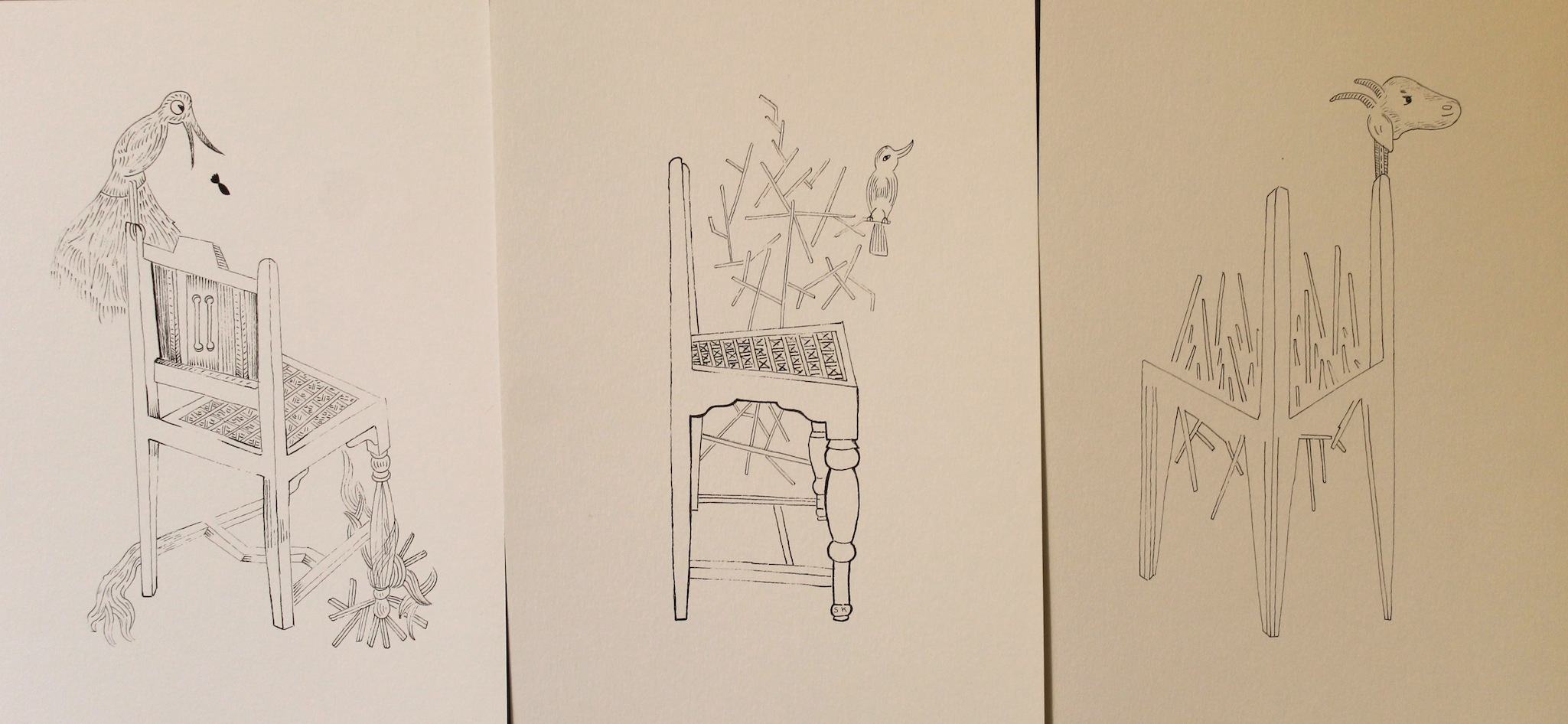 Shoili Kanungo, ‘Chairs’
Shoili Kanungo, ‘Chairs’
Is there a particular kind of thinking that accompanies translation? In asking this, we will, for now, assume that there is a stable meaning of translation and that we share the ‘same’ meaning. To make things easier, for the profit of simplification, let us say translation refers to the act of carrying meaning across from one text to another. This has been the blandest but most undisputed definition of translation, at least in the Anglophone academy. Implicit in this definition is the notion of a fixed text, a well-defined and bounded language, i.e. the source language and another, the language of target. The text is assumed to be a physical entity, not a glimpse of conversation or vignette of memory, but an entity that can be touched and felt. This also assumes the meaning that, as such, the text is under control and the translator knows exactly what that is which she must do the best job of carrying across, making her own presence felt as scarcely as possible. Some of the assumptions spelt out here have been interrogated, and some are swiftly on their way to being so.
(I am thinking here of Niranjan 1992;
and of Spivak 1993 and the anthropological
interventions in Clifford and Marcus 2010, among others.)
The consequences of asking certain questions may be dire, for they may shake the very foundations of language and translation. However, such self-reflexivity of the discipline is also timely, for it is pulling out translation from a perspective that reduced it to a mechanical, secondary, and instrumentalist activity. We gravitate now to the view that translation is a metaphor imbuing all cross-cultural exchanges, and in that sense it is ‘the metaphor of the metaphor’ (Sakai 2009). Another question is whether the myriad acts that sometimes go in the name of ‘making sense’ are indeed acts of translation, and similarly if ‘translation’ is an apt expression for the many endeavours of texts and people to become something and someone else (see Kothari 2014).
Questions such as these are unsettling for they reveal the lack of universality in translation, making some ask whether scholars from non-Anglophone parts of the world are arguing for cultural essentialism. However, these are for now internal battles of a ‘discipline,’ if you will, and evidence of the intense and hectic intellectual arena Translation Studies has become. For the purposes of this discussion, we will stay away from what might seem ‘nitpicking’ within the discipline. All the same, we can come back to the question raised at the very beginning of this essay: Is there a particular kind of thinking that accompanies translation? In different words: are there theoretical antecedents to the act of translation, or reflection following the act?
For the longest time, and oftentimes even now, such questions would have met with overwhelmingly empirical and autobiographical accounts of ‘how difficult it is to translate’, or ‘how do you find equivalence in such and such’. This may well have its value. When ‘viraha’ could not be substituted with ‘separation’, at least in an ideal world, the memory of Kalidasa and many similar literary conventions served to remind us that texts came with cultural residue. This knowledge introduced to us un-translatability not merely as a resignation, but as a productive site in which to study the incommensurability of concepts. That said, we must call to mind the fact that most ‘difficulties’ of translation, at least in the Indian context, relate to the difficulty of translating from a home-grown language into English. It is rare to find such troubling observations in intra-Indian languages. The challenges there are of a different order, but let us not digress.
If we spend time thinking about translation between an Indian language and English, what kind of thinking takes place there? My account below is a journey, the travelogue of a translator who translates from a couple of Indian languages into English. The attempt is to throw light on processes of subjectivity, mediation and the politics of translation, known and sometimes unknown or unacknowledged by translators. It is hoped that this will provide a view of the underside of a tapestry, and in the process hint at some of the ontological questions flagged at the beginning of this essay.
Location and Genesis:
I began my engagement with translation as a translator from Gujarati, though unreflective of the underbelly of language and identity politics in Gujarat. It was in my engagement with a post-partition and trans-border language like Sindhi that I realised translation was not something I was doing, but a space I inhabited, a space unmarked by fixed textuality; or rather a textuality ambivalent about itself. My arrival in this space constitutes the crux of this paper. In the process, I argue for making translation practices self-reflexive and theoretical, thereby accounting for the evolution of divergent translation practices at different times. The personal narrative aims to provide an insight into the dynamics of linguistic economy in India, and helps situate our translation practices in substantive contexts. Given the complexity of India’s linguistic politics, it is important to speak from specific locations, so as not to make broad generalisations which may not apply to all linguistic situations in this country.
For instance, in the linguistic world that informs the discussion below, Gujarati and Sindhi, the two ‘sources’, share an unequal relationship. The ‘Gujarati’ language is the nucleus around which the linguistic state of Gujarat was formed, on which much of its cultural and nationalist discourses rest. Sindhi, on the other hand, has been a de-territorialised language since the Partition of 1947, and it remains marginal to linguistic-cultural imagination of India. In their interrelation Gujarati clearly has the hegemonic role, although it remains dominated by English, as is the case with all Indian languages. Such hierarchies should be an important part of thinking about translation, and they beg examination in diverse contexts for a nuanced understanding of translation politics. Moreover, translators emerge out of specific historic circumstances, and the texts they choose to translate, or are thrust upon, may have surrounding circumstances which when articulated bring fibre to discussions on the cultural politics of translation. It is with this in mind that I turn to the period of the early nineties, when my generation was first encountering a shift in English studies, and the impact this had on translation practices in India.
My career as a translator began when English studies in India had undergone a period of fundamental questioning. Occasionally referred to as ‘the crisis in English studies’, the period was a response to postcolonial debates in English academia in both global and local contexts. A large number of translations in India today typically emerge from departments of English. English studies have always been a colonial legacy, but this fact began to be expressed (or felt?) much more acutely after the eighties. By then, many teachers of English in India had begun to articulate a sense of alienation and anger at having to teach a language and literature imposed upon them. The divorce between a subject interpellated by English studies, and the lived-in realities of India found expression through studies like Rethinking English (ed. Swati Joshi 1991), Lie of the Land (ed. Rajeshwari Sundar Rajan 1992) and Subject to Change: Teaching in the Nineties (ed. Susie Tharu 1998). Various alternatives to Anglo-American texts also emerged as a result of this debate, and the crumbling of the English canon made room for texts from ex-colonies, black and Dalit narratives. New paradigms were sought, dissolved and refined, facilitating reformulations in literary studies. One of the alternatives that began to satisfy many quarters, at least in English studies in India, was Indian texts in English translation. According to Meenakshi Mukherjee (1992) these were one of the ways of investing the teaching of English with relevance and meaning. I was a Masters’ student in the early nineties, and we were witnessing the beginning of the Indianisation of the curriculum. It made far more sense than the unrelenting British canon which had gone into my undergraduate studies. Typically, a literature student in the eighties lived through a schism between what she was studying in class and what constituted her reality outside. The Bollywood films and songs that formed our identities in profound ways had to be locked away and relegated to a background when we attended an English literature class. Therefore, when I encountered the Indianisation of the curriculum during my Masters and studied literature written by Indians in Indian languages (but made available in translation) and also written directly in English, things began to fall in place (see more in Kothari 2005a).
Translating (Sub)Nations:
Like me, many translators who translate into English have emerged from English literary studies. ‘Translation studies’ in the early nineties was still a fledgling discipline. However, the consciousness that not every region was represented in ‘national’ literature, and that therefore the regions we came from must be represented through English (which we as English teachers were best suited to do, or so we thought) animated many of us to take to translation. Some such motive governed my involvement in my first book project on translation, an English translation of fifty-six poems by Gujarat’s best-known poets of the twentieth century. My collaborator and I mentioned in the introduction that:
The sheer quantity of poetry written in Gujarati, published and read, is astonishingly large. Little or none of it has crossed linguistic boundaries, and been made available in English translation… By contrast, poetry in Bengali, Marathi, Kannada, Malayalam, to name just a few, has been widely translated and is therefore more visible. This may be attributed at least in part to the fact that the above-mentioned languages have produced poets who are also teachers of English, and sufficiently bilingual to engage in translating from the mother-tongue into English. [Also,] Gujarat has been perceived as a state producing business people rather than poets. The result has been the marginalization of Gujarati literature in the national consciousness. The present anthology is an attempt to modify that perception. (Ramanathan and Kothari 1998, xvii)
This moment provides an opportunity to visit the grandiose and unexamined claims made in our introduction, now (given my vantage point) asking why we thought a poem’s visibility was a matter of its being available in English. Or, why did we not see the institutional politics governing the ‘official’ Gujarati poetry scene? Did the neat design of the first anthology translated by two teachers of English literature not reflect the exclusions of this ‘representation’? We were happy to have worked with a state establishment which helped us gain access to poetry; however, why did we not reflect versions of ‘Gujarati poetry’ outside the state institution, producing a version that may have included oral and written literature, or literature written by tribals, Dalits and other marginalised sections? What relationship did my collaborator and I, both non-Gujaratis, have with the language, choosing to serve the dominant language of the state rather than our mother tongues, respectively Tamil and Sindhi?
As the years wore on, we also asked ourselves if Gujarat would consider us its own people, given its increasing parochialism and exclusivist definitions of who is an insider and who is not. Were we in small ways conforming to a version of the nation – the Hindu pride and identity, the asmita of Gujarat? By wanting to make Gujarati one of those ‘nationally visible’ languages, were we creating a new set of imbalances even as we claimed to address some? While I still subscribe to the view that ‘Gujarati’ literature (imaginative articulations in Gujarati and/ or its ‘dialects’ by both men and women, Hindus, Muslims, Christians, Parsis and Dalits) is relatively marginalised, I now perceive translation as a perspective that complicates the common-sense understanding of ‘nations’ and ‘sub-nations’.
From the upper-caste and upper-class bias of Modern Gujarati Poetry, I moved to translating a text by a marginalised Dalit (who were formerly called untouchables) author, Joseph Macwan (Kothari 2003). Meanwhile, my academic writing on translation questioned the hegemony of English, which as a target language brought the claim of ‘visibility’ to articulations that would otherwise languish in oblivion. That being said, I was also complicit in the enterprise of reinforcing the prestige of English as the only language of dissemination. To come back to the text The Stepchild: Angaliyat, it was a story of the Vankar community (weavers) who remained marginalised and oppressed by the landowning Patels in Gujarat. Social and political anger interspersed with my literary desire to translate this novel into English. All in all, my relationship with translation became a sociological one. Angaliyat became an entry point to understanding caste hierarchies in Gujarat, and I was enriched intellectually and emotionally by this new relationship with translation. In the process of working on this translation, it also became clearer why writing itself was a privilege that could not be taken for granted. As I delved deeper into the phenomenon of writing by Dalits, and how it could be emancipating, I realized that the vexed issues of representation and privilege surrounding the project of Modern Gujarati Poetry continued to obtain, even with respect to this text by an underprivileged group. Joseph Macwan who represented the Vankar community was relatively privileged compared to other Dalits from scavenger castes, or to night-soil carriers. Through Christianity the Vankars had had some access to education, but what about the thousands whom they look down upon? My romanticisation of the act of translating an underprivileged voice received a jolt, and translation became yet more complex as a socio-political act. I gained insight into the many subaltern histories that rupture the seamless narrative of the nation.
The understanding I derived from both canonised and Dalit texts sharpened my interaction with women’s narratives in the course of selecting them for the anthology Speech and Silence: Literary Journeys by Gujarati Women (2006). A sociological and ethnographic bias governed the selection of stories, which I identified not only for their literary value but also, or perhaps more so, for the light they threw on women in Gujarat. Gujarat is known for being a state where it is possible for women to go out at any time of day or night without worrying too much about their ‘safety’. The Gujarati middle class perceives this as a happy consequence of the fact that there has always been a prohibition on the consumption of alcohol in Gujarat. It’s a different matter that the state earns a large share of its revenue from the illegal circulation of alcohol. Similar discrepancies characterise gender issues in Gujarat, so that rising cases of violence against women and female infanticide remain unacknowledged even as repetitive claims about the safety of women continue to be made. I wanted the real and imagined worlds of Gujarat’s women to be juxtaposed in my collection, so as to foreground polysemic readings of the nation: what women were talking about, or more significantly what they were not talking about. These were often muffled voices that did not always negotiate with the unpleasant. Despite not being radical, they needed to be heard. As a ‘modern’, ‘radical’, ‘feminist’ translator I did not want to quell voices of conservatism, which need greater attention than the showcasing of only politically correct material. The selection of stories in Speech and Silence was subjective – as would be the case with any anthology or translation – mediated in this case by my subjectivity as a woman writer. This time I knew what I was doing, and I didn’t mind it.
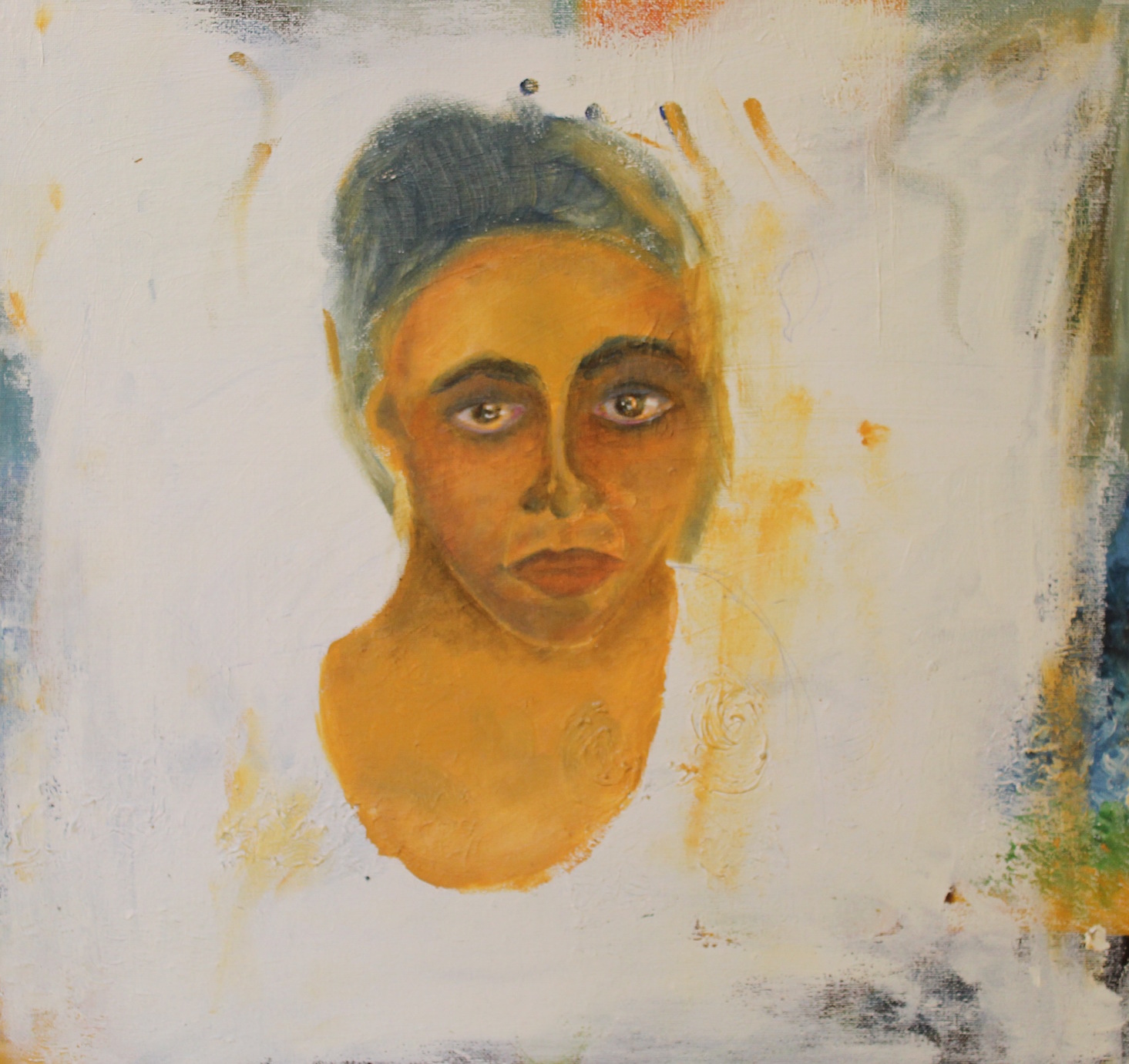 Shoili Kanungo, ‘From Nowhere’
Shoili Kanungo, ‘From Nowhere’
Is there an Original Text Anywhere?
I have a distinct memory of when the edifice of translation shook for me, and I began to see that the original was a dubious entity. The realisation came to me in ways both profound and anti-climactic, through two very disparate experiences. My collaborator on Modern Gujarati Poetry joined me in a small project of translating the poetry of Niranjan Bhagat. Bhagat is Gujarat’s best-known modernist poet, the first to document urban experiences in Gujarati. Influenced heavily by Eliot, Pound, Yeats and Auden, Bhagat brought a degree of fragmentation and irony to the lyricism of Gujarati poetry. The following is an excerpt from the poem ‘Gayatri’ (trans. Ramanathan and Kothari 2003, 10) an ode to the Sun but, really speaking, the allegorical representation of an entire era, written in the vein of Eliot’s ‘The Wasteland’:
One locks the door, pockets the key, and then
Climbs down and seeks the way (is there
A path to somewhere?) on sandals of the wind
To any, every path. But where to go?
And why? And how? Goals unfixed.
This passage is through hell, a golden
Illusory dream of heaven.
Smoke columns rise from chimney to the sky;
Sighs, momentarily inscribed and then erased,
Wander. Mutterings of sleep find echo
In rattle of cups and saucers in hotels.
Hugely yawning, languorous eyes now rubbed awake,
Limb’s laziness now shaken off, this island city,
Heavenly maiden, dreamland fairy,
Leaves her bed, and turns, how quickly,
Into an animal hunting its prey, wildly dancing.
A song on her lips; death’s surma in her eyes.
For centuries each morning now
The karmic wheel has turned. The world
Is energetic, new and fresh once more.
Only poet and whore now go to rest.
The unmistakable resonances of European modernism in Bhagat’s poetry raised important questions about translation. Translating it we felt as if we were returning something to the English language, something that rightfully belonged there. Or did it? At one level English carried Bhagat’s poetry far more ‘easily’ than it could have carried the lyrics and ghazals of our previous work. At another level, this ease was throwing up a set of difficult questions and making us uncomfortable, as voiced in our introduction below:
How is internalised Western influence to be re-translated into a Western tongue, and what is the result? Translating Pravaldveep has been an intense, exhilarating, and sometimes depressing experience. The dense and packed quality of such a poem as ‘Gayatri’ apart, the difficulty is compounded by the fact that, when translated into English, the shocking newness of the Gujarati simply disappears. Echoes of Eliot in the Gujarati marvelously enhance poetic impact; translated into English, they sound somewhat tired. This made us wonder whether translatability was the issue; or whether it was the English language and its resistance to non-English nuances. While English is acknowledged to be one of the most heterogeneous languages in the world; it appears for some reason not to carry the freight of its cultural encounters. While assimilation occurs in English at the level of lexis, permeation is seldom deep enough to permit sub-registers to be formed. This doubtless has something to do with power relations; linguistic equations are played out in a political space. Gujarati, on the other hand, especially, literary Gujarati, carries a bi-cultural weight with ease: while one layer of its own identity is retained, the residual memory of its encounters with the West constitutes another layer. (Ramanathan and Kothari 2003: Introduction, p.iii)
The circularity of the entire process was my first encounter with the hybridity of cultures translation unveils. What constituted the original and the translation? I didn’t know anymore. The author’s cultural mimicry raised the awareness that non-Anglophone experiences of translation are at times qualitatively different from the dominant perspectives of translation articulated in the West. The anxiety about ‘original’ and ‘translation’, for instance, is not universally germane – and there are even cases where the translation is privileged above the original. For example, in the plethora of (sub)versions of the Ramayana and Mahabharata which surround Indians of different caste, class and tribal affiliations, the question of possessing the most authentic version doesn’t ever arise. This is not to say that there are no internal hegemonies among the multiple versions: but that the anxiety of what came first and what followed is absent from the Indian discourse. This can be attributed to a long-standing oral tradition that remained free of notions of the ‘fixity’ of text. Some ‘texts’ start out as oral practices, yet even after being ‘fixed’ as written texts continue, even today, to undergo transformation through oral performance. Hence there is little agonising about original vs translation, or the need to respect the text’s boundaries. Contrary to the iconicity of association between the original and translated texts in Euro-American theories, elsewhere we find examples of multiple renderings of a text that are radically different from each other. Translators in such settings are not talking about the text as a fluid entity, they are just doing it. They implement un-theorised practices, and although these might seem to lend themselves to ‘postmodernist’ labels, regarding them in that light would wrench them out of their local contexts and cultures (more on this in Kothari, 2005b).
If the colonial context of Coral Island was raising questions about the originality of an aesthetic response, I encountered a delightful disregard for the original in translations of pulp fiction. The energy and irreverence of the bestseller market translations brought home to me a fresh perspective on translation studies. I have discussed this elsewhere in a case study of Ashwini Bhatt. What follows is a broad summary of the case: Ashwini Bhatt is even today a brand name in the area of translations of Western potboilers from English into Gujarati. His translations of Alistair MacLean and Sidney Sheldon constituted in the sixties hot little items that sold like one-penny books and satiated the desire for books with half-clad women and macho gun-carrying women. In the spirit of one of the characters of these American bestsellers, Bhatt also wrote novels which he humbly/ proudly claimed as translations, and perfected the art of the invisible translator. The moral, ethical, legal and academic implications of this phenomenon roused my interest but also revised my understanding of translation studies, showing me how limited and limiting its world was for not taking into account the messy, untheorised market of translations. The hierarchy between original, hence superior, and translation, hence inferior, was turned around in this case. I began to see translation in much more localised ways than before.
I wish to conclude this section by stating that in all the translations discussed hitherto, I was functioning as a literary translator comfortably ensconced in notions of what a text is; still speaking as someone ‘within’ translation studies. At this juncture, two important events fashioned a significant shift in my understanding of translation: the riots in Gujarat in 2002, and my own work on the Partition of India and Pakistan in the context of Sindhis. If in contemporary Gujarat I was witnessing the drawing and redrawing of rigid ideological borders of identity, religion and language within the state, in the Sindh of former years I found a blurring of borders. One was arguably India’s most urban, affluent states, raring to become global; the other a neglected, frontier region of undivided India, and now part of Pakistan. I marvelled at the irony of physical borders rendered arbitrary in the case of Sindhi-ness, and differences of religion becoming non-negotiable in a space that was supposed to belong to everyone living in it. It was the simultaneity of both these experiences that spurred me to rethink the relationship between translation and borders.
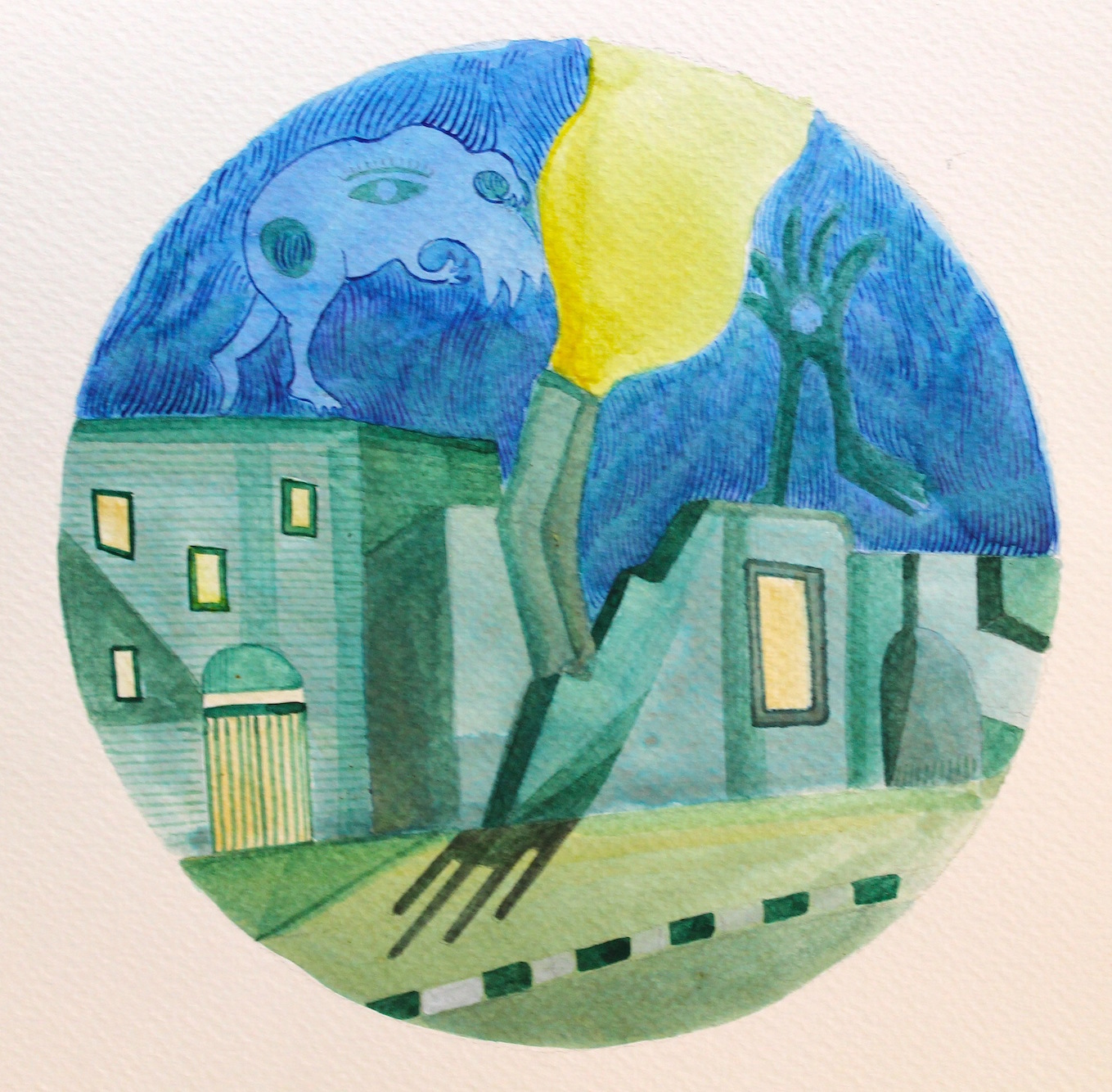 Shoili Kanungo, ‘Ghost’
Shoili Kanungo, ‘Ghost’
Un/bordering Texts and Textualising Identities:
The genocide of Gujarat 2002 has been much written about. My emphasis here is not a sketch of the events, but the processes by which borders have come to be fiercely drawn around identities. The story begins allegedly with the burning of a train on February 27, along with 58 Hindu passengers who were travelling in it. The gruesome event was allegedly perpetrated by a group of Muslims. What followed was the most frightening and unprecedented genocide of Muslims at the hand of Hindus. This event has been much debated and discussed; my focus though is on what that did to me, to my practice and self-perception as a translator.
I mentioned to you earlier the beginnings of my unease at having glossed over issues of caste and representation in my early translation work. I now faced two suddenly irreconciliable worlds, Gujarati and English, Hinduism and Islam, fundamentalist and secular ideologies. These polarisations, as many social scientists have shown us, were in the making over a long period. However, faced with these polarisations being enacted and performed in everyday Gujarat after 2002, I wondered whether translators could continue with previously held certitudes of source language and target language, nursing illusions about carrying over the best from one literature to another, or of seeing translation abstracted out of an acutely political context. At the most obvious level, I went through disenchantment with the bulk of Gujarat’s literature which maintained a complicit silence about the genocide. Literary figures from Gujarat refused to condemn the state and mass killings, claiming literature was above considerations of who’s right and who’s wrong. The desire to translate lay dead within me, stirred only by Wali Gujarati, the fifteenth-century Muslim poet whose mausoleum was desecrated as part of the annihilation of Muslim identity from Gujarat. I also found myself on one or the other side of a linguistically determined border, because English had been discredited in the state as an anti-establishment (therefore anti-Hindu) language, since the condemnation of the state’s role had taken place in English. Gujarati came to be synonymous with regressive Hindu fundamentalism, the language in which hatred for Muslims continued to be articulated and sustained.
As a translator, what was I supposed to do? With which language, which literature, which affiliation was I expected to side? The situation provided me with the first opportunity to think about the bordered and textualised worlds around me, and how the small, undefined place between certitudes that I occupied was under siege. This small space, which has no legitimacy in Gujarat because it’s too secular, has even less legimitacy among politically correct circles outside Gujarat, because it is not secular enough. My desire to be heard in different, ideologically inimical worlds, to move between them so as to permeate one with the otherness of the other, is my first understanding of translation and borders in this period. I have discussed this elsewhere in greater detail; for now, I wish only to quote from the same piece and say that ‘when languages are ascribed with war motives and used to divide people, I see translation as a stepping out of the zones of (con)texts in order to hear and be heard, as a way to heal wounds and bridge distances. This is not an idealistic notion of translation practices per se, but a conscious willingness to make translation perform certain kinds of roles. It is the willingness to migrate out of self-enclosed zones of languages, texts, and identities at large and to move into the zone of the ‘other’. This is a sophisticated choice translators can, and sometimes do, make’ (Kothari 2007, n.p.).
If I was engaged in creating and sustaining this in-between-ness in a state with ideological borders, I also somewhat paradoxically discovered such a space in existence, in moments of partition. My interaction with partition has been as a member of the witness generation. My parents migrated penniless and homeless from Sindh (now in Pakistan) to a divided India and started a new and difficult life as refugees. This has formed a part of my sociological work; however, I was also interested in bringing the domain of imagination to my understanding of Partition. This desire resulted in a collection of stories about Partition by writers on both sides of the geographical and religious border. In simpler words, the anthology includes stories by writers who by virtue of being Hindu migrated from the Islamic state to India. It also includes Muslim writers who document in their writings how life changed for them after the Hindu migration and the formation of an Islamic state of which Sindh became a part. In the process of this transborder translation project, the intertwining of translation and borders became acute. The contexts of affection, pain and empathy that bound the memories of writers from allegedly ‘enemy’ countries was a painful realisation of the arbitrariness of the borders.
An Excerpt from ‘Holi’ by Amar Jaleel:
To underscore this phenomenon, I narrate below a story called ‘Holi’ by the Sindhi Muslim writer Amar Jaleel (Jaleel 2009, 56-57). Both Jaleel’s personal philosophy of Sufism and his refusal to recognise the tyranny of institutional religion make him mark out a space in his stories which reflects an unease with easy definitions. The story I wish to discuss is imbued by memory that defies borders, even if the physical body is constrained by them. This is done through the metaphor of ‘Holi’, a festival celebrated by people moving around in groups splashing colours on each other.
‘Chacha, why do you call me holi?’
‘Because you are so lovable.’
But this did not satisfy him. He swallowed a few more morsels and continued,
‘Our new teacher asked me today why everyone calls me Holi?’
‘What did you say?’
‘I told her that my chacha has named me Holi.’ After a few sips of water, he said confidently,
‘The teacher also explained to me what Holi means, chacha.’
I began to wonder how a Christian lady teacher had explained to Holi the meaning of Holi. After all how would someone who never played with colourful water know what Holi means.
‘What did the teacher tell you, Holi?’
Holi raised his little soft hand to explain, ‘The teacher said Holi means sacred.’
I thought the teacher was quite right. The water you splash at each other with joyful love and togetherness is indeed holy. But how would this innocent little boy understand what I associate with Holi?
‘Putta, holi means holy water.’
Holi looked perplexed. The teacher had said that holi meant sacred, now what had that got to do with water?
‘So what kind of water is it?’
‘Very colourful, like a rainbow.’ I explained, ‘You fill it in pichkaaris, and spray it on each other, and that is Holi.’
‘But what is the colour of this water?’ he asked, placing his hand on his left cheek.
‘Red, and green, and pink… and…’ Overcome with emotion, my voice trailed away.
‘Who all play this game?’ Holi asked again.
‘Used to play, Holi putta, used to.’ I tried to control the emotional quaver. ‘I did, Prakash, did, then Purshottam, then Indra… and…’
My eyelashes moistened. Old wounds bristled. How can bygones come back!
Holi was listening to the story of colourful water with great interest.
‘From Sadhbelo to Shishmahal, it seemed Sindhu was filled with colour. Doro, naarishala, chabutra, chausor… everything had more colour than a rainbow.’
Holi was listening to his own story.
‘And you know Holi, Indra would visit my family and splash colours on everyone, including Amma, Baba, Ada and me. She would always come with the sky blue colour, mischievous girl, and her blue was so lovely… so…’
A blazing fire had turned fluid and struggled to break free from my eyes. I avoided looking at him, as I secretly wiped tears from the corners. Holi stood up in a flash, pushing his chair away. He put his soft, little arms around me and said,
‘Chacha, we shall also play the game of colourful water.’
Wounds became deeper, and pain more intense. Holding my sobs back, I said, ‘We don’t have that water, Holi.’
Holi’s face fell.
I gathered to myself a very dejected Holi and tried to comfort him.
Through the playful semantics of the word ‘Holi’, Jaleel expresses the nostalgia for a composite culture which eroded considerably when the subcontinent was divided into India and Pakistan. The festival ‘Holi’ signifies in the story a pre-lapsarian moment, when relationships were not tarnished by religious consciousness. Such moments may seem idealised, but to the narrator’s memory they are holy and pure, like the little child whom he loves and nurtures. Unfortunately, citizenship in nation-states made people choose one or the other world. Writing as Jaleel does about a trans-border memory makes Jaleel participate in a ‘carrying over’ from one domain of religion to another. By making his participation better known, I extend that participation across some more borders, and together we create a space, of a moment of in-between-ness, a space that is neither Hindu nor Muslim, neither India nor Pakistan.
The re-visits to translation projects in this essay attempt to demonstrate the complexity of questions attendant not merely upon practices of text, but also questions surrounding the text. Translators are far from being innocent and invisible mediators, and while institutional structures and publishing norms may have undermined translators, the practice is not bereft of deep and disturbing questions. Translators inhabit an in-between zone between texts and worlds which may see themselves as being ‘different’. However, the in-between zone has possibilities of interruption and intervention. As Emily Apter puts it, ‘In fastening on the term “zone” as a theoretical mainstay, the intention has been to imagine a broad intellectual topography that is neither the property of a single nation, nor an amorphous condition associated with post-nationalism, but rather a zone of critical engagement that connects the “l” and the “n” of transLation and transNation’ (Apter 2006, 5).
An earlier version of this essay was published in Said Faiq, ed., Cultures in Dialogue: A Translational Perspective (Apeldoorn: Garant Publishers, 2010, 33–46).
Rita Kothari
Ajrakh

(i)
Red, black, indigo
White scattered
A fistful of stars
Sky
Eye
Blood
(flowing heavy
between my legs)
Blank paper
I am not just in love
with Ajrakh
I covet it
(ii)
Azrak
Sound of blue
in the tongue of conquerors
I feel, familiar,
many ages and a continent away
in Istanbul
Aaj Rakh
‘Leave it for today’
in the tongue of the Rao
wrenching the khatri’s hands
into the salt desert
(iii)
At the Tropic of Cancer
The sun makes a river of the road
The maldhari man on a motor-cycle
clatters past, Ajrakh flying,
towards the sun-washed town
We move away, to Karo Dungar
The jackals still wait for their feed
of flesh, the cry of ‘lo ang’
‘Come, eat my flesh’
From across the white desert
wind lashes at the skin
to the backdrop of faith—
the temple bell ringing to awaken
sleeping gods to pilgrim’s prayers
Part-tourist, part-exile
It’s time to leave, find the way
back to the calls of the city
billboards on the highway
easing gradually into the bazaar
(iv)
Mother calls me Ajrakh-thief
On Diwali or not-on-Diwali
or in anger, looking for something to do
she empties cupboards
finding my hoard—
pieces of Ajrakh
(not one, three or four lengths,
machine printed, no more by hand)
and a saree of Ajrakh, hand printed
with a light gold border
bought in an air-conditioned boutique
(v)
Mamai Dev prophesied,
head resting bloody on a platter.
Now
Black chimneys vomiting fire
Now
Machines
usurp the skill of hands
on sale for foreign tourists
(vi)
You might call it a kerchief
but open my bag
and you will find a piece of the sky
In this burning desert
I cocoon myself
in Ajrakh
Mother laughs and says:
‘That is the smell of Kutch and Sind
coursing through your veins.’
(vii)
What is this craving
called Ajrakh?
(viii)
I reach for the fabric
touching my childhood
The Priest King of Mohen-jo-daro
with trefoil shoulder cloth
staring across 2000 years
(gaze frozen in smudgy
black and white)
from my history textbook
The Priest King’s trefoil shoulder cloth
comes alive, so I can feel it – coarse –
fragment from Fustat, under museum-glass
(ix)
Red, black, indigo
White scattered
A fistful of stars
Ajrakh
Red
Pomegranates
in the far Afghan snow
Red
Dusk melting
under the dancing feet of the bridegroom,
seerakh raised high over his head
Red
At printing time
the dense taste on Ismail bhai’s finger
dipped in mordant alum
Indigo
The colour that was
before blue turned red
in Champaran
Indigo
The Sufi fakir’s
peacock feather broom
oscillating in bandagi
Black
The dust of Maleer
waiting for Marui
Black
The colour of Baba Mekran’s donkey
carrying water for the lost traveller
in the desert
Black
the grains of sand covering
Shah Latif’s body
White
The cracks on my grandmother’s feet
awaiting the rain
White
the salt desert
(x)
Indigo
Odho Jam
in Hothal’s embrace
Red
Hothal’s kerchief soaked in
camel blood
Black
My mother’s Hothal’s hair
floating in the lake at Chakasar
White
My inheritance
Hothal’s courage
(xi)
Ajrakh
Sound of the Jodiya-pawa
rising from the dried oceanbed
of the banni
Calluses on the fingers of the jat
musician, raising the bow
of his surando to the sky
Under the shade of Karo Dungar
a kumbhar shaping clay into notes—
a Bhorindo to play with air
Shah Latif’s wai playing
on the ridges of the Black Hills
(xii)
Ajrakh
open sky
taste of exile
words drying
on a page
(xiii)
Ajrakh—
the red before land was carved
its skin clotted blood
Gopika Jadeja
‘How to Read Indian Myth’ and Other Poems
How to Read Indian Myth
(for AS who wonders)
How to read Indian myth?
The way I read Greek, I suppose
not worrying too much about
foreign names
and plots,
knowing there is never
a single point
to any story
taking the red hibiscus route
into the skin
alert to trapdoors, willing
—to blunder a little in the dark
—-slightly drunk
BLANK———on Deccan sun
but with a spring in the step
that knows
we are fundamentally
corky
built to float,
built to understand
and the chemical into which we are tumbling
will sustain
has sustained before
knows how to domesticate
BLANKBLANK—the gods
knows a way beyond
a way through
knows
the two
aren’t separate.
Read it like you would read a love story
Your own
Let me be Adjective
And so the verb is all
But I’m not ready for it yet
I tie knots
every now and then
to dam the flow
to pretend
I am thing
I am thing
and to pretend
you are too
And when the knots come undone
as one day they must
let me modify
qualify
anoint
counterpoint
apostrophise
parenthesise
invent
dissent
Let me take wing
Let me sing
you
I suppose I’m asking,
like the old bards did
to be your garland
not always tenderly floral
just a little tart,
a little contrary
the kind that isn’t always allowed
within walled gardens
But even as I meander,
BLANKBLANKlet my trail
BLANKBLANK——-be the thread
—-that completes the circle
I long to make around you
Love, let me be adjective.
Locality
He says he dreams
of a cottage marooned
in a moon-flecked ocean of paddy,
she of a solitude
defined by crickets and oil lamps,
and I know I often long
for some warm lair
in a craggy wilderness
suffused by the trust of animals,
monsooned in grace.
We promise ourselves we’ll do it one day
disentangle ourselves
from a world that would have us believe
this is the only way to live —
to follow the frantic zeal of streets
that hurry us all the time towards
offers open only till stocks last.
We tell ourselves we’ll do it,
move out to a place
where drifting across oceans,
limned with dawn,
through ever-widening shoals of stars,
is simply a way of being
intensely local.
Transplant
Show me a plant
—that’s not in search
of a pot,
that knows
——whether it’s meant
BLANK——for orchard,
BLANKrainforest,
or jam jar,
that knows, for that matter,
BLANK——if it’s a creeper,
BLANKBLANK—-conifer,
——or just an upstart crocus
too big for its boots.
You’d think it would get clearer with time.
It doesn’t.
And before you know it
you have yet another potted palm
with a raging heart
BLANK——of Himalayan pine.
Or just an old banyan
asking to be
BLANK——a little less ancient,
BLANK——a little less universal,
BLANK——a little less absolute,
a little more bloody
bonsai.
Quick-fix Memos for Difficult Days
1
Clear
clothes, pillows, books, letters
of the germs of need —
the need to have things mean
more than they do.
Claim verticality.
2
Trust only the words that begin
their patter
in the rain-shadow valley
of the mind.
3
Some nights
you’ve seen
enough earth
and sky
for one lifetime
but know you still have unfinished business with both.
4
So here again,
that old cliché, pain,
and its endless syntax
of gurgle and clot.
But better swamp —
always better swamp —
than scrubland.
5
Settling is bondage.
Wandering, vagabondage.
(Someone said that before?)
(Citizenship is bondage.
Dual citizenship, James Bondage.
That’s a first!)
6
Once you know
what it’s like
to be chieftain,
serf, concubine
and prop,
what’s left?
You choose story
or you choose curtains
story
curtains
story
curtains
until you’re done with both.
7
Once you’ve seen grain
you don’t settle for acrylic emulsion.
8
Stretch
until you reach
the edge,
then consider a pause.
(It’s usually worth it.)
9
When they vanish,
leave the door open.
Gingerbread boys
run away but return eventually
to their bakers.
Arundhathi Subramaniam
Language, Representation and Protected Ignorance
Dr Y.S. Alone teaches at the School of Arts and Aesthetics at the Jawaharlal Nehru University (JNU), New Delhi. In this interview, Prof. Alone discusses the institutionalisation of ‘protected ignorance’ in postcolonial India, which renders transparent the brahminical politics driving critical and everyday practices and discourses. He argues that, in a process dating at least to colonial times, when artists and other thinkers do develop a counternarrative to hegemonic brahminical thought, they are typically rendered to the ‘margins’ so as to protect the purity of ‘mainstream’ thought.
We interviewed Prof. Alone in January 2017. Last month, when he and other faculty members were served legal notice by the JNU administration for addressing students on strike, the Indian Cultural Forum site published another excerpt from our conversation, focusing on Ambedkarite politics and contemporary student cultural/ political collectives; you can watch it here.
An excerpt from ‘Language, Representation and Protected Ignorance’:*
Modernity has multiple strands and manifestations in the colonial period. At the political level, it was a struggle to advocate political democracy as a modern means of espousing the nation/ nationality terrain, as a cosmetic adoption in caste-society, without bringing any social change. In such a context, it needs to be reinvestigated whether modernity is a systemic tool for maintaining the power relationship operating within the caste hierarchy. Tradition, as put forth by the Brahmanical reconstruction of a cultural past, negates the idea of the modernity of criticality; at the same time, Sanskritisation against the backdrop of modernity generated the debate of cultural modernity, which was confined to the idea of the greatness of tradition, and was very city-centric. Urban and non-urban became the subject of disseminations in pictorial language. The idea of village society, as advocated by M.K. Gandhi, remained a very romanticised realism: it did not address caste perceptions. Village India as a social category got highly exotic representation, more like the orientalised perception of urban India. No artist could really think from a non-Gandhian perspective.
In this context, the debates between Gandhi and Ambedkar are extremely revealing: the two being located in colonial modernity, with the former adhering to the varnashramadharma and the latter advocating the destruction of the caste-varna model. Dr Ambedkar makes a distinction between Ranade and Gandhi, saying, ‘In the age of Ranade the leaders struggled to modernize India. In the age of Gandhi the leaders are making her a living specimen of antiquity.’ At the same time Ambedkar rejected the idea of ‘inner voice’ (in ‘Federation versus Freedom’). The caste narratives of even the post-Ambedkarite period are testimony to the fact that the country is a living specimen of antiquity.
Interestingly, the intellectual and creative realms are directly and indirectly connected with caste-Hindu perceptions. The pertinent question would be to evaluate perceptual realities and perceptual understandings. Perceptual understanding empowers one to enter the analytical field of inquiry, where value judgments become an essential means of interrogating objectives as well as mental formulations. Even proclaimed progressives, including proclaimed socialists and liberals, in the fields of creative writing and art practices, remained within the fold: of the caste-perception of superiority and the Gandhian idea of ‘inner voice’. The generic intellectual sphere of high-caste understandings dominated the worldview of artists and intellectuals/ caste-Hindus, in which the self-centric representation of the new nation as the representation of normative/ unchanged perceptions was never questioned. Every realm was dominated by the static caste perception, to the extent that they could never differentiate between the modernist project of Gandhi-Nehru and that of Phuley-Ambedkar.
Ambedkar vehemently opposed the Gandhian perception of morality, which was based on following caste-duties as the supreme way of living. The caste-Hindu modernist uncritically absorbed Gandhi’s cultural nationalism. It percolated the minds of many because it was deeply rooted in Brahmanical reconstructions: they had no problem accepting Gandhi as the sole representative of the freedom struggle. S. Radhakrishnan finds in Gandhi a persona representing the tradition of truthfulness and dutifulness: ‘From ṣis of the Upaniṣads down to Tagore and Gandhi, the Hindu has acknowledged that truth wears vestures of many colors and speaks in strange tongues’ (The Hindu View of Life, 1954, 36). G. Aloysius explains that ‘the political process in colonial India was dichotomous in an ideal-typical sense: the traditionally dominant communities of Brahmins and allied upper-castes, brought together in terms of newly created economic and political interests, raised the slogan of nationalism when the British attempted to withdraw their exclusive patronage’ (Nationalism without a Nation in India, 1997, 216). He further observes that ‘what came to be looked upon as the nationalist class was nothing but the disparate and traditionally dominant castes and communities gathered together in their interest to preserve their traditional dominance on the one hand over the lower caste masses, and to enlarge their area of dominance in the new political society on the other’ (221).
Thus the discursive process was narrativised in the projection of Gandhi as father of the nation. The desire of the modernist as well as the post-colonialist has always been to eulogise Gandhi, without any inference. There is no difference, no oppositional logic; it is fixed to defend. Fixity and rigidity operate as a psyche, a finite consciousness nurturing aspects of ignorance to their finest level, where no destabilisation or questioning is allowed. The projection of the Gandhi figure is a fabulous example of the bhataji-shethaji nexus (the Brahman-priestly caste and the trading class). Even today, quite a number of artists paint Gandhi in a celebratory mode. The contemporary painter Sudhanshu painted Gandhi as walking on a pointed saw, and in another painting used a watering can as a marker of his community affiliations. According to him, when Gandhi was shot dead the first person who held him up from the ground was the gardener who worked in the premises of Gandhi’s residence in New Delhi. It is interesting to observe that Sudhanshu could relate himself very easily to the image of Gandhi; not, however, to Mahatma Phuley who was also from the Gardener caste, and was radical in his thinking and functioning. No post-colonialist, no modernist has shown any point of difference with the image of Gandhi; those like Akeel Bilgrami and many others have showered considerable love on Gandhian ethics. Bilgrami refuses to read any contradictions as well as problems in analysing Gandhian ethics. (in ‘Value, Enchantment and the Mentality of Democracy, Some Distant Perspectives from Gandhi’). Gandhi’s love for the shastras (sacred scriptures) testifies that his understanding was deeply rooted in the religious dogma of the sacredness of the caste institution.
Ramkinkar Baij, a sculptor from Bengal from the Shudra community, showed the courage to be different and did not allow his conscious to accept the normative understanding of Gandhi. Between 1953 and 1955, in the Shantiniketan premises, he created a huge sculpture of a walking Gandhi. He also produced a number of key models as precursors to this sculpture. Ramkinkar’s image of Gandhi has remained the sole example from a modernist who refused to accept Gandhi’s persona as that of an extraordinary person. A huge image of Gandhi is constructed upon a big pedestal. A human skull is placed under Gandhi’s feet. According to Ramkinkar, ‘Gandhi became Mahatma by crushing people.’ Ramkinkar revealed his statement when Ritwik Ghatak made a documentary showing Ramkinkar before the colossal image of Gandhi and explaining the importance of the human skull. He was the only artist who decoded Gandhian achievements by placing a skull under the feet of a tall, towering Gandhi image, in Shantiniketan. It was a systemic intervention by a sculptor whose ideas were rooted in pragmatic understanding, and not in romanticising the icons of the so-called freedom struggle.
The post-independent modernist project of formalism became a convenient tool of vibrancy in the plasticity of painting. As for subject matter such as suffering – social suffering was represented mainly through Christ, and by the depiction of a common man whose identity is totally concealed as part of the conscious preferred symbolic gesture to maintain a disconnect from social realities. Abstraction was another form of expression that received considerable attention, as one of the derivations from European art movements.
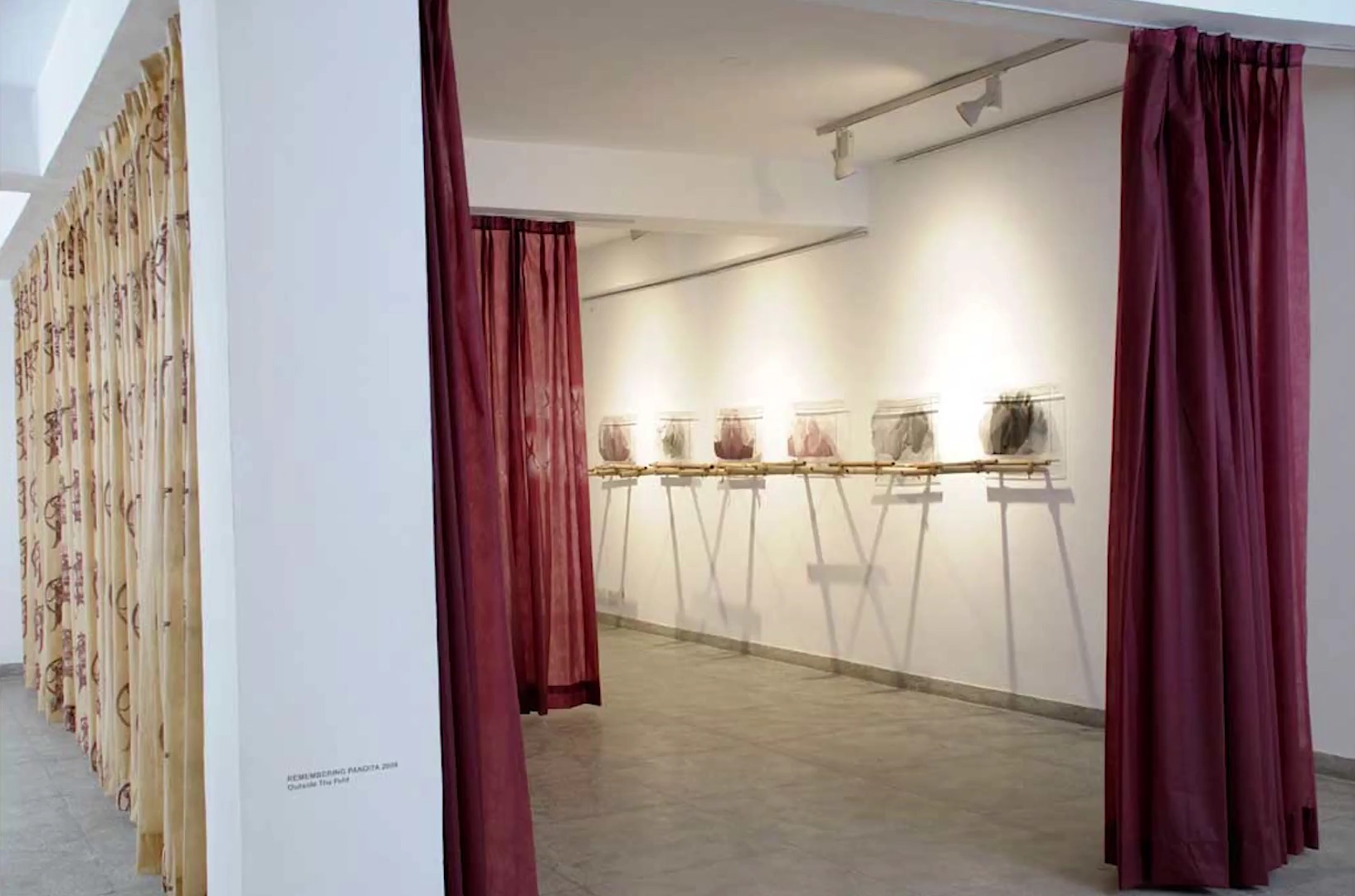 Shukla Sawant, ‘Outside the Fold’, from the Remembering Pandita series, 2009
Shukla Sawant, ‘Outside the Fold’, from the Remembering Pandita series, 2009
Post-colonialism has projected Gandhi as an icon against colonial rule or colonial supremacy. There appears to be an obsession to consider or legitimise each and every figure that is part of the anti-colonial struggle. Postulation is directed toward scheming the narrative of caste-Hindu hegemony with the idea of blaming the colonial world. Leela Gandhi observes that ‘if Gandhi speaks in an anachronistic religiopolitical vocabulary, Fanon’s idiom is shot through with Sartre’s existential humanism’, concluding that Gandhi’s encounter with British imperialism generates a theology of non-violence (Post-Colonial Theory, 1998, 18). It is extremely insensitive to make claims regarding the emergence of a theology of non-violence, given that such signifiers have emerged outside the field of Gandhi’s own writings. Readings are structured well within the ‘re-called’, or the ‘process of remembering’. While re-calling memories of anti-colonial struggle, Leela Gandhi does not go into the body of writing produced by Gandhi himself, nor look into the subjective fields of operations during colonial rule in India. It is a state of conscious adherence to the normative understanding espoused by the physicality of caste perception, where there is an ego of caste and the consciousness of dominance, in order to subscribe to the rhetorical, uncritical inference that would consistently protect the agency of hegemony. A theology of non-violence, when located within the Gandhian notion of Sanatani Hinduism, dislodges the claims of theology; as does the fact that Gandhi claims (in Young India, October 1921) that he is a Sanatani Hindu because he believes in the Vedas, Upanishads, Puranas and all the other Hindu scriptures, and therefore Gandhi believed in idea of avataras (reincarnations of gods) and re-birth. Gandhi equates non-violence with the truth, but the very belief system in which he is deeply rooted does not venture an understanding of truth; nevertheless, truth is understood from the notion of divinity and the sacredness of belief systems. The caste narratives completely dislodge the Gandhian theology of non-violence.
Writing in the Harijan newspaper on August 2, 1942, Gandhi said that he would not ask Congress leaders to make any untouchable legislator a minister: protection mechanisms for the marginalised should not be extended to such a level that it proves harmful to them and to the country. For Gandhi, having a minister from the untouchable community in the government was deemed harmful to the nation, indicating how Gandhi’s and the Indian National Congress’ ideas were governed by caste considerations. As for the fact that they were opposing oppression by the Colonial ruler, they were, on the other hand, protecting the native landlords who were also exploiters. The other non-Gandhian Brahmanical voices become ‘the others’, i.e. outside the fold of Gandhi-Congress. Otherness in the anti-colonial struggle is not contemplated as real, and democratic; instead, the very convenient nomenclature of ‘casteness’ (today the nomenclature is ‘castewalas’) shows how the ego works in the intellectual sphere. There is always considerable studied silence whenever contradictions within the persona of Gandhi come to be discussed. An attempt has also been made towards understanding Gandhi within the praxis of Marx and modernity (Marx, Gandhi, and Modernity, ed. Akeel Bilgrami, 2014). However, there is no desire to interrogate the moral and the political. There is an acceptance of the repressive caste structure from a position of power, in order to control discourse and the power of discourse. Therefore, the so-called intellectuals who are involved in the knowledge production process, are creating a discourse by means of ‘protected ignorance’.
Savi Sawarkar
As discussed earlier, modernist painters have not addressed the issue of caste in their pictorial representation, as their pedagogic persuasions and political understandings forbid them to think differently. Savi Sawarkar happened to be the first gallery artist who challenged the very discourse of Brahmanical cosmetic modernity and its aesthetic canons. Savi created his own iconographic signifiers to signify the social identity of the untouchable community. His intervention is not merely social, but political as well as aesthetic, designed to make the viewer realise how he aims to hit spectators with his volatile images that shake the perceptions of caste-Hindus. His personal intervention in creating iconographic symbols had its genesis in the historical location of the community. By the time Savi started painting, Dalit life narratives had emerged as a powerful means to explore the world of caste narratives, which show realities of life. ‘Three Untouchables under the Black Sun’ is a telling work that makes a profound statement of the abject poverty and conditionality in which the untouchable community live their life. The black sun is a symbolic representation of the darkness in daylight which forbids untouchables from having any freedom. The Sun is a generative symbol of brightness and a ray of hope. Its embedded property of the emanation of light and energy is a testimony to how the sun’s presence is important and gives energy to everyone. But in the life of the untouchable, no such luxury exists. Though it operates at the imaginary level, the critique of have-nots as defined by caste in society is a glaring physical and material fact of life of the community. It is interesting to see a parallel in Upara, the caste-life autobiographical narrative by Laxman Mane. Mane’s narrative shows the startling condition of his community living in the outskirts and garbage of village and city. In exactly the same manner, Savi’s painting shows the same narrative of caste-life and the ways in which a particular caste has to survive even in the post-colonial situation.
After Savi heard a song by JNU professor Dr Tulsiram – ‘manua mah thagva ham janirea aur kais kaisa ras aras iye’ – he realized how Manu was a villain for Dalits and others. Around 1990, there was the large-scale atrocity near Agra where Savi also visited. It moved Savi with lot of anger and hate towards ideas of caste and its legitimacy. He discovered how ‘Manu’ was the generator of such heinous life, and how it is an idea that goes into the everyday caste narrative of caste-Hindus. His series of visual representations of Manu offers a reading of how ignorance is propounded by the Brahmanical ethos, where past and present are deeply entrenched in psychotic perversions. For him, Ambedkar becomes a cardinal figure of inspiration that critiqued Manu in the strongest possible manner. ‘Dalit Pissing on Manu’ is indicative of Manu’s rejection by Ambedkarite society. There exists an inherent nature of image that is symbolic but at the same time equally real. There is a desire to create an imagery that will not be transcendental but more physical and real, which will force the viewers to rethink their thick-skinned caste practices and behaviour. Symbolic, in this case, is just an idea to denote the caste-Hindu who is absent in the pictorial space but is part and parcel of violence imposed, codified and practised as normative. The perception of the caste-Hindu is that of otherness and exclusion. Their ego is reflected through violence and imposed codes of conduct.
All Savi’s earlier works on the figure of the Devadasi had a very different narrative quality, showing cardinal events, emphasising the caste-narrative ordeal through torment and sexual exploitation. Many found his works extremely hard hitting. In later works, the element of caste-violence takes a different turn. Without compromising on the quality of expression, Savi’s endeavour of caste-narrative explores the language of minimalism loaded with the background of caste-narratives. The Devadasi is shown eloped with the body of a Brahman. Here embrace has a dual meaning: of the control of the Brahmins of their social orders, and on the other hand, a meaning connected with the lust of a Brahmin who would not like the Devadasi to go out of its fold. Perversion is a very fundamental aspect of sexuality when it comes to the heinous practice of Devadasi. Embrace of the Devadasi with the Brahmin body is indicative of the Brahmanic control over her own body, and at the same time, the Devadasi extending her hand out of the Brahmin body and holding the dhammachakra shows the transformation.
 Savi Sawarkar, ‘Devdasi and Brahman with Dhammachakra’, dry-point, 11 x 14′, 2001
Savi Sawarkar, ‘Devdasi and Brahman with Dhammachakra’, dry-point, 11 x 14′, 2001
It is very important to understand the complex nature of sexuality operating through the religious institution, and the way it is nurtured as part of the male dominance of pleasure: where an adolescent girl is initiated as Devadasi, enjoyed first by the priest and later the chief patron, mainly landlords consisting of Lingayats and Marathas. One will have to recall the ways in which psychoanalyst Sudhir Kakar analyses the nature of upbringing in society (The Inner World, 1978). For Kakar, the ideal of the Hindu household is in following the Rama-Sita ideal: however, the tradition and practice of Devadasi completely denounces the example of Rama-Sita ideal in Indian society. Mythic becomes an ideal that never gets disseminated, by means of the idea of killing ignorance. The moral self becomes a self-reflective category of ignorance embedded in the caste-ridden perceptions and ideals of caste-living. In fact, the Puranic tradition and larger Hindu traditions do not allow followers to be enlightened beings, as there is a fear that there would be a collapse of ‘agency’, which would not permit the egoist male to exercise sexual perversions. The life of a Devadasi is very traumatic; Savi brings forward their trauma through the physicality of the body; it is a desired body and a mutilated body. Devadasis undergo series of abortions; Savi captures graphic representation by using the static body with a surgical cut mark on the stomach.
* This is an edited excerpt from the draft text of a public lecture delivered at the JNU in September last year.
Also see ‘In Memory of Rohith Vemula’ by Savi Sawarkar, Meena Alexander and Orijit Sen, here.
A conversation with Y.S. Alone
Learning from John Berger
John Berger’s writing speaks to me in Punjabi – my mother tongue. I receive it in the way I receive and appreciate music; any music.
I met John for the first time on the 15th of September in 1995. He was at the Institute of Contemporary Arts (ICA) in London to talk about his novel To the Wedding.
I introduced myself: ‘I am the one who wrote the poem ਲਸਣ (Lasan/ Garlic).’ We had not met but he had read it for a film on his life.
After that we exchanged several letters and met many times. I last saw him at his home in Paris, in April last year.
I wrote this poem in Punjabi after our first meeting. Here is an English translation:
JOHN BERGER GIVES A TALK AT THE ICA ON 15.09.95
i hear your voice
not the words you utter
i hear as one touches a fruit
without the need to know what’s inside
as man touches his own kind
as light touches its own colours
your voice –
an echo beyond language
i hear you
as one hears for the first time
i think it’s my voice
just now i touched it with my finger tips
did you hear?
Read the Punjabi original here.
 John Berger in Paris, April 2016 / Amarjit Chandan
John Berger in Paris, April 2016 / Amarjit Chandan
A sentence in one of John’s essays ‘whispering to the faded ink of father’s writing’ inspired the next. I sent it to him. He wrote back: ‘I find your poem so beautiful – like an avenue in a city I was wanting to reach. Thank you for it. And tell your father I thank him.’
TO FATHER
As you taught me to write the first letter
Of Gurmukhi – the Punjabi script
holding my nervous hand in yours
You taught me to hold the camera
to focus on faces in the pupil of the eye
and to press the button holding my breath
As if it were a gun
loaded with bullets of life.
Where are you now father?
Can you take some time off from death?
I’d like to take my self-portrait sitting next to you
with a glint in my eyes.
Remember that photograph you took with the self-timer
of us together many years ago
You holding me cheek to cheek?
The photograph doesn’t show the lump in your throat.
We’ll exchange pictures I have taken
of faces you haven’t seen
and of places you never visited
and you can show me yours taken in the valley of the dead.
I had read in one of John’s essays that there is only the present. I sent the following poem to him. He wrote back: ‘Your poem is wonderful, and like a range of mountains takes us very far, to where the little remark of mine was pointing.’
The poem starts with an Arabic word, ‘kun’. It means the act of manifesting, existing or being. In the Qur’an, Allah commands the universe to be – ‘kun!’ and it becomes, fayakūn.
GRAMMAR OF BEING
God uttered a word: Kun Be – and it was.
Be is the seed of all verbs.
So many verbs make a noun.
The noun is the fruit
the seed ripened waiting to be sown again.
It’s the end of the continuous verb
happening in the present perfect
all the time.
The noun is the ultimate verb
of conception of bearing that reaches its end
of no end.
The pyramid rests on the triangled tense.
The noun is the point on the pyramid top
where the journey starts towards the timeless
in the present.
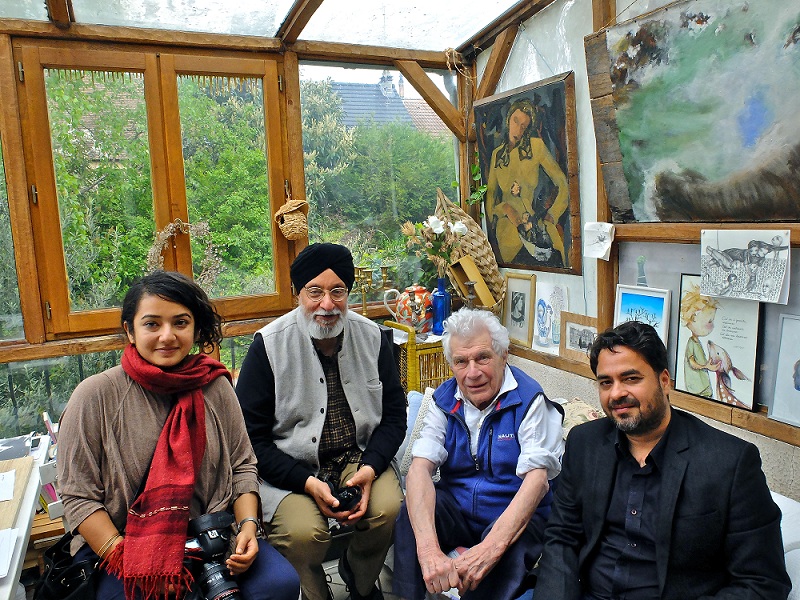 (From left) Sunaina Singh, Amarjit Chandan, John Berger and Gurvinder Singh, Paris, April 2016 / Nella Bielsky
(From left) Sunaina Singh, Amarjit Chandan, John Berger and Gurvinder Singh, Paris, April 2016 / Nella Bielsky
The next poem, ‘Mapping Memories’, has John’s masterstroke.
He changed the line ‘here ends your return journey’ to ‘here ends your returning’. I had sent the poem to him mainly because it deals with his famous concept of ‘the myth of return’ from A Seventh Man. Since then, it has been used in sociology. In the book he says:
The final return is mythic. It gives meaning to what might otherwise be meaningless. It is larger than life. It is the stuff of longing and prayers. But it is also mythic in the sense that, as imagined, it never happens. There is no final return.
But in the poem it happens. I said to him: ‘Here in poetry the myth is broken, John!’ He laughed. Then he read it on camera, saying: ‘I love its cartographic precision and its deep truth.’
MAPPING MEMORIES
Imagine it is a paper.
Look at it.
It is a portrait of the earth.
See where the needle of your magnetic heart stops.
That’s it. That’s the place you always missed.
Put a dot.
Touch it with your fingertip. Softly.
It throbs.
Then put another, and then another till a line is formed –
The umbilical cord reconnecting.
The spot is the cartograph of your memories.
It is the wound healed.
A dot shines on the page
at the zero degree of all directions.
Here ends your returning.
You are home.
 John Berger, ‘The Key of Poetry’, 2012 / Courtesy Amarjit Chandan
John Berger, ‘The Key of Poetry’, 2012 / Courtesy Amarjit Chandan
Amarjit Chandan
The Himmat Workshops
Himmat was formed in the wake of the state-sponsored genocide of Gujarati Muslims in 2002: it was at the time a collective composed of riot-affected women from Naroda Patiya. Its co-founders Monica Wahi and Zaid Ahmad Shaikh introduced Baroda-based artist Vasudha Thozhur to six girls Himmat was working with – Tasleem, Rabia, Farzana, Shah Jehan, Rehana, and Tahera – all of whom had lost their families in the massacre. They were aged 12–19 at the time. We are proud to share with you a glimpse of the decade-long art project that followed.
Our walkthrough of an exhibition, held at the Jawaharlal Nehru University in 2015, of the art that emerged from Himmat
Narratives of Strength and Survival / An Archive
The Himmat Workshops
Funded by the India Foundation for the Arts
Himmat Centre, Mayur Park, Vatva
January 2005 / Posters The first couple of sessions that we did dealt with colour – we started with marbling on paper, some tie and dye, some drawing, printing with vegetables, collage with fabric. We made bookmarks combining the vegetable prints and fabric collage. There were sacks full of scraps of waste fabric at the Centre in which we used.
The girls were given notebooks that they could draw or write in, so they could keep records of the process.
We went on a visit to the Kanoria Art Centre, where we met Sharmila Sagara who invited us to participate in the art festival that was scheduled for February. We also visited the National Institute for Design, where the staff took us around. We had the benefit of short demos in every department, and interactive meetings with the students.
Azra Khan came over from Baroda on the last day as a resource person and showed the girls how to make stationery, and some simple book-binding techniques.
With the output from the first session, we made posters for the sale of garments which Himmat had organised in Bangalore and in Goa.
Later, we sold six of these to Oxfam and with the proceeds, we started literacy classes for the girls. A local resource person, Shahana, was willing to conduct the classes, for an hour and a half every day.
The girls began their sessions and by May were able to sign their own names.
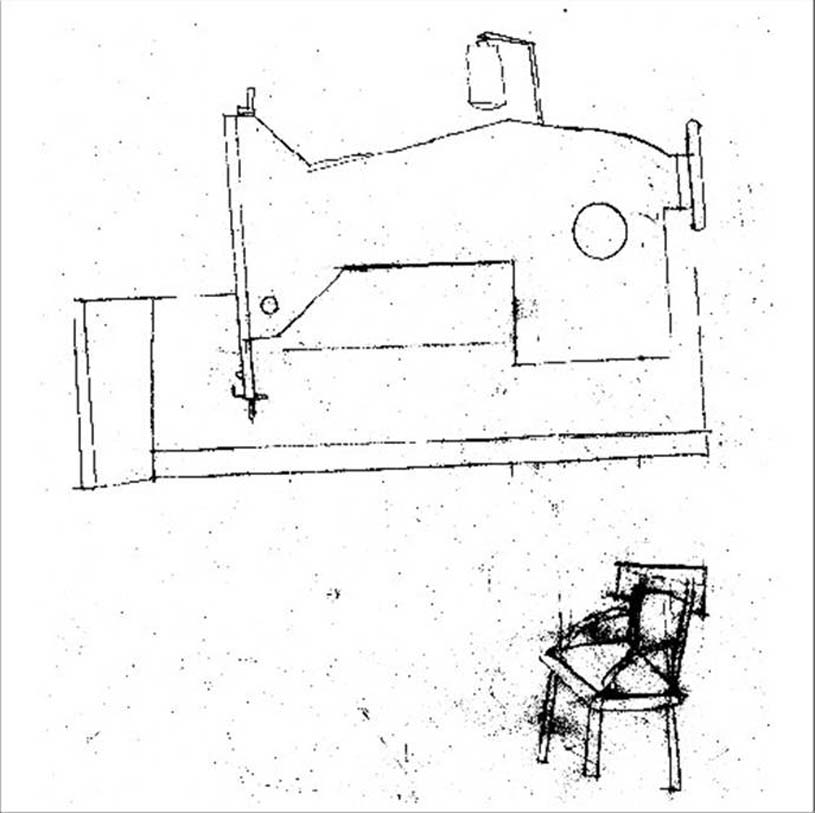 Shah Jehan Shaikh, Untitled, 2005
Shah Jehan Shaikh, Untitled, 2005
February / Madhubani painting, batik with vegetable dyes The second session took place at the Kanoria Art Centre: we had been invited to participate in the annual art festival there. Tahera, Rabia and Farzana were in the madhubani workshop, conducted by Shatrughan Thakur. The selection was made on the basis that the three had a reasonable good hand, and were more fluent at drawing than the others. The idea was to use the madhubani tradition as a teaching aid, to help them arrange elements spatially, on a flat surface – the girls’ level of perception and expression of the physical world corresponded with the strong decorative sensibility of folk and tribal forms. They were also familiar with mehndi patterns, which appeared frequently in their drawings.
The other three, Tasleem, Shah Jehan and Rehana learnt to do batik with vegetable dyes, with Pravina Mahicha. They were inhibited about drawing, and the medium and the dyeing process were intended give them a sense of freedom and tactility. They later did a three-day madhubani workshop with Shatrughan at the Centre.
 (l) Rehana Shaikh, Untitled, 2005 (r) Tahera Pathan, Untitled, 2005
(l) Rehana Shaikh, Untitled, 2005 (r) Tahera Pathan, Untitled, 2005
April / Fabric collage We were finally able to begin working in our own space upstairs, convenient for several reasons. We began working with fabric, and Sharifa, one of the older women, was our resource person. She could work on the haat, was expert at embroidery and basic appliqué, showed us how to transfer our cartoons on to fabric, and guided the girls whenever they needed help.
We a made a set of purely experimental pieces, with appliqué and overlapping areas of transparent fabric. It was also an exercise in colour-mixing. The work extended over two sessions, into May.
April / Fabric, embroidery We worked with Roumanie Jaitley, using the running stitch on a set of six pieces of fabric which were originally meant to be cushion covers, but they seemed significant in that the motifs were recurrent in most of their work. They are framed and presented in a manner that is in keeping with a more complex narrative.
Mayday Rally Placards May 1 coincided with Himmat’s birthday – there was a Mayday rally Himmat was participating in. On the last day of April, the girls made a set of placards, very quickly, which were later taken out in procession. The slogans were composed by Monica Wahi.
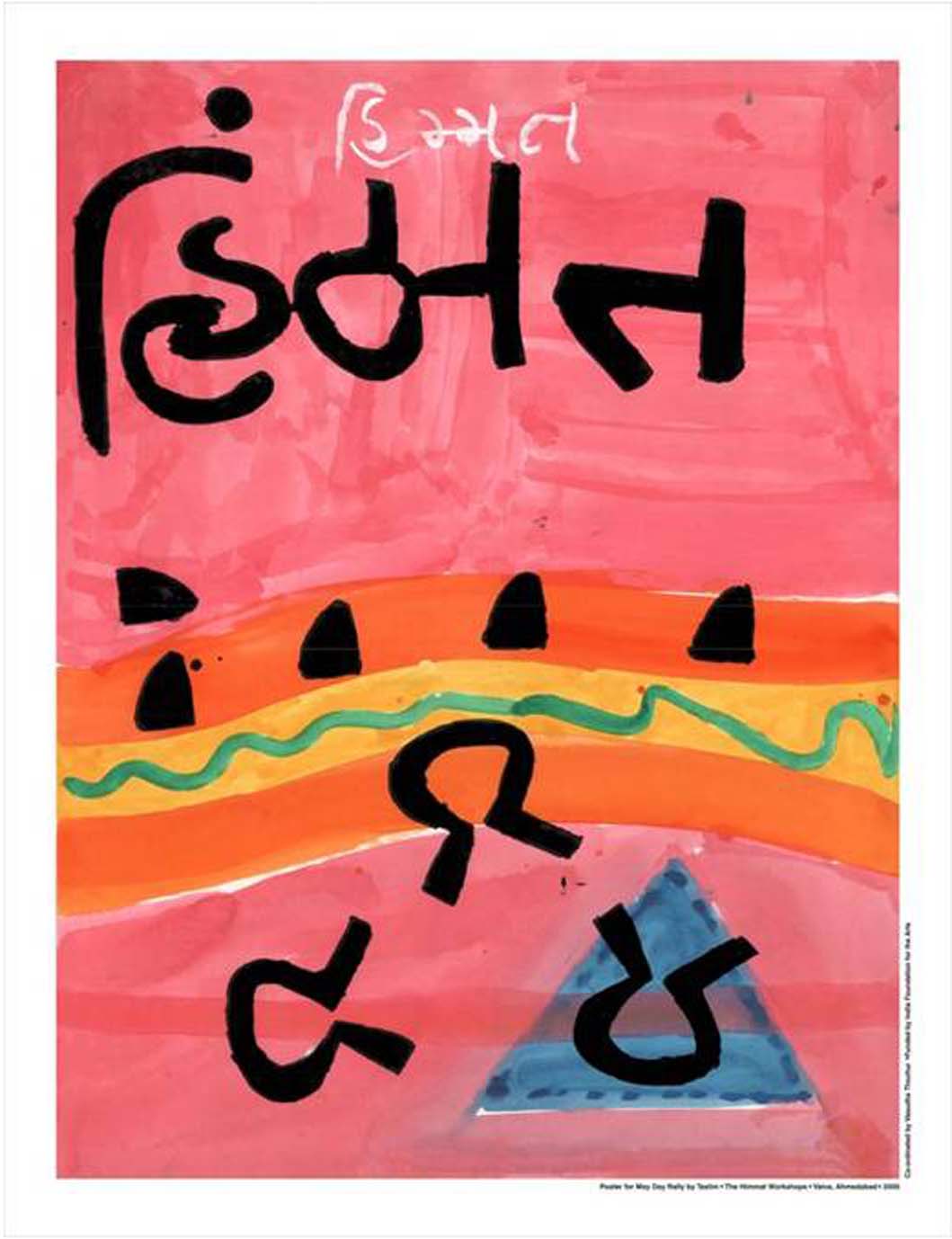 Taslim Qureshi, Untitled, 2005
Taslim Qureshi, Untitled, 2005
 Shah Jehan Shaikh, Untitled, 2005
Shah Jehan Shaikh, Untitled, 2005 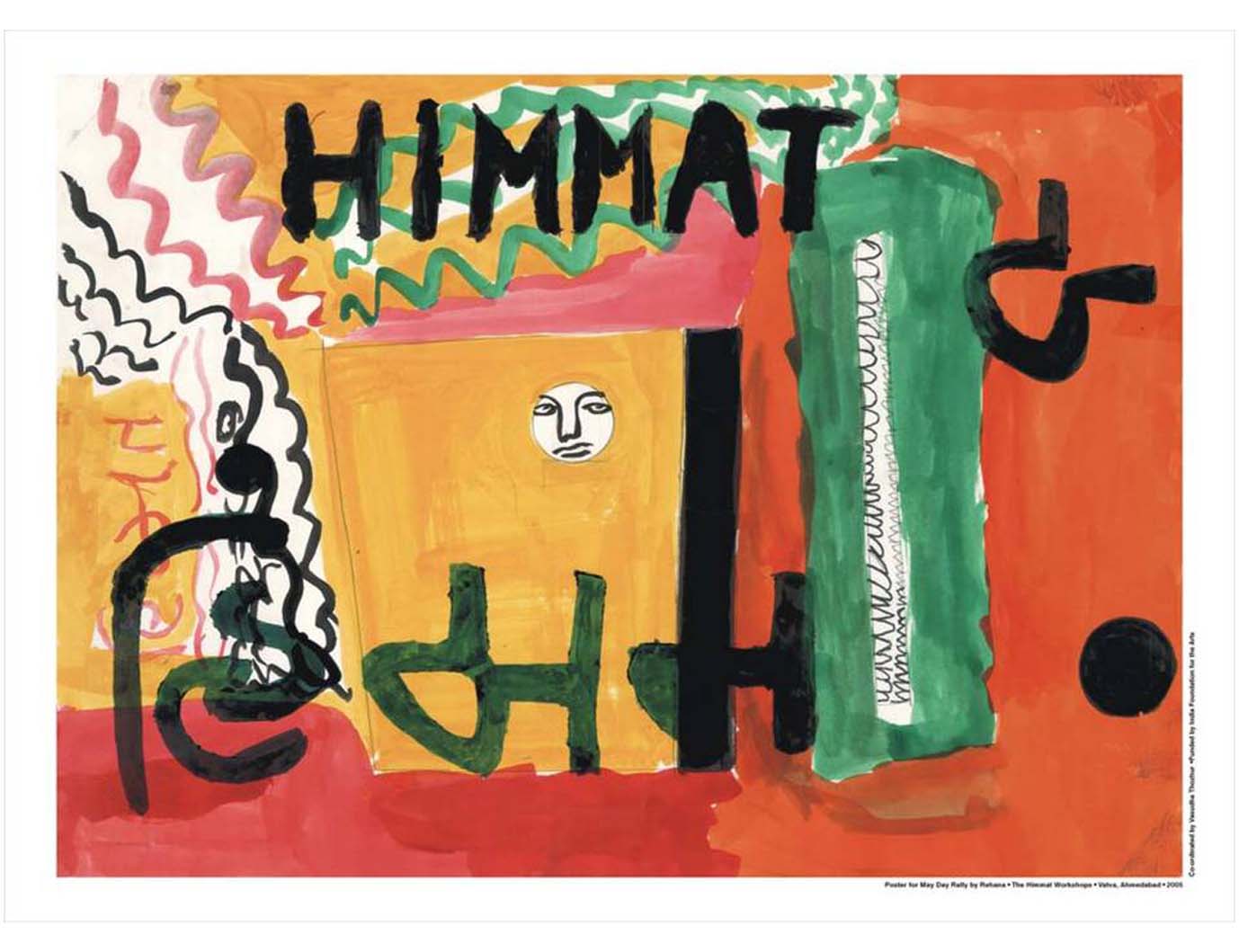 Rehana Shaikh, Untitled, 2005
Rehana Shaikh, Untitled, 2005 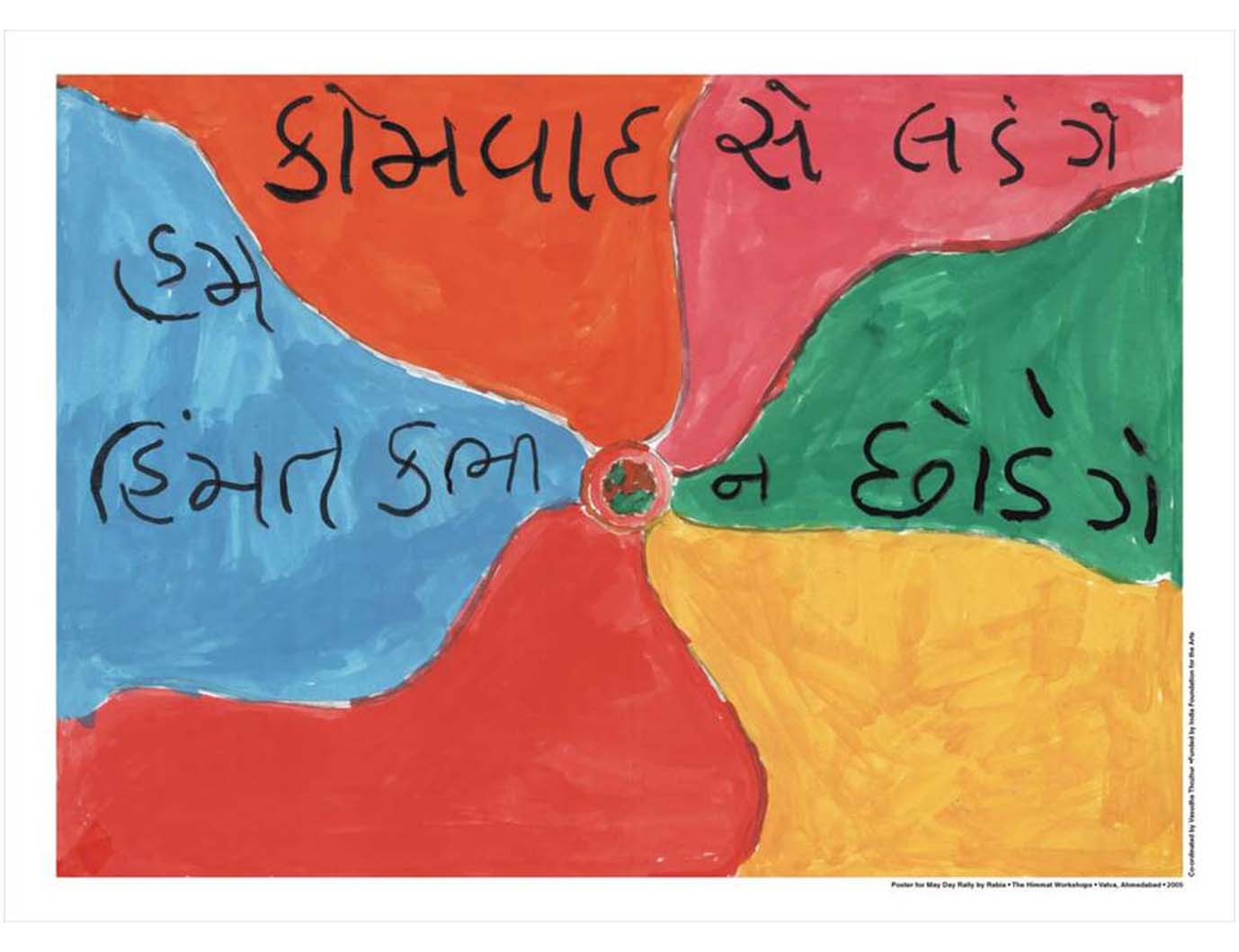 Rabia Shaikh, Untitled, 2005
Rabia Shaikh, Untitled, 2005
June / Collaborative Painting The girls painted six small canvases, 1′ by 1′, one each. In October 2006, at a residency in Khoj, New Delhi, I added seven more of my own. This was meant to be a partial fundraiser for some of the framing that needed to be done for a trial exhibit in Delhi. The work was acquired by the Vadehra Gallery, and the proceeds distributed in a manner that works towards sustainability for all concerned.
June-July / Ahmedabad Hamara Shahrukh Alam, a lawyer associated with Action Aid was involved with a stay order vis-a-vis the demolition of bastis in an area called Mahakali, after a mandir that is built there. We asked her if she would conduct a few sessions that would work towards rights-based empowerment. Between June and July Shahrukh did six sessions with the girls. To begin with, she decided to do a film based module whereby the girls would learn to critique what they were exposed to in terms of advertising/media and the visual language in general.
A VCD was hired, and set up in the centre. Shahrukh screened different kinds of films – documentary, Bollywood, activist – there were discussions afterwards which were very lively. The discussions culminated in a set of collages, using old newspapers, magazines, around some specific themes – Ahmedabad Hamara (a topic the girls chose) from different perspectives – male, female, rich, poor. The collages were in the form of collections of photographs relating to these issues.
August / Silk-screen printing Tracings were made from the photo montages, the choice of images was left to the girls. This process simplified the forms. They were rearranged as compositions pertaining to the above topics; the girls were guided as to how to convert the completed drawing into a graphic black and white format suitable for silk screen reproduction. We were thinking in terms of an affordable graphic medium, requiring hand skills the girls could learn.
The drawings were scanned and printed on transparent film. The image could then be transferred onto the screen through a simple photographic process.
Shatrughan Thakur offered to help us, as a resource person. Sharmila Sagara gave us permission to print at the studios at Kanoria Centre for the Arts. In September, we made six editions of 12 prints each. The posters are also about building a relationship with the city, and affirming a presence within it.
September / Pen and ink drawings We had developed a methodology – our resource person Shahana discussed issues with the girls during the literacy sessions, and helped them make small sketches in their notebooks. They also wrote about what they had drawn. They had developed a good understanding with her, based on shared experiences during and after the riots. One of the themes that they had worked on was the floods during the monsoons in 2005, they had drawn and written about the absence of a drainage system and the resulting difficulties.
During the screen printing session we made larger pen and ink drawings using the sketches as the basis.
September / Paintings by Tahera and Farzana Tahera and Farzana completed their printing session before the others, and one of the young artists working at the Kanoria Centre, Shanta Rakshit, took them out for some sketching and painting. Tahera made a painting of the façade of the School of Architecture, and Farzana of the sculpture on the grounds of the campus.
 Farzana Shaikh, Untitled, 2005
Farzana Shaikh, Untitled, 2005
October / Four ‘Pats’ Santa Rakshit conducted a module with the girls: the theme chosen was ‘Mother’. They made scrolls in the tradition of Bengal ‘pats’, and the narrative speaks of daily domestic routines, difficulties, struggle – also related to the aftermath of the riots of 2002 – looking for work, lining up outside the government office where the death certificates were issued, visiting injured relatives at the hospital.
October / 15 Paintings Monica Wahi conducted a session with the girls – based on three questions that they were to ask each other in private. They made rough sketches based on what they told each other, about their families, details of their daily lives; and those who died during the carnage are included in the family portraits. Apart from other things, this was an exercise in bonding; the session would help build closer relationships amongst the group.
Fifteen paintings were made on the basis of these drawings, in enamel paints (industrial) on canvas.
November 2005 – March 2006 / The Drishti Fellowship The girls won the Mirror Amdavad Fellowship (for two months, to be followed by an exhibit/ performance) after intensive interview sessions with Drishti. The concept combined painting with performance in the form of four long painted scrolls on canvas, the script of two plays written on four khadi scrolls. The plays developed from discussions within the group. Two broad themes emerged, one around the non-availability of water, the other around education. Prem, from Soumya Joshi’s troupe, trained the girls for a few days. The plays were performed at the Centre. The scrolls were toured locally, in the neighbouring bastis, as a narrative piece, and also taken out on a rally. When mounted in an exhibition space, they take the form of an installation.
April 2006 / Video Filming This module was conducted with the help of Johanna Hoyne, an art student from the Australian National University. The girls learnt how to handle a video camera, and created footage related to whatever was current in their lives – the plays that they had produced, learning to ride a bicycle, visiting the dargah, interviewing each other about the project that they had been a part of. Six films have so far been edited from this footage, most of them of a documentary nature. The editing was done during a residency at Khoj Artists’ Workshops in Delhi. The longest film, ‘Cutting Chai’, is about visiting their homes in Faizal Park.
May–June / Embroidery on Fabric This being the last formal session in terms of the sequential development of the project, the idea was to be able to translate the drawings, paintings, and other forms of visual output into motifs and narratives on fabric. They could then be sewn into cushion covers, curtains, wall hangings: functional household and other accessories that could be sold to generate an income. With Santa Rakshit the girls learnt to work with the traditional kantha form of embroidery. An important aspect of this module is the originality of the motifs and other elements used, evolving as they did entirely from the girls’ work – thinking about the market does not necessarily preclude creative expression arising from the experiences of a community. They can in fact enter the commercial stream as personal expressions which have the added component of sustainability in the financial sense of the word, while still remaining an authentic record of an evolving cultural consciousness. We framed the cushion covers because they were rich in imagery and narrative.
October / Quilts With the samplers that the girls had made while learning different stitches, and with pieces of hand block printed, vegetable dyed fabric, we created two quilts that are installed along with the other exhibits, guided by Neha and Deepa Sharma.
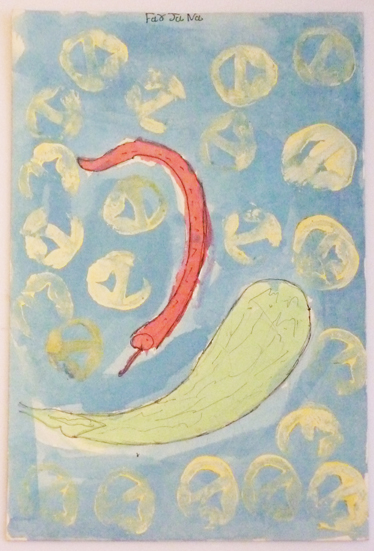 Farzana Shaikh, Still life, 2005
Farzana Shaikh, Still life, 2005
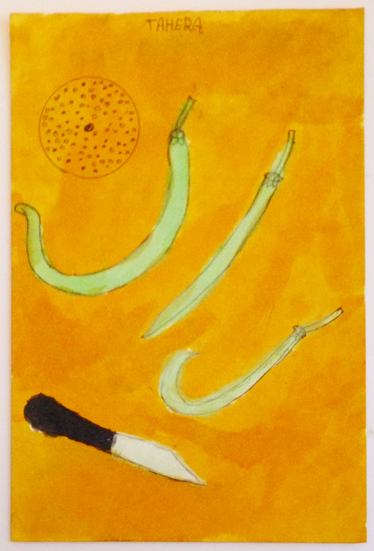 Tahera Pathan, Still life, 2005
Tahera Pathan, Still life, 2005
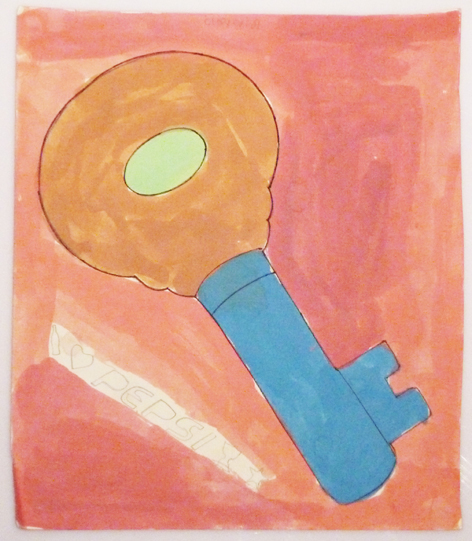 Taslima Qureshi, Untitled, 2005
Taslima Qureshi, Untitled, 2005
 Farzana Shaikh, Untitled, 2005
Farzana Shaikh, Untitled, 2005
 Portfolio of participants, 2005-06
Portfolio of participants, 2005-06
How did the project impact your work?
If I have to put it in a nutshell:
It exploded the frame within which art functions, and re-situated it in the reality outside the frame.
It re-affirmed my faith in art as I experienced it outside the frame.
The frame itself began to seem less constricting, as it was not merely a fragment of the infinitude.
It gave me immense political clarity, which I was able to apply to everyday life and work.
Art as I now see it is a flow which cannot be contained, and therefore is the source of life.
It works against confinement and abrupt terminations – and is in the truest sense anti-war and anti-violence.
To be able to see it in this light would be to take the next step towards a more evolved state.
Painting acts out this belief.
Painting as a material presence is a record of the process which accompanies it.
Could you tell us more about the afterlife of Himmat; the young artists’ personal and professional lives since the workshops?
All the girls in the group are now married with families. Rabia and Shah Jehan continue to work with other members of their families for the wholesale garment market. Tasleem has moved back to Naroda Patia. The girls periodically paint the walls of the centre, and also work with volunteers who regularly visit Himmat. Tahera attends community workshops regularly, as one of the Himmat representatives, as she is vocal, articulate and has strong views on most things.
More on the conception of the Himmat Workshops:
(Excerpts from a 2007 interview provided by the artist)
The project was most active on that front between 2002 and 2007 as it involved fieldwork and direct interaction with the community. Himmat, the collective that I worked with, had already been set up, and certain essential questions such as livelihood had already been addressed. One merely facilitated the natural process of rehabilitation in the way that one knew best, as an artist, through creativity. My contribution was to set up a small art center. A range of activities were generated, all of them linked to the existing framework, and to events of significance to the community.
The idea was not to impose, but to weave into the fabric of everyday life, vocabularies and ways of expression that were not dependant on verbal literacy – expression signifies an assertive presence in the world, and is essential for survival.
The power of the image, and the power of art are inextricably intertwined with expression. But it is ironic that art that characterizes the mainstream has been robbed of that power, while art that exists outside of it prevails – in advertising, entertainment and in politics. People’s lives are shaped by the latter, and not by so-called works of art. What went wrong? One of the aims of the project was to investigate this paradox.
2002 in Gujarat was a turning point, personally and politically. There was an overlap in terms of a destruction of belief, a crisis of faith – in humanity and in art. Art cannot be anything but political, in that it is imbued with one’s world-view. Everything hinges upon this – the choice of subject-matter, the manner in which it is expressed and shown, the range of art-related activity that one is engaged in, the life one chooses to live. Whether it is lived in the studio or out of it does not impact its authenticity – or lack of it. After a phase of fieldwork, I did several talks and presentations in different cities and institutions – which were as much a part of the ‘project-as-an-artwork’ as the paintings, prints, posters or anything else. It was and still is important to create different kinds of platforms to communicate what occurred, and to present it through changing perspectives as we travel further and further away from the immediacy of the experience. Somehow it never seems to lose its relevance.
The work has therefore entered a different phase, as you can see. I no longer feel any guilt in working from my studio, its what I am best at, and the project has restored to me the faith that I had lost. I think that the processes that lead to art-making are situated in the real world, and involve decisions that impact the social and political spheres. Art gives a form to this process, makes it visible – and in that it is self-fulfilling, or what one would call art for art’s sake – a much maligned term. At that point one has to suspend other concerns and concentrate on language and expression. Otherwise what one creates is neither community nor art.
Despite varying degrees of emphases, all art is public, in the broadest sense, and subjectivity is the prism that throws light on a worldview which is in continuous formation. The studio embodies this position. It is at the threshold to a world whose dimensions are informed by the senses, through which we perceive and interact with what is outside of us. An active use of the streams of language that radiate from this space give rise to different modes of engagement, in quality and quantity, and is a more complex way of envisioning the continuities of our shared space. Within the limitations of each aspect of this space, there is room for an active inter-subjectivity in relationship to those who we work with or address. There are qualitative differences, but space is always public if we are conscious of the communicative potential of our work.
(Excerpt from a 2016 paper by the artist)

Vasudha Thozhur, ‘Portrait of Shah Jehan’, 2008-11 / Read more here
See here for details about the Himmat group’s exhibitions and grant awards (pdf).
Watch Rakesh Sharma’s documentary Final Solution here, or an excerpt here on the Indian Cultural Forum (ICF) site.
Click here to read ICF’s 2016 interview about the Gujarat pogrom with human rights activist Teesta Setalvad.
You can also read a report about the pogrom by Human Rights Watch, ‘We Have No Orders to Save You’, here.
Farzana Shaikh, Rabia Shaikh, Rehana Shaikh, Shah Jehan Shaikh, Tahera Pathan, Taslim Qureshi, and Vasudha Thozhur
Kilkari Rainbow Home for Girls
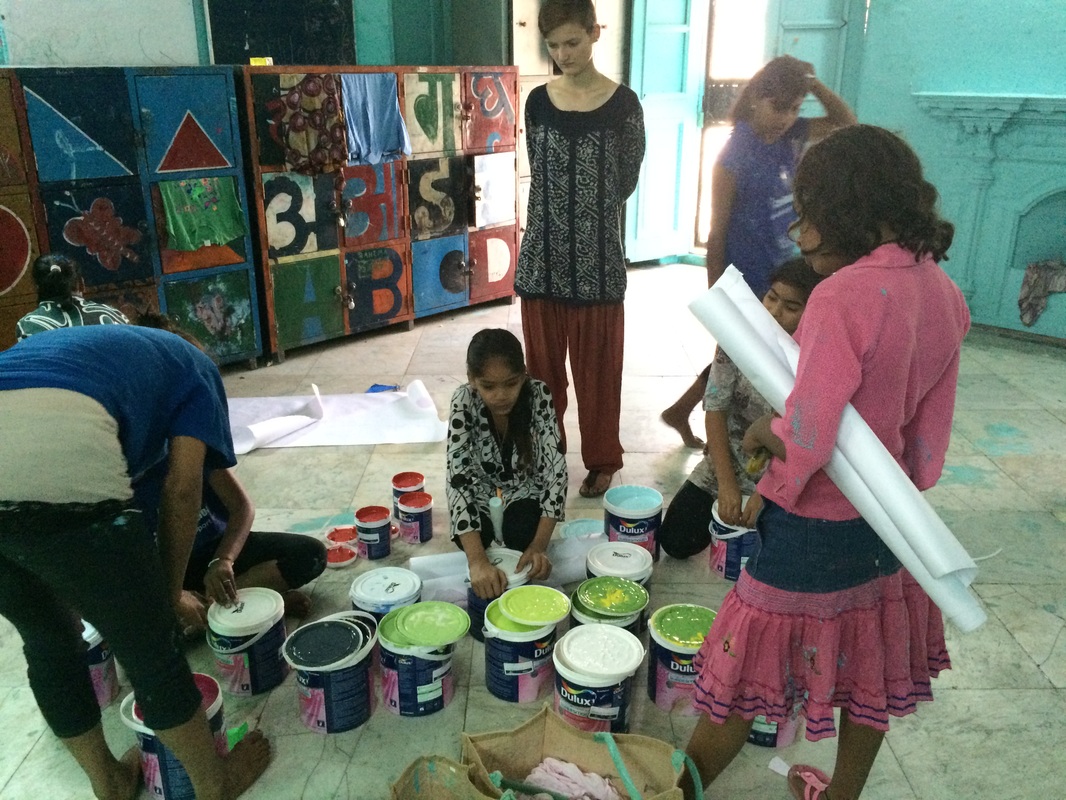
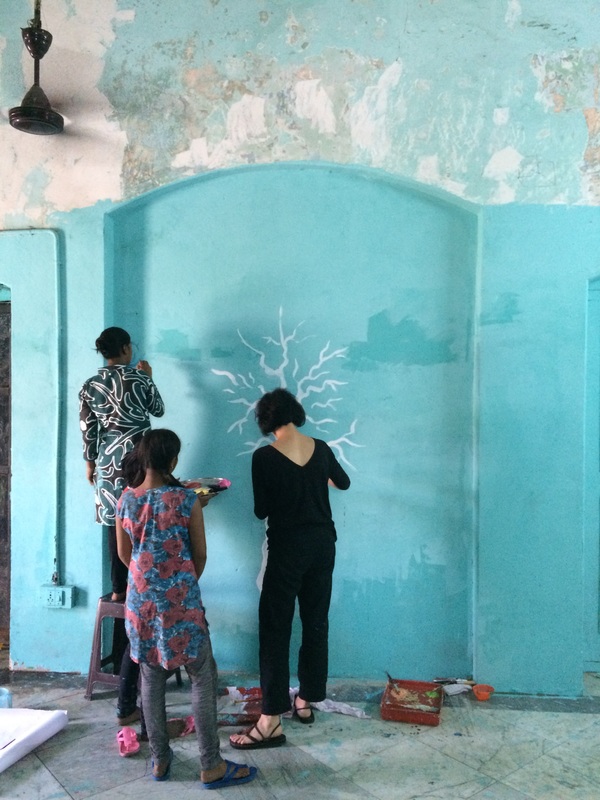
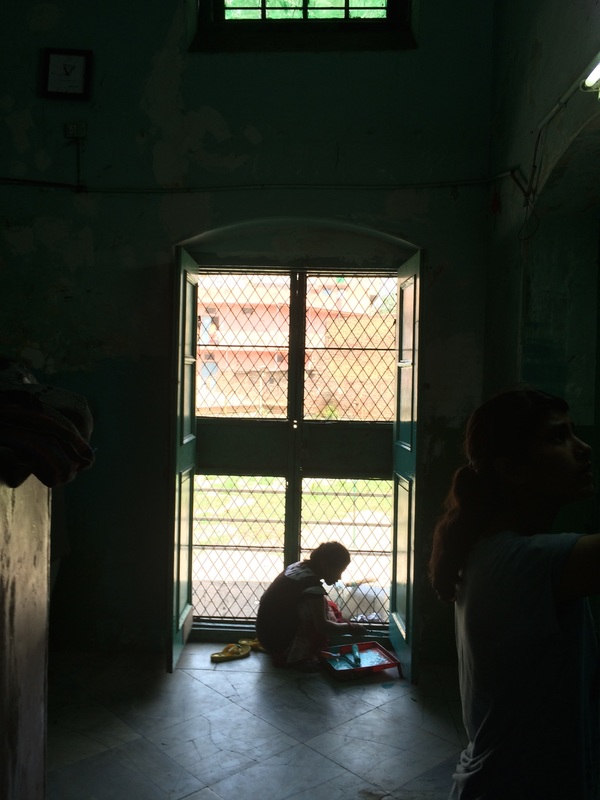

‘I also showed them how other artists have dealt with these: impressionists, Indian and Persian miniatures, Rousseau and some others I chose.’
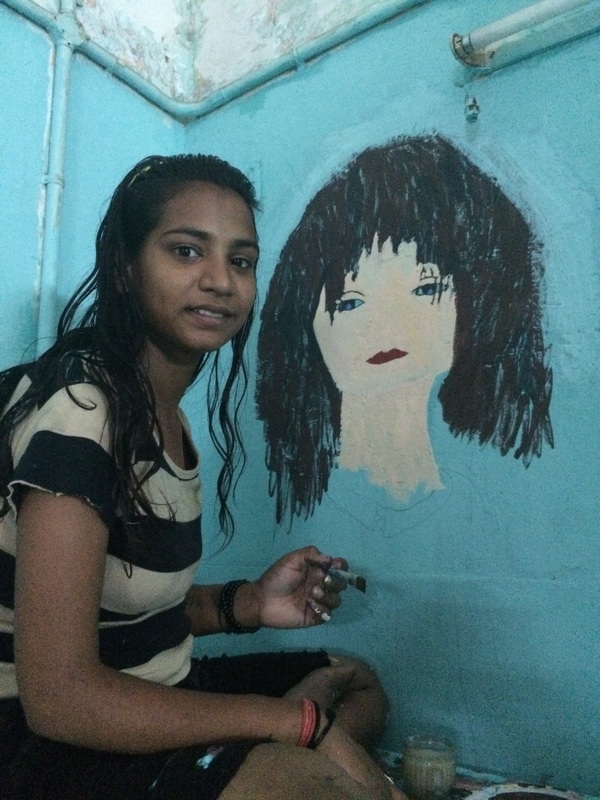

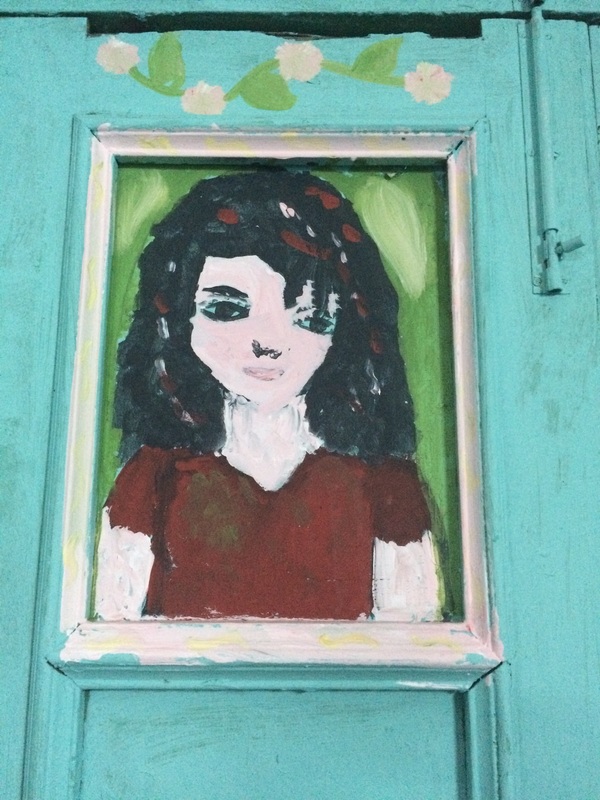
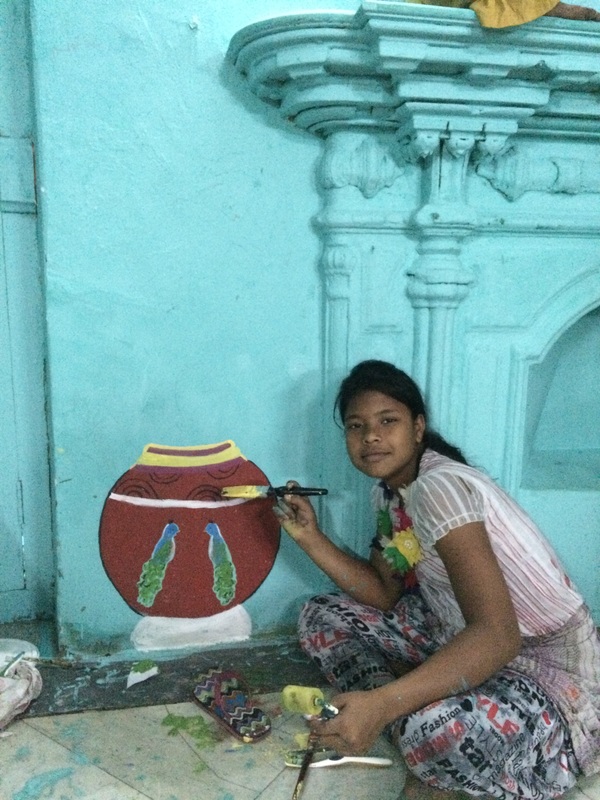
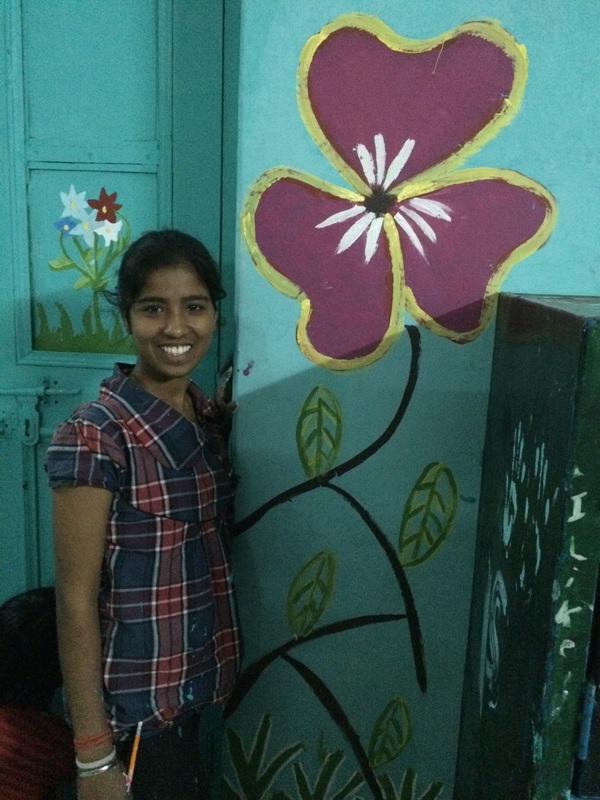
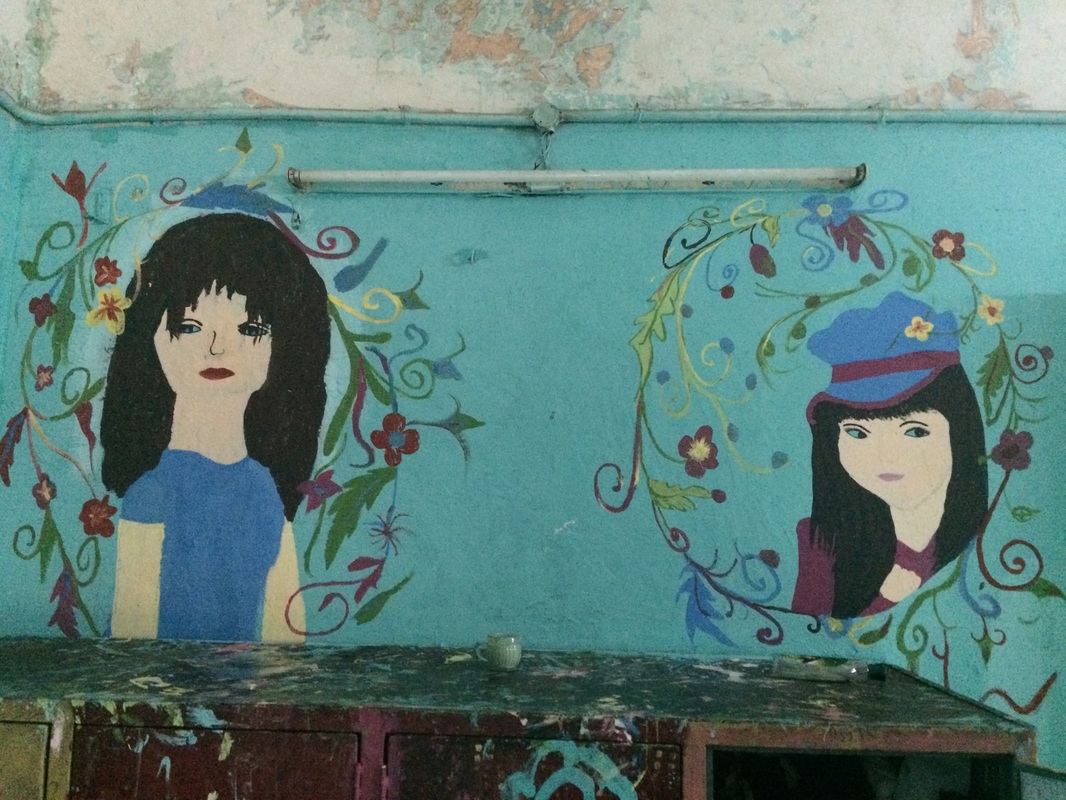

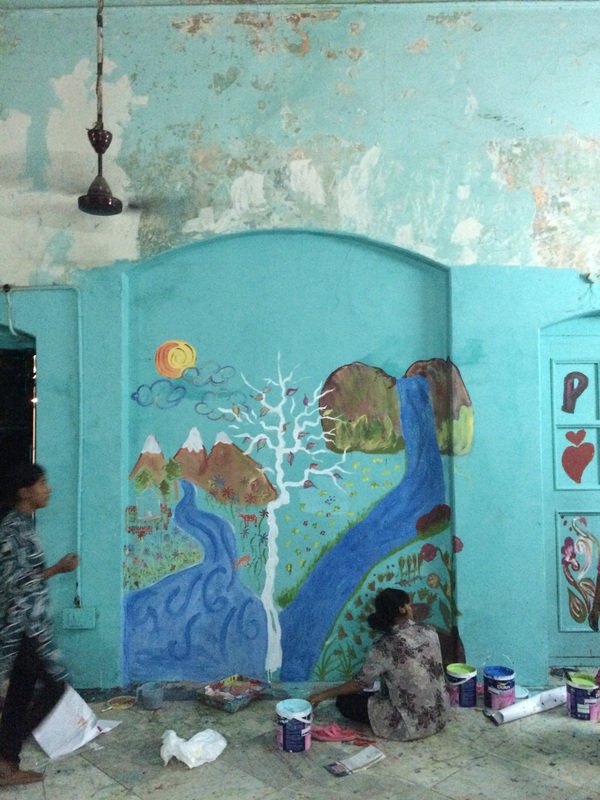


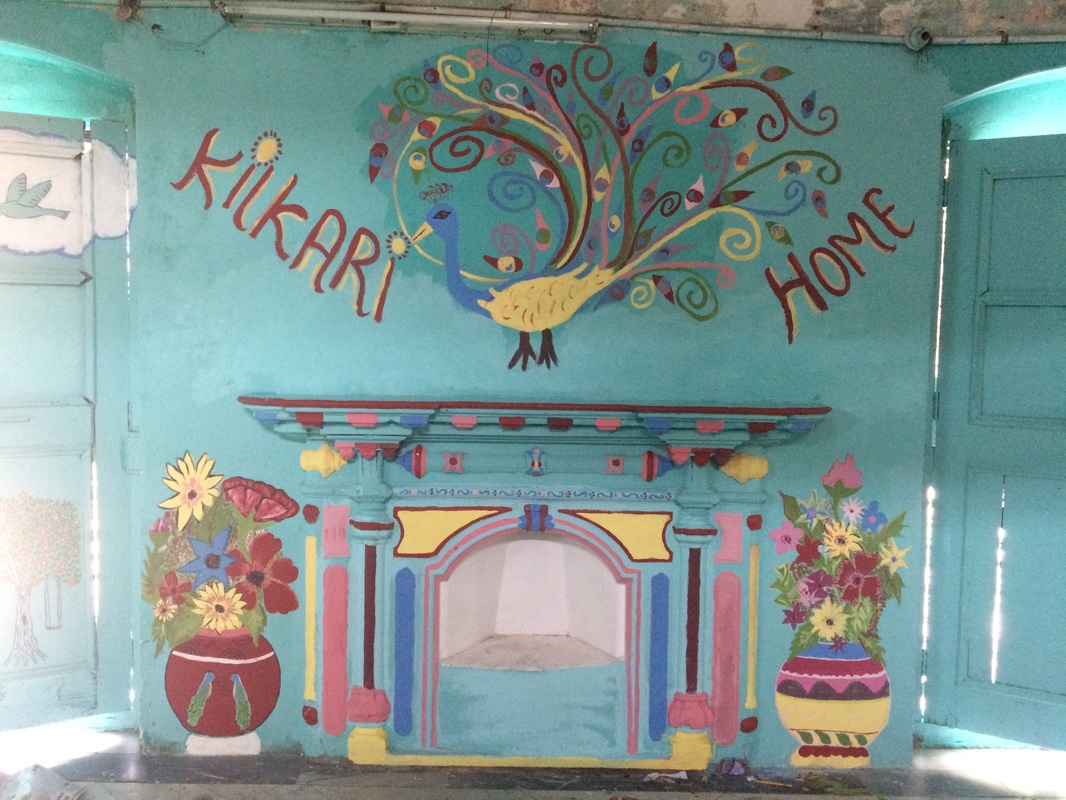
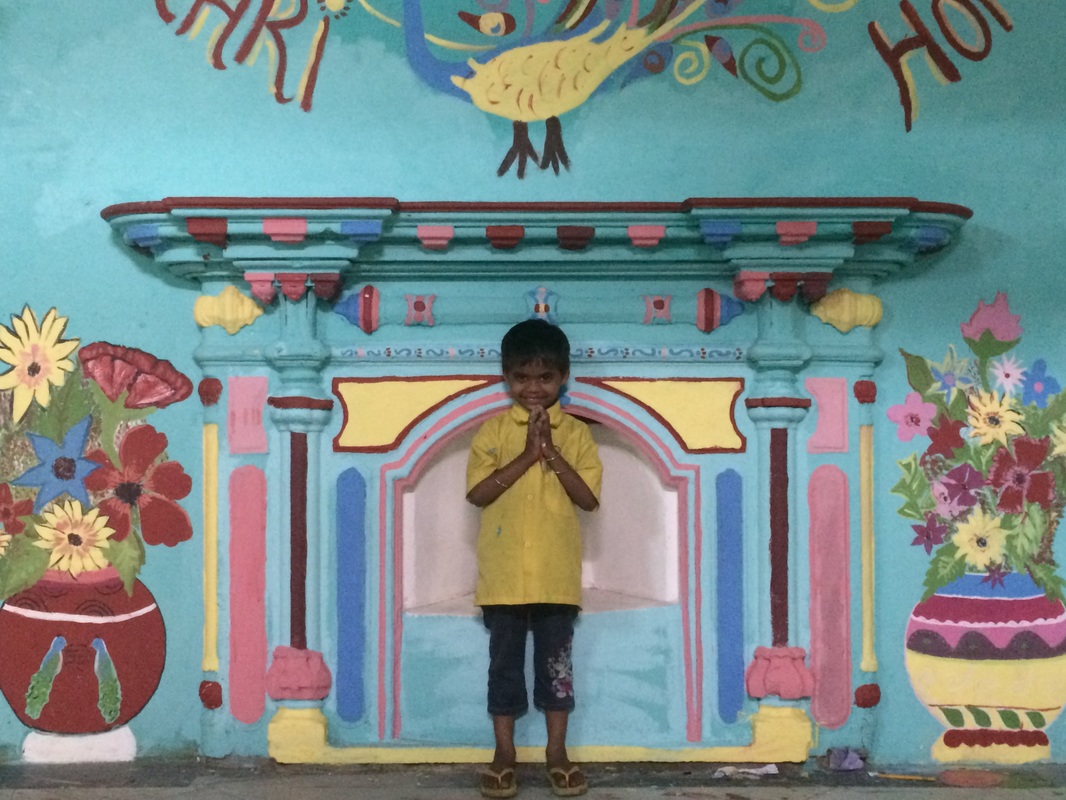
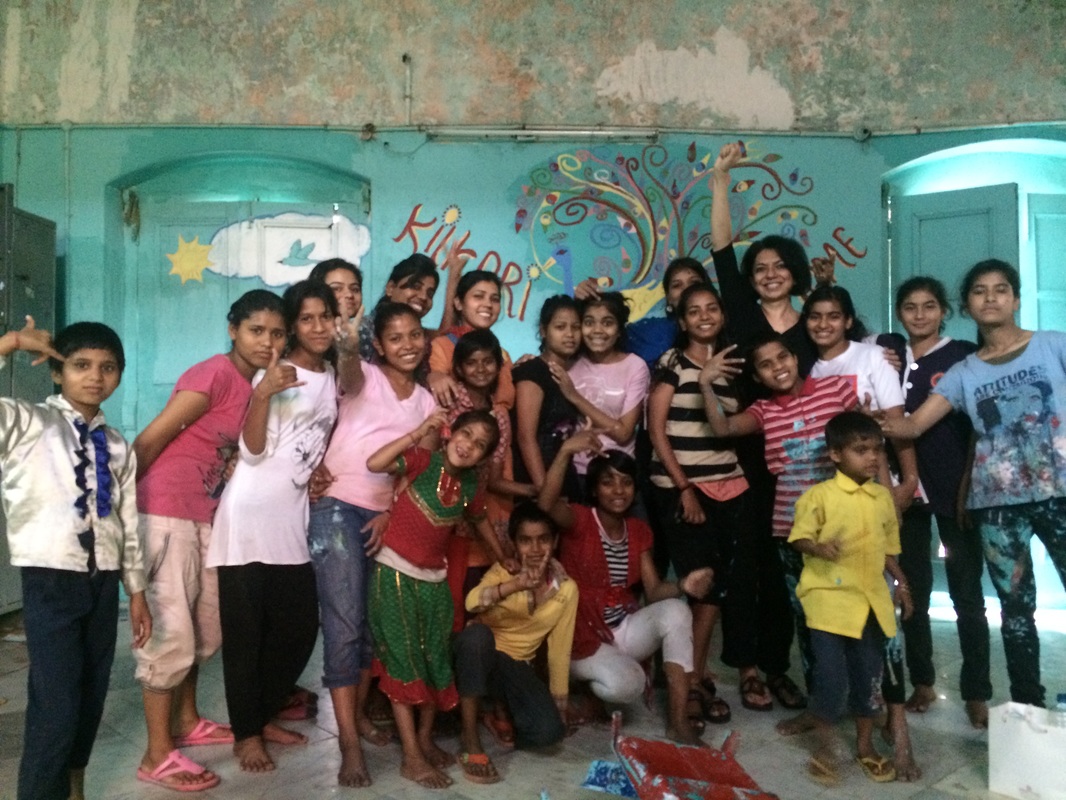
Gallery Guftugu
